Since 2003, over 15000+ Customers Explored Silk Road with us
- [email protected]
- +86 135 6583 4056

Top Silk Road Destinations

- China Silk Road Tours
Silk Road Xinjiang Tours
Silk Road Photography Tours
Silk Road Winter Tours
Luxury Silk Road Tours
- Great Silk Road Tours
15 Days Great Silk Road from Kashgar to Tashkent
20 days silk road to uzbekistan kyrgyzstan & china, 23 days uzbekistan to pakistan via karakoram highway.
10 Days Silk Road Xinjiang and Bishkek Kyrgyzstan
16 Days Silk Road Travel to Uzbekistan and China
11Days 5Stan Adventure
- Silk Road Group Tours
7 Days Classic Xinjiang Tour to Kashgar, Turpan and Urumqi
7 days silk road group tour to gansu & qinghai.
18 Days Travel Silk Road in China with Escorted Guide
19 Days Xinjiang China and Uzbekistan Tour
- Oriental Express
- Expat & Group Tour
- China Group Tours
- North Xinjiang Tours
- South Xinjiang Tours
- Xinjiang Border Transfer
- Xinjiang Trekking Route
- Top China Tours
- Gansu Tours
- Qinghai Tours
- Yunnan Tours
- Sichuan Tours
- Fujian Tours
- Ningxia Tours
- West China Tours
- Hainan Tours
- Inner Mongolia Tours
- Northwest China Tours
- Tibet Tours
- Jiangxi Tours
- Guizhou Tours
- Northeast China Tours
- Beijing Tours
- Xi'an Tours
- Shanghai Tours
- Chengdu Tours
- Zhangjiajie Tours
- Kashgar Tours
- Zhangye Tours
- Dunhuang Tours
- Lanzhou Tours
- Pingyao Tours
- Urumqi Tours
- Turpan Tours
- Guangzhou Tour
- Chongqing Tours
Cities of Silk Road

Silk Road Destination
Turkmenistan
Top Destinations

- The Best Silk Road Tour Operator
- Words from Our CEO
- Travel agency cooperation
- How to book Your Silk Road Tour
- Silk Road Review
- Cancellation Policy
- Tailor Made
- Silk Road Guide
- Customize your trip
Email: [email protected] Tel: +86 135 6583 4056
12 Days Ultimate Xinjiang: Kashgar & Stunning Kanas
6 days gansu silk road to rainbow mountain & mogao grottoes, 6 days kashgar in-depth tour, 8 days china tour to qinghai and gansu, 23d join-in group tour to xinjiang, silk road & tibet, silk road travel.
Since 2009,Over 12000+ Customers of Silk Road.
Silk Road Travel, Experience the Thousand Years of Vicissitudes
Follow the footstep of Marco Polo to explore the fascinating histories of the ancient trading Silk Road route, enjoy the distinctive cultures and art, as well as the ethnic styles and folk customs. Our adventures begin from the start point of Xi'an , may add Luoyang. Express train to Qinghai Province or Hexi corridor of Lanzhou, Wuwei, Zhangye, Jiayuguan, and Dunhuang , passes the vast Gobi desert and mountains to Xinjiang . Witness the wonders of Terracotta Warriors, the Buddhism treasure of Mogao Grottoes , the mystery of Taklamakan desert, the bustling Kashgar Bazaar . You can extend your overland trip to Central Asia of Kyrgyzstan, Uzbekistan, Kazakhstan . As the Excellent Silk Road Tour Operators , we promise you a great holiday with our 15years' experience, the attention to detail, and offer of the best of everything!
Most Popular Silk Road Travel Itineraries in Small Group
Traveling is one of the best ways to know new friends . Traveling Silk Road and China in a small group is afforable and more fun . There are thousands of travelers joined our small groups in the past years and 99% are very satisfied with our arrangements and service. We are here to provide inbound tourists and expats in China the most fantastic tours. No matter traveling along the silk road from Dunhuang, Gansu or Xi’an to the far west China like Xinjiang and Tibet .
Kashagar-Taxkorgan-Urumqi-Heavenly Lake-Turpan
$1020 View Details
Dunhuang - Jiayuguan - Zhangye - Xining - Chaka
$980 View Details
10 Days Silk Road Group Travel to Xinjiang, Gansu & Qinghai
Urumqi - Turpan - Dunhuang - Jiayuguan - Zhangye - Xining - Chaka
$1450 View Details
13 Days Silk Road Group Tour: Xinjiang, Gansu, Qinghai
Kashgar - Urumqi - Turpan - Dunhuang - Jiayuguan - Zhangye - Xining - Chaka
$2070 View Details
11 Days Xinjiang Group Tour to Kashgar & Kanas
Kashgar-Taxkorgan-Urumqi-Turpan-Beitun-Hemu-Kanas-Urho
$1890 View Details
11 Days North Xinjiang Group Tour to Kanas Lake, Nalati Grassland and Sayram Lake
Urumqi - Fuhai - Hemu - Kanas - Burqin - Dushanzi - Yining - Tekes - Naraty
$1580 View Details
Most Popular Silk Road Tours
Silk Road Travel will provide a life-time adventure for you. Create your own silk road trip from the sample itineraries below. Our experts will tailor-made an intimate and delightful adventure to meet all your needs. The choices are endless!
11 Days China to Kyrgyzstan Overland Tour: Urumqi to Bishkek
Urumqi - Kashgar - Tash Rabat - Kochkor - Issyk Kul - Bishkek
$1909 View Details
Kashgar - Kuqa - Turpan - Urumqi - Uzbekistan
$3738 View Details
8 Days of Silk Road Tour from Lanzhou to Urumqi
Lanzhou - Zhangye - Jiayuguan - Dunhuang - Turpan - Urumqi
$1633 View Details
12 Days China Silk Road Train Tour
Urumqi - Turpan - Dunhuang - Jiayuguan - Zhangye - Xining - Lanzhou - Xian
$2967 View Details
11 Days Silk Road Xinjiang Tour
Kashgar - Urumqi - Turpan - Dunhuang - Xian
$2599 View Details
10 Days Silk Road Tour from Kashgar to Xi'an
Xi'an-Kashgar-Urumqi-Turpan-Dunhuang
$2400 View Details
18 Days South Xinjiang and Silk Road Tour with Badan Jaran Desert Safari
Kashgar - Taxkorgan - Hotan - Kuqa - Turpan - Dunhuang - Jiayuguan - Badan Jarain - Zhangye - Xining
$4160 View Details
9 Days Luxury Silk Road Tour from Xi’an to Urumqi
Xi'an - Dunhuang - Turpan - Urumqi
$1750 View Details
12 Days Silk Road Tour from Lanzhou to Kashgar
Lanzhou - Zhangye - Jiayuguan - Dunhuang - Turpan - Urumqi - Kashgar
$4600 View Details
Extend Your Silk Road Tour
Extend your silk road tour to the top destinations of China and neighbour countries. We are always here to waiting for you.
18 Days Silk Road and Northern Xinjiang Tour
15 days silk road and tibet adventure, 14 days fascinating maritime silk road to xi'an dunhuang and xinjiang, 16 days silk road and yunnan, what our customers say.
Lesley and her team have arranged 10000+travelers to fulfilled their dreamed adventure to silk road and other destinations of China. Her passion is to create fabulous,perfect memories for every client with her professional,dedicated and enthusiasm. We are very proud to have the excellent reviews.

Reviewed on May 22, 2024
from Singapore
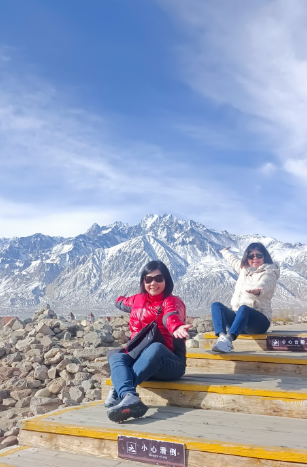
Reviewed on Mar 18, 2024
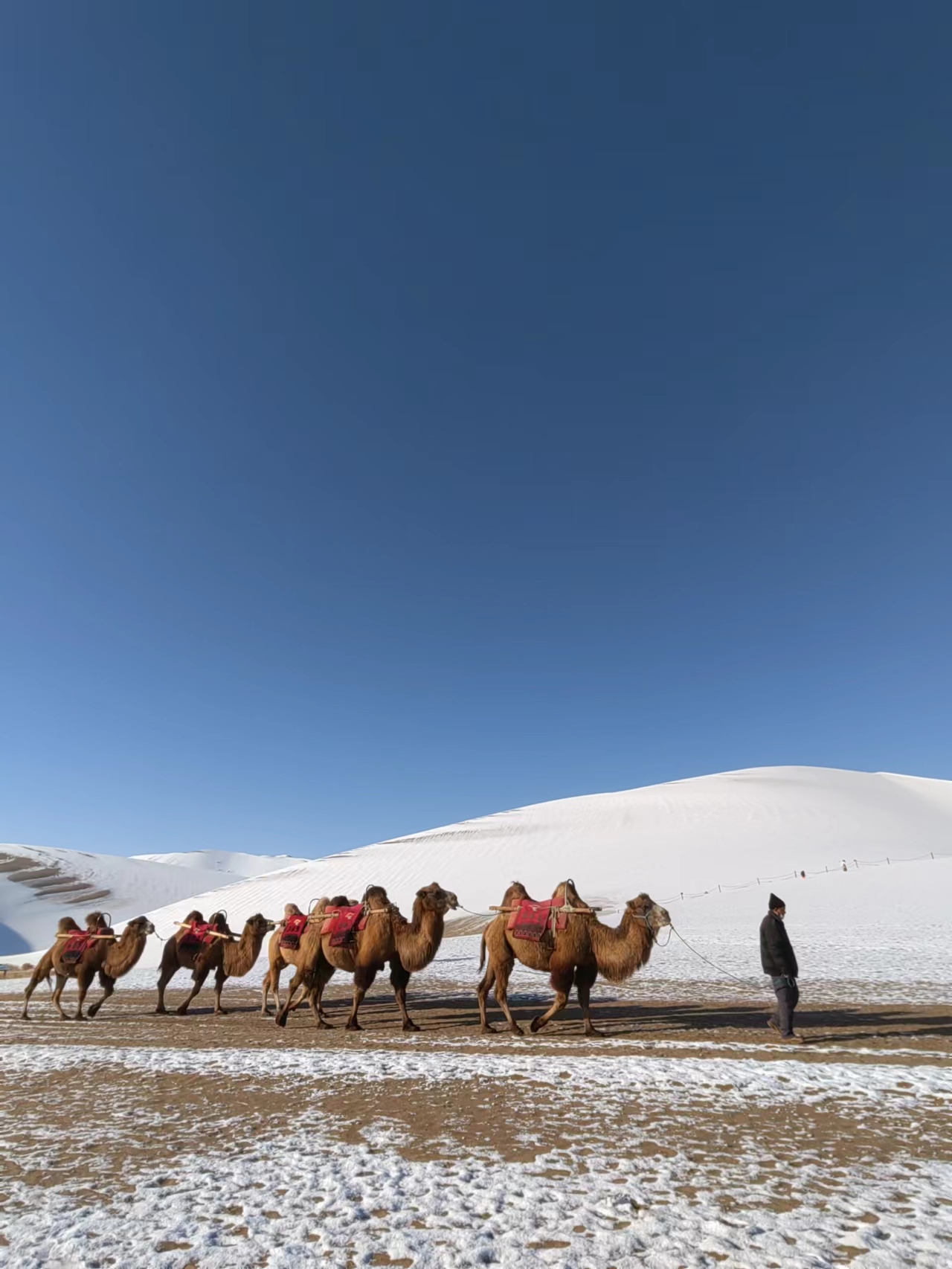
Reviewed on Dec 18, 2023
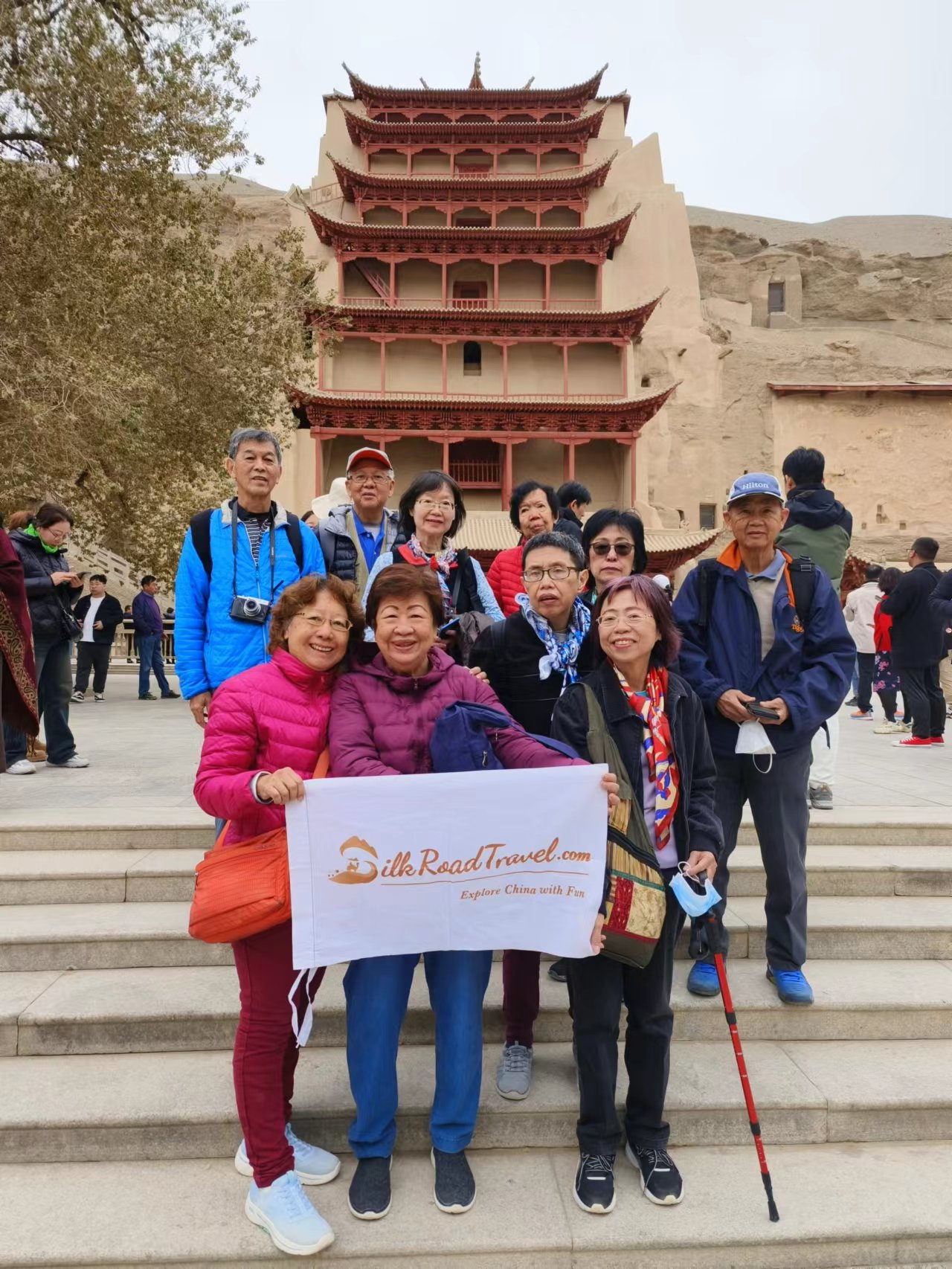
Reviewed on Oct 26, 2023
from Malaysia
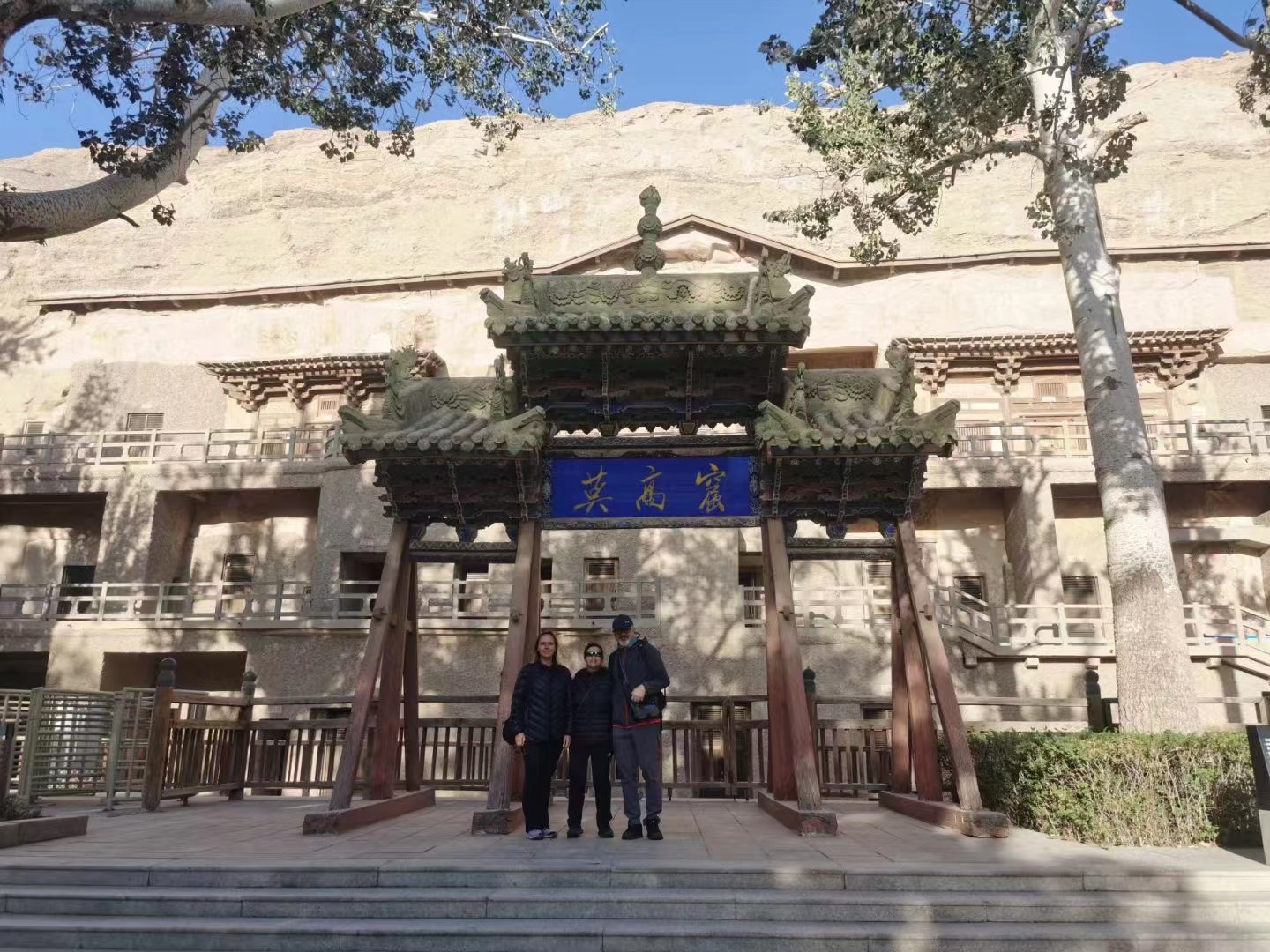
Reviewed on Oct 08, 2023
from Turkey
We are on the plane to Shanghai and we are so happy enjoying this beautiful road trip. Congratulations to all of the Silk Road Adventurers team. Murat and Canan
Hello! I am also about to board. I really appreciate you all for making this trip a memorable one🤗. All the best🌹
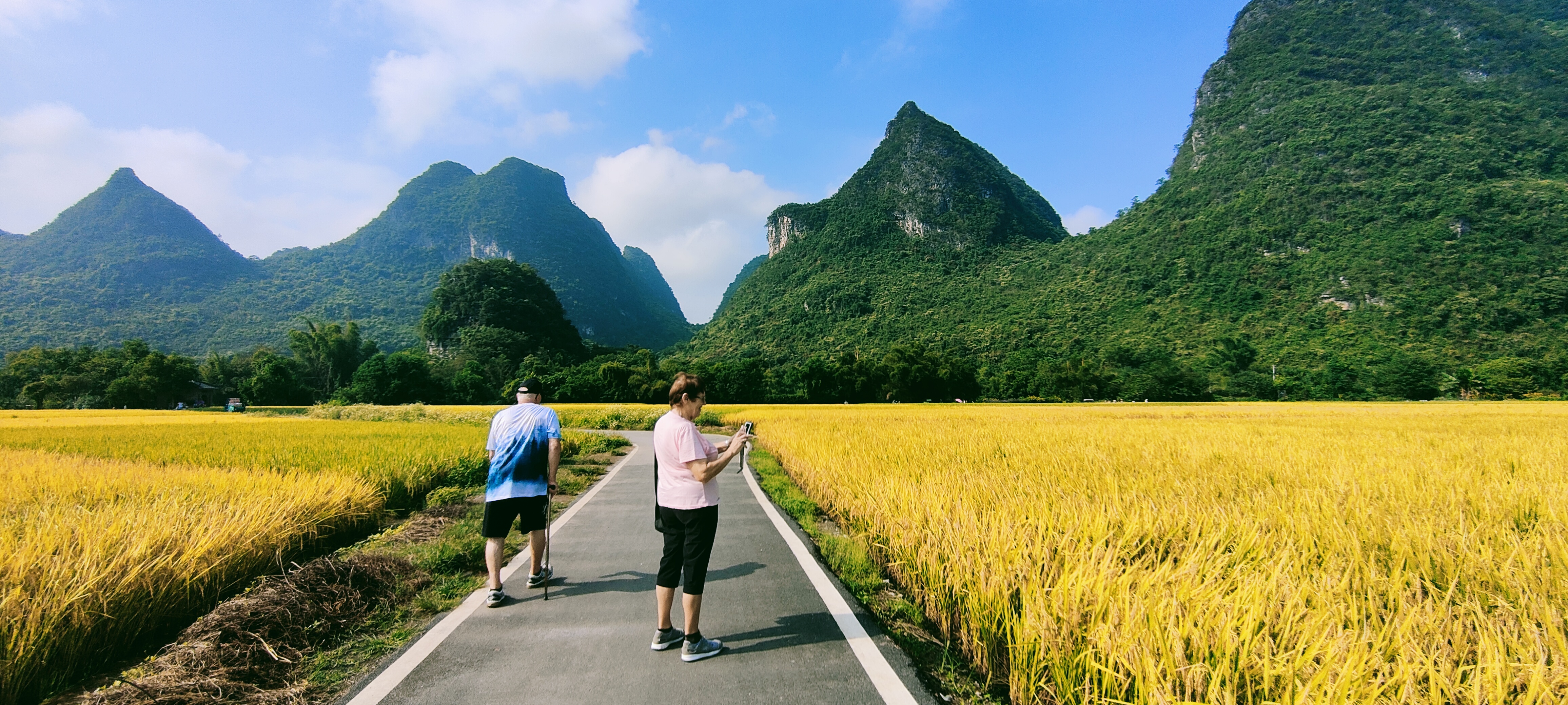
Reviewed on Sep 27, 2023
from Canada
Thank you so much! My parents ABSOLUTELY LOVED THE TOUR!!!!! They are talking about it! THANK YOU SO MUCH!!! They even said the guide treated them so nice and he is a sweetheart. They appreciate you because you went above and beyond. Your bosses should know how great you are!
Why Choose Us
100% tailor made.
Your entire holiday is designed around your requirements .
Explore your interests at your own speed .
Select your preferred style of accommodation.
Create the perfect trip with the help of our specialists.
Expert Knowledge
All our specialists have travelled extensively or lived in their specialist regions.
The same specialist will handle your trip from start to finish .
Make the most of your time and budget .
Professional Arrangements
Friendly and Professional Guides and Drivers
No Shopping Stops and Hidden Cost
Lowest Price and Excellent Service Promised .
24/7 Customer Service.
Trusted service
Reputable & Licensed Travel agency established in 2005.
Professional and skilled Tourism staff with dedicate 1-1 Service.
Best Possible arrangement to experience the culture and local lifestyle.
No lost if cancel the tour 30days in prior without train and flights.
Latest Silk Road Travel Information
Here are the updated information along this mysterious route! Fresh ideas and tips about the destinations on the Silk Road Travel.From the starting city of Xi’an in China to the famous trading post of Bukhara in Uzbekistan.Our team personally visited most places on our website. Believe you will have a wonderful holiday with our authentic experience and knowledge.
Sven Hedin in Xinjiang 130 years ago
March 17th, 2022
Gansu May Travel
October 22nd, 2021
My Impression of Kashgar
March 02nd, 2021
How to Travel to the Silk Road Hexi Corridor
February 26th, 2021
Info Enteriies

Our Clients Travel Stories
- Stuart’s Travel blog
- Malaysian Group North Silk Road Story
- Liz’s Great Silk Road Blog
- Elsa’s Xinjiang Silk Road Blog
- Singapore Group South Silk Road Story

- Email: [email protected]
- TEL: +86 135 6583 4056
- Sightseeing
- China National Silk Museum
- China Silk Photos
Basic Facts
Other routes, scenery along the road, silk road adventure, you may like.
- 1.1 Disruption during Age of Sail
- 4.1 Xi'an to Dunhuang (Hexi corridor)
- 4.2 Around the desert (Tarim Basin)
- 4.3 Central Asia (Transoxiana)
- 4.4 Middle East
- 4.5 Alternatives
- 4.6 Related routes
- 5 Maritime Silk Road
- 7 Stay safe
The Silk Road (丝绸之路 sī chóu zhī lù ), also known as the Silk Route , is not a single road, but a network of historical trade routes across Asia from China to Europe . One poem calls it "The Golden Road to Samarkand" .
In 2014, UNESCO added "Silk Roads: the Routes Network of Chang'an-Tianshan Corridor" to their World Heritage List . This is a 5000-km (about 3300 miles) stretch from Chang'an (now called Xi'an) in central China to the Tianshan mountain range along the border between China and Central Asia . The western end is the region once known as Zhetysu , now divided between Kazakhstan and Kyrgyzstan ; its main cities are Almaty and Bishkek . This was only the first of several applications for Silk Road routes; several more are being planned but each nation can nominate only one candidate a year so it will take time to get through the whole list.
Another section, "Silk Roads: Zarafshan-Karakum Corridor" through Tajikistan , Uzbekistan and Turkmenistan , from the Zeravshan Valley to around Merv , was added in 2023.
Many sites along the historic overland routes are already on the UNESCO list. At the two ends, Xi'an and Istanbul are both listed. In between Samarkand , Bukhara , Merv , Tabriz , Damascus and others are on the list. Several of the great ports on the maritime routes are also listed.
Caravans have been travelling the Silk Road for over 2000 years; Chinese silk was reaching Rome and Roman glass was reaching China before 100 BCE.
Trade over parts of the route is far older; there was trade between the Indus Valley Civilisation and Ancient Mesopotamia before 2000 BCE (cities like Mohenjo-daro in Sindh and Nineveh in Iraq ), jade from Khotan in what is now Xinjiang was reaching central China by around 1500 BCE and the Persian Royal Road connected the Mediterranean port of Sardis to the Persian Gulf ports in the 5th century BCE. Around that time there was extensive trade all across the Persian Empire , which was centred in what is now Iran and in those days included much of the Caucasus , Central Asia and what is now Turkey .
Around 330 BCE, Alexander the Great conquered from Greece to Egypt , where he founded Alexandria , which later became a great trading city, the main depot for goods from the Maritime Silk Road going to the Mediterranean . Then he turned East and conquered the Persian Empire , which then included much of Central Asia , and after that he took much of Pakistan and parts of northern India . His empire fell apart after his death, but trade continued. He founded what is now the city of Khujand in Tajikistan and took Samarkand ; both cities later became centres of Silk Road trade.

In the 2nd century BCE, Emperor Wu of the Han Dynasty defeated the Xiongnu (a belligerent confederation of nomadic peoples of the steppes, perhaps related to the Huns who later conquered part of Europe) and established Chinese control over parts of Central Asia for the first time. The pacification of the Xiongnu provided the necessary stability for traders to safely traverse the route, resulting in the first Silk Road being established. In this period, envoys from both Alexander's successors and the Chinese court reached Kashgar ; this seems to have been the first contact between China and Europeans .
Although it later declined as China descended into war and anarchy with the fall of the Han Dynasty, the route was re-established and expanded under the 7th century reign of Emperor Taizong of the Tang Dynasty after he defeated the Eastern Turks and Western Turks, and re-established Chinese control over much of the parts of Central Asia that were previously ruled by the Han Dynasty. However, the route gradually declined following the fall of the Tang Dynasty, and would eventually be shut during the 15th century, when the ruling Ming Dynasty decided to adopt a policy of isolationism.
From Alexander's time until the Russian expansion into Central Asia in the 19th century, there was usually some powerful Empire at the centre of the Silk Road. The region was conquered by outsiders three times – Alexander, the Arabs in the 7th century CE and the Mongols in the 13th. At other times it was ruled by various incarnations of the Persian Empire or by other empires based in Central Asia, and sometimes these empires included various adjacent regions. Whoever was in charge, trade continued.

One Mongol descendant was Tamerlane who ruled much of Central Asia in the 14th century; his palace in Samarkand , the Registan, is now a World Heritage Site and one of the Silk Road's best-known attractions. He was a conqueror who dreamed of rebuilding Genghis's great empire. Tamerlane invaded India , Syria , Anatolia and the Caucasus and took cities as diverse as Delhi , Damascus and Moscow ; he died while en route to attack China. His descendants created the Mughal Empire in what are now India and Pakistan.
Much more than just silk was traded over this route. Trade was restricted to relatively expensive goods – hauling something like rice or lumber over long distances was not economical with medieval transport – but there was quite a variety of those. Porcelain, glass work, fabrics other than silk, other fine craft items, gems , and furs were traded. So were luxury food items, in particular spices . Coffee , originally from Ethiopia , and tea , originally only from China , first reached the rest of the world via these routes. In medieval London or Paris, pepper cost more than its weight in gold.
Carpets were historically a major trade item and even today, countries along this route produce many fine carpets; these are a major export commodity and a fine thing to bring home as souvenirs. If you bargain moderately well, they are considerably cheaper here than in other places. There is a phenomenal range available, with each region and sometimes each village producing its own designs. The most finely-woven rugs are produced in the great weaving centres of Iran and Turkey , but areas such as the Caucasus , Turkmenistan , Afghanistan , Baluchistan , Mongolia , Xinjiang and Tibet are also famous for rugs. There is some carpet production almost everywhere from China in the east to Romania and North Africa in the west, and carpet-making is an important industry in both India and Pakistan .
Ideas also travelled this road. Both Islam and Buddhism reached China by this route and some Silk Road areas have important relics of those religions. Important Buddhist sites include the huge statues at Bamiyan , Afghanistan (now destroyed), the ancient city of Taxila in Pakistan, the large cache of manuscripts found at Gilgit in northern Pakistan, and the caves at Dunhuang in Xinjiang. During the Tang Dynasty, the Buddhist monk Xuanzang (玄奘) made a pilgrimage overland from the then Chinese capital Chang'an (modern day Xi'an ) to Buddhist sites in what is today India , Pakistan , Nepal and Afghanistan , including the famed Buddhist university at Nalanda . Xuanzang would subsequently return to China with Buddhist scriptures that he collected during his 18-year-long pilgrimage, and dedicated the rest of his life to translating those scriptures. The epic Chinese novel Journey to the West is a famous fictionalised account of Xuanzang's journey, featuring Xuanzang and three mythical companions as the main characters. Mosques and other Islamic architecture are found all across Central Asia , much of South Asia , and the western provinces of China. There are also some in eastern China, perhaps most notably the fine old mosques in the Silk Road ports Guangzhou and Quanzhou .
Other religions also spread this way; Nestorian Christianity (centred in Persia) sent missionaries as far as Korea , and Xi'an has a stele commemorating their arrival there in the 7th century CE. There were Zoroastrians in Quanzhou by 1000 CE and nearby Jinjiang has the world's last surviving Manichean temple. The first Catholic missionaries reached China by sea in the 14th century, landing at Quanzhou. A community of Jews would also settle in Kaifeng by the 10th century.
Various ideas from the East – notably Chinese inventions such as gunpowder, window glass and use of coal as fuel – also reached the Islamic countries and then Europe via the Silk Road. Chess reached the West from Persia ("checkmate" is from shah mat , Persian for "king dies"), though it was likely invented in India. The game would also be brought to East Asia, where it would evolve into unique national variants in China, Korea and Japan.
Marco Polo followed this route, reaching China overland via Khotan and beginning his homeward journey with a ship on the Maritime Silk Road from Quanzhou to Iran. A few decades later the great Berber traveller Ibn Battuta both entered and left China via Quanzhou. Other famous expeditions include those of Xuanzang (see above), William of Rubruck, Gan Yang (a Chinese explorer who made it as far as Parthia and almost discovered the Roman Empire), and Ibn Fadlan (who used the northern parts of the Silk Road to venture into the Volga region).
The overwhelmingly vast amount of traders and travellers on the Silk Road did not travel large portions of it; rather, they travelled from one city to another nearby and back, bringing goods with them. Travelling most of the Silk Road, like in the famous expeditions mentioned above are rare exceptions to the normal trans-Silk-Road transit. Even today, travelling the entirety of any of the Silk Road routes is a Herculean task, and involves a mastery of visa applications, more than a month of constant travel, lots of money, and an ironclad will.
Disruption during Age of Sail
At the western end of the Silk Road were the city-states of Italy , where the accumulation of wealth and knowledge led to the Italian Renaissance . Domination of the western Middle East and Balkans by the Ottoman Empire, and its poor relations with much of maritime Europe, led to the Ottomans enacting extremely high taxes on Europeans travelling through their lands. In the late 15th century, advances in shipbuilding technology enabled Vasco da Gama to sail south of Cape Bojador (in modern-day Western Sahara ) and discover the Cape Route around Africa, which came to replace the overland routes between Europe and Asia and bypass the Ottoman monopoly over the western Silk Road.
Later Magellan found an alternate route, sailing south of South America. Various European powers established colonies along the old Maritime Silk Road, the British in many places, Portugal in Africa, Goa , Timor-Leste , and Macau , and the Dutch in what is now Indonesia , including the fantastically valuable Spice Islands . The Spanish established an important alternate route with extensive trade between their colonies, mainly on galleons from Acapulco to Manila , and on to mainland Asia. Still later the Suez and Panama canals opened up new routes; steamers using the Suez Canal from its opening in 1869 soon replaced the great sailing tea clippers, which used to run from China to Europe via the Cape of Good Hope (the route is still used – nowadays by ships too large for the canal, and for round-the-world sailing), and likewise, the opening of the Panama Canal in 1914 allowed ships to travel between both coasts of North America without making the long and hazardous journey around Cape Horn . The old Maritime Silk Road region of the Pearl River Delta still does extensive trade, mostly seaborne.
In the 21st century, China and its neighbours are investing in land infrastructure – especially railways – possibly creating a renaissance for overland transportation between Europe and Asia. Several European cities now see daily or weekly freight trains from China.

This is not an easy route or one for the novice traveller. Consult a travel medicine specialist about vaccinations and about medicine to take along.
If you are doing the full route, bring phrasebooks for at least Chinese , Russian , Arabic and Persian . Also note that large portions of the overland routes go through Turkic-majority countries, so knowledge of any of the Turkic languages ( Turkish , Uzbek , Kazakh , Kyrgyz , Azeri , Turkmen, Tatar , etc.) will also help.
Parts of this route may be difficult or impassable in winter, and various borders may sometimes be closed for political reasons. For most countries on this route, travellers with most passports will require visas obtained in advance. Planning ahead may be needed to get these since some of the smaller nations have few embassies. For example, Turkmenistan does not have an embassy in Ottawa so a Canadian might need to deal with the embassy in Washington, London, Beijing or Moscow to get a visa. Check country listings for details. That being said, each Central Asian country has an embassy in each of the other Central Asian countries, so some travellers will apply for visas in a neighbouring country and wait it out.
Almost anyone travelling this route will want to at least take a look at the fine carpets that are traditionally traded at many places, and perhaps buy some of them. Even on a tight budget, one might want to pick up some of the common smaller items such as woven saddlebags or purses and boots decorated with carpet. Reading a book or two on carpets before setting out is a fine idea; among the most useful writers is a California doctor and carpet collector named Murray Eiland. If you do buy any carpets, be aware of any export restrictions of the country in which you purchased the carpet. For example, Turkmen carpets are some of the highest-valued carpets in the world, but the Turkmen government charges taxes of 115 manat per square meter and a 400 manat psm tax for large carpets, and you're required to obtain a permission of export to take it out of the country.
Some parts of the route are arguably less safe now than they were a few centuries ago. Before heading out, read up on the security situation, and carefully consider whether some countries or regions within countries shouldn't be bypassed entirely. A starting point is our #Stay safe section below.
Many travellers today follow all or part of this ancient path by train , bus and private car. Some Wikivoyage itineraries partly follow the Silk Road.
- Istanbul to New Delhi over land
- On the trail of Marco Polo
- Moscow to Urumqi
You could start a Silk Road journey from anywhere in Europe or China, but the obvious jumping-off spots are the two ends of the historic road – Chang'an, which is now called Xi'an , and Constantinople, now Istanbul .
From either end, the first part of the route can be done by train; China has a good rail system which goes to Kashgar and to Urumqi where there are connections to Almaty . From Russia, there is good rail service to many places in Central Asia. The Trans-Asia Express runs from Istanbul to Tehran . From Tehran there are trains east to Mashad and from there north to Turkmenistan , and also southeast to Zahedan and then Quetta in Pakistan. Going east from Quetta, the Pakistani rail system is quite good, but the Zahedan-Quetta train runs only twice a month and, as of mid-2014, the area around Quetta is considered quite dangerous.
To explore just the central part of the road in Central Asia , it would be easiest to fly into a city in that area with good air connections – Tashkent , Almaty or even Urumqi . One could also get into the area on several rail routes branching off from the Trans-Siberian Railway , though the main line is north of the major Silk Road routes.
Overland routes
There were multiple interlinked routes. The map shows the main route from Xi'an to Damascus in yellow with some extensions in green.

Xi'an to Dunhuang (Hexi corridor)
The main caravan route from China to the West
- started in the capital Chang'an , what we know today as the great city of Xi'an
- headed west past the gorges of Baoji , along the Corn Flake Mountain of Tianshui to Lanzhou on the banks of the Yellow River.
- northwest along the Hexi Corridor to the Han dynasty garrison towns of Wuwei , Zhangye , Jiuquan
- to Jiayuguan , the western terminus of the Ming Dynasty Great Wall , shown as a dotted blue line on the map
- to Guazhou , a region dotted with ancient ruins, including the World Heritage-listed Suoyang City ruins
- to Dunhuang , the 'Blazing Beacon' of Chinese civilization in the western regions. The Jade Gate just outside of Dunhuang delimited the Chinese realm from the semi-independent city states of the Tarim Basin.
There were related routes within China; green links on the map show connections from Xi'an north to Beijing and east to Suzhou and Hangzhou .
Around the desert (Tarim Basin)

Beyond Dunhuang the main route splits to go around the Taklimakan Desert.
- Northern route: Dunhuang, Hami , Turfan , Korla , Kashgar
- Southern route: Dunhuang, Cherchen , Khotan , Yarkand , Kashgar
The routes above run along the edges of the desert; there are several alternate routes that involve starting on one of the above, then cutting across the center of the desert (e.g. Cherchen to Korla) to finish on the other.
The routes rejoin at Kashgar . Today, Kashgar is China's westernmost city; at other times it has been the capital of an independent kingdom, part of the Mongol Empire , or part of various other Central Asian empires. Today, the majority of its population are Uyghurs, a Turkic Muslim ethnic group that is more culturally similar to Central Asians than to the Han Chinese. The city is regarded by most Chinese to be the main centre of Uyghur culture, and is a popular domestic tourism destination. It has a distinctive Central Asian flair.
Central Asia (Transoxiana)

After Kashgar, the main route goes:
- a secondary route crosses into Tajikistan and goes along the Pamir Highway to Dushanbe before meeting up at Samarkand
- along the Ferghana Valley , through Ferghana , Kokand and Khujand
- on toward Samarkand and Bokhara
- southwest through Turkmenistan , often via Merv , and into Iran , then known as Persia
Middle East
From Iran, the route goes west from Mashad
- through Nishapur , Qumis (Hecatompylos), Semnan , Tehran (Rey/Rayy)
Beyond Tehran, the route splits between the southern route through Mesopotamia and the northern route through Anatolia
- Southern route: Hamedan (Ecbatana), Baghdad (Seleucia/Ctesiphon), Palmyra , Damascus and all over the south eastern Mediterranean: Tyre , Alexandria
- Northern route: Tabriz , Constantinople all over the north eastern Mediterranean and the Black Sea coast: Antioch , Bursa (Cius), Trabzon , Gaziantep (Doliche)
Alternatives
There were also alternate routes — for example:
- take the steppe route further north, from Urumqi across the Dzungarian Gate to Almaty , Astrakhan , Kazakhstan and on to Russia and the Caucasus
- visiting other great cities of the Persian Empire: Herat , Isfahan , Shiraz (Persepolis)...
- swinging north from Iran into the Caucasus
- crossing the Caspian Sea by cargo boat , usually from Turkmenbashi to Baku
- crossing the Black Sea by boat, often from Batumi , Poti or Trabzon to Odesa , Sevastopol , Varna or Istanbul
Overall, the "Silk Road" was never a single road, more a web of roads and caravan trails linking dozens of cities.
Related routes

Various related routes connected China to the Indian subcontinent :
- South from Xinjiang into Pakistan and India via what is now the Karakoram Highway or via Ladakh . For centuries Taxila was the main terminus on the Indian end of these routes.
- to what is now central Pakistan via the Khyber Pass
- to Balochistan and Sindh via the Bolan Pass
- A "Tea and horse caravan" route much further south, from Chengdu through Yunnan and parts of Tibet to Burma and northern India
- The Sikkim Silk Route connected Tibet to eastern India. The only border crossing open today between China and India is on this route – though open only to traders, not to tourists.
Further west, the Incense Route brought frankincense, myrrh and other goods from Oman and Yemen , overland via what are now Saudi Arabia and Israel , to the Mediterranean countries. See Mitzpe Ramon#Trails for one part of that route.
Maritime Silk Road
By no means all trade went by the overland caravan trails; there was also a great deal of traffic by sea.
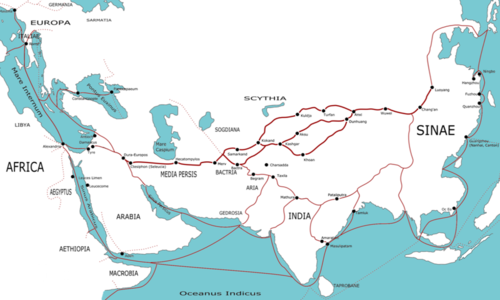
Not all of the history is known and historians disagree on parts of it, but it is clear that this trade is quite old and quite wide-ranging. By 2000 BCE some trade routes were well established, between the Indus Valley Civilization and Ancient Mesopotamia via the coast of the Indian Ocean and the Persian Gulf , and the maritime jade route carrying trade over most of Southeast Asia .
Greek records show that routes between the Red Sea , East Africa and what is now the west coast of India were well known a few centuries BCE. Chinese records show traders sailing to India via Indonesia in the third century CE, and it seems likely that trade started centuries earlier. Ptolomey of Alexendria created maps for both land and sea routes to China in the second century CE.
In China, the main ports for this were Guangzhou and Quanzhou . Marco Polo sailed home from Quanzhou and described it as the busiest port on Earth and fabulously wealthy. Ibn Battuta both arrived and departed via Quanzhou.
Further west, the great ports included Malacca in the Straits of Malacca, Rangoon and Chittagong in the Bay of Bengal, Cochin and Calicut on the South Indian coast, Cambay further north in India, Karachi in Pakistan, Basra in Iraq , Muscat in Oman , and Aden in Yemen . Alexandria was this route's gateway to the Mediterranean; Polo considered it the world's second busiest port.
Some words in modern English come from the ports on this route from which certain items first reached Europe: "satin" is from Zaiton (the Arabic name for Quanzhou), the "macassar" hairdressing oil is from Makassar in Sulawesi island, and "calico" from Calicut. Bactrian camels (two-humped, as opposed to Arabian camels, which have a single hump) are named for the inland Silk Road region, Bactria . Similarly, the nutmeg's standard name in Spanish, Portuguese, Italian, French, Dutch, German and Russian is "nut from Muscat", even though originally the only source was the Spice Islands in what is now Indonesia.
Grapes were introduced to the Mediterranean region either from the Middle East or the Black Sea, and Muscat grapes were among the earliest, having been grown in Ancient Greece . Some experts suggest they are original seed stock from which all modern grapes derive, and some think they are named for the city of Muscat, though neither claim gets unanimous agreement. Muscat grapes are fermented to produce a sweet wine called Moscatel or Moscato. The oldest evidence of winemakin g has been found in Iran, and wine spread outward to Europe, Georgia, and China (the famous poet Li Bai was known as one of the "Eight Immortals of the Wine-Cup" for his incessant drinking).
During the reign of Emperor Yongle of the Ming Dynasty, Chinese-Muslim Admiral Zheng He (also known as Cheng Ho) would sail on voyages that took him to Southeast Asia, India, the Middle East and even as far as Mogadishu in East Africa. His contact with the Malacca Sultanate in what is today Malaysia led to the first wave of Chinese immigration to the area, where many intermarried with the local Malays to give rise to the Peranakan community, whose unique culture and cuisine endures to this day. Until the Emperor shut down all seaborne foreign trade in the 1420s, there was regular trade between China and ports as far West as Aden on both Chinese and other ships. Even after the shutdown, the emperor allowed Zheng He to sail to Jeddah for his Hajj pilgrimage to Mecca.
The first Muslim missionaries reached China by sea in the 7th century, and several Chinese cities had mosques built during the Tang Dynasty , i.e. before 907. By around 1000 CE, Quanzhou had a substantial community of Arab and Persian residents, and the Great Mosque there (not the first) was built in 1009.
In the 1980s, an Englishman named Tim Severin had a replica of a 9th century Arab dhow built in Oman and, with an Omani crew, sailed it all the way to Guangzhou . The ship is now back in Oman and on exhibit . See Severin's Wikipedia entry or his book The Sinbad Voyage for details.
In general, Asians were doing extensive trade over these routes centuries before Europeans turned up. When Vasco da Gama (en route to becoming the first European to reach India by sea) reached East Africa via the Cape Route in 1498, he found Chinese trade goods such as blue and white pottery already well established in the market. This made sense at the time; medieval Europe was insignificant on the world stage and the Americas were not yet "discovered" while Asia produced most of the world's wealth and had most of its trade.
One of the finest examples of the sheer globalness of trade in the pre-Industrial age is the temple at Borobudur . Along the walls of the temple are many friezes, some of which chronicle foreign trading ships. There is also a section that chronicles trade between the Majapahit (controlling Sumatra, Java, and some parts of neighboring regions) and the Chola kingdom in southern India and Sri Lanka ; one of the most famous reliefs from the structure depicts the "Borobudur Ship", highlighting the role of the Maritime Silk Road in the region.
Later, Europeans had huge influence in the region. One significant change was colonisation — Russia in Central Asia and Northeast China , the United Kingdom in India , Malaya , northern Borneo , Burma and Hong Kong , Portugal in Goa , Macau and East Timor , France in Pondicherry and Indochina , the Netherlands in what is today Indonesia , Germany in the Shandong Peninsula, and first Spain then later the United States in the Philippines . There were also large changes in trade routes; some of the most important were huge imports of silver from Spanish Mexico to Spanish Manila and thence into East Asia , and the extensive three-cornered trade involving tea clippers mainly from China to Britain and opium mainly from British Bengal into China.
In the 21st century, China has sought to revive and expand the Maritime Silk Road through the Belt and Road Initiative, through which they have invested in building ports in far-flung corners of the globe such as the Persian Gulf, Africa and Latin America. In Thailand , there has been talk of building a shipping canal across the Isthmus of Kra in Southern Thailand with funding from China, allowing ships travelling between China and Europe or India to bypass Singapore and save several days of time and millions of dollars worth of fuel in the process, though these have been repeatedly held back by concerns over ethnic Malay Muslim separatists near the Malaysian border.

The traditional inns of the area are called caravanserai . They are built around a walled courtyard and have stables for the horses and camels. Most were in towns but there were also some rural ones, some of them well fortified against the local bandits.
Some caravanserai still exist; anyone traveling this road should try to find them and stay in them at least once.
Other than caravanserais, most visitors will stay in hotels, hostels, or homestays. Homestays are especially popular in Central Asia, where countries like Kyrgyzstan and Tajikistan promote them.
Whether or not you can camp depends on where you are and the local government's policy towards passport controls. In many countries along the Silk Roads, you need to "register" your passport every so often (pretty much every hotel/hostel will do this for you upon check-in), so long-term camping (usually more than 3 days) is next-to-impossible. The only place on the Silk Road where you have to camp is at Darwaza in Turkmenistan, because there are no hotels or hostels.
Historically, many of the people in this region have been nomadic herdsmen, some still are, and even in the cities tribal loyalties may run strong, which implies at least:

- a tremendous tradition of hospitality
- suspicion of outsiders, even from neighboring tribes.
- considerable hostility toward both Western and Russian influences
- many of them are heavily armed
The whole area along the overland route, except a few parts of China, is Muslim which implies at least:
- a tradition of Muslim hospitality and wonderful treatment of visitors
- some conservatism, especially in matters such as women's clothing
- risk of foreigners who do not understand Islam giving offense
In this area, the politics get very complicated, with tribal, ethnic and religious issues all adding to the complexity. Moreover, the collapse of the Soviet Union left some of the area's governments in a chaotic state from which they have not entirely recovered. Tajikistan underwent a horrible civil war from 1992-97, and periodically ethnic tensions flare up in the Pamir region. Uzbekistan was a police state until 2018 (and is still heavily bureaucratic). Turkmenistan , for example, is about as authoritarian as North Korea . Iran is a safe country (for the traveller), but its poor relations with many Western governments means that travellers might be on their own if situations arise.
As of early 2019, there has been active warfare for several years in various areas along the route — Afghanistan , Iraq , Syria , several Caucasian areas with Chechnya the best-known, and Yemen on the Maritime Silk Road — and potential conflicts in several others. Drone attacks by US forces are frequent in Yemen and in Northwest Pakistan . Avoid these areas, or see War zone safety if you must go.
As along other trade routes, there is a long tradition of banditry along the Silk Road. This has been vastly reduced over the past two centuries, but there may be risk of new outbreaks when an area becomes chaotic. There are also complications associated with the drug trade; in the last few decades, Afghanistan has become a major source of opium (the raw material for morphine and heroin manufacture); much of it is smuggled north through neighbouring countries then along old Silk Road routes toward Russia and Europe . Piracy does occur in the Gulf of Aden and Southern Red Sea. If you are using the Maritime Silk Road, be cautious of this.
All that said, with a bit of common sense and goodwill, a willingness to route around trouble spots, and a lot of flexibility on the part of the traveller, the risks are generally quite moderate.
See individual country and city listings for more. Roads are poor in many areas and some are impassable in the winter or monsoon season. Various mountain and desert areas can be quite dangerous if appropriate care is not taken. Also, most locals are friendly, curious and helpful, but the traveller needs some understanding of local customs and must take some care not to give offense.
In some parts along the Silk Roads, the environment can be your worst enemy. Most of Central Asia is dominated by two massive deserts which, in addition to the heat and dehydration dangers they pose, also kick up huge dust storms that can affect places as far away as the Ferghana Valley and Baku. Tajikistan, Kyrgyzstan, and Afghanistan are all highly mountainous countries, and avalanches and rockslides can happen at any time. Earthquakes are also relatively common in the region, and can damage infrastructure or cause other natural disasters. In China, the huge Taklamakan desert is nearly devoid of both water and settlements. If travelling through the region, make sure you have enough supplies (water, gas) to get from town to town.
Along the Maritime Silk Roads, tropical storms, monsoons, and cyclones can all put a serious damper on your sea voyage. Make sure you (or people you're travelling with) know how to handle a ship during a storm (and avoid them if you can).
- Islamic Golden Age
- Imperial China
- Persian Empire
- Mongol Empire
- Russian Empire
- Western Xia
- Voyages of Sven Hedin
- Mughal India
- UNESCO World Heritage Sites
- UNESCO tag to be fixed
- Previous Featured travel topics
- Has custom banner
- Guide itineraries
- Guide articles
- Intercontinental itineraries
- Itineraries
Navigation menu
- Skip to primary navigation
- Skip to main content
- Skip to footer

Caravanistan
The Silk Road Travel Guide
Silk Road Travel Planning
Once past Istanbul, the world changes scale Nicolas Bouvier
How do you start planning a Silk Road trip? How do you decide where to go, for how long, in what order, at what time of the year? Which form of transport should you take? How much will it cost?
And once you finally get there, what should you spend your time on? How do you get around? How do you talk to people? What are they like? Is it safe?
We are here to help you answer those questions. We have been traveling the Silk Road since 2008 and have been writing about it since 2011. Below, we will try to introduce you to Silk Road travel in a condensed format, and link out to some of the hundreds of articles found on this website if you want to delve in deeper.
Enjoy the trip! Steven & Saule

Table of Contents
Quick links
Start planning.
- Basic itinerary questions
- Books and literature
- Overland travel on the Silk Road in 2023: where to go with so many borders still closed?
- Custom tours and tour templates
Health and safety
- Is it safe?
- Health tips
- Have a back-up plan
- Travel insurance tips
- Travel with kids
- Single females
- Halal travel
- Racism and sinophobia
- Travel with pets
Practical details
- Visas and invitation letters
- Border crossings
- Accommodation
- Rules for drones
- Phone and internet
- Maps & Sending a package
- Self-driving
- Car & motorbike rental
- Ride-hailing and taxi apps
- Ferries: Caspian Sea – Persian Gulf – Black Sea
- Long-distance cycling
Country guides
- Turkmenistan
- Afghanistan
Asia, so good for the heart, so bad for the nerves Nicolas Bouvier
Where is the Silk Road?
The Silk Road is a name for an ancient network of trade routes connecting the Eurasian continent.
We can name plenty of reasons why it is not an accurate name, but the fact of the matter is, the Silk Road is a powerful brand. It immediately conjures up images of romance, exploration and exoticism. So we decided to keep that name as the tagline for our travel guide.
So which modern countries fall under this umbrella? For the purpose of this travel guide, the Silk Road starts in Central Asia (Kazakhstan, Kyrgyzstan, Uzbekistan, Tajikistan & Turkmenistan) and fans out to Iran, the Caucasus (Armenia, Georgia & Azerbaijan), Mongolia, Western China, Afghanistan and Pakistan.

Where does Caravanistan come in?
We write comprehensive guides on the basics of travel (visas, transport, et cetera) for the 13 countries listed above. For the 5 Stans of Central Asia, we write much more: in-depth guides to places and things to do, and background articles.
Is our travel guide any good?
Yes. Lonely Planet calls it a “peerless online travel guide to the region” , while Bradt Guides says it is ”the most comprehensive online guide to travelling the Silk Road”. Founder and editor of Wired Magazine Kevin Kelly thinks we are “highly reliable, immensely helpful, and always inspiring.”
Once you know what is on offer, it’s time to start planning! Our itinerary page gives tips for those looking at a big East-West trip across Eurasia, as well as for anyone with a more modest time frame.
Reading is always a good way to get inspired and find ideas that can pull you deeper into a particular place or culture; we have a big list of books from travelogues to politics on the Silk Road and per country.
In when to visit we discuss the weather, festivals and events to time your trip right. Finally, things to see and do in Central Asia is a huge chapter, that we are still busy writing and rewriting, with lots of practical detail on everything from how to find a match of kok boru to organising a ski trip on horseback.
If you are planning an organised trip: we can help. We specialize in finding you the right partner for custom-made tours . Have a look at some of our tour templates to get started.

We discuss your (parents’/kids’) worries about safety in Central Asia . We have an article on how to not get sick , and on travel insurance in case something does happen. Finally, we’d like to inculcate you with the importance of having a back-up plan . Things don’t always go according to plan in Central Asia.
If you are not a single white heterosexual man, do not fret! We have advice for getting on the Silk Road with kids , with pets , as a single woman , a Muslim or as LGBT , and how to deal with racism and sinophobia on the Silk Road.
The basics for getting into and out of these countries: visas and border crossings . Once you are there, how to get online and things to consider when selecting accommodation .
Food is always a sore topic in Central Asia, especially for vegans. How to overcome the language barrier is another difficulty.

Silk Road by train ? It’s possible these days to idle your days away on the train from Istanbul to Urumqi.
If you are a motorist, we have articles almost as long-winded as the road you will be traveling on, about self-driving from Georgia all the way to China . If you do not have your own wheels, read our guide to car and motorbike rental first.
Then there are the ferries across the Caspian Sea , Black Sea and the Persian Gulf .
Finally, we give some pointers for all the long-distance cyclists out there.
We have 5 country guides, for Kazakhstan , Kyrgyzstan , Tajikistan , Turkmenistan and Uzbekistan . We discuss more practical details: everything from paying with cigarettes in Turkmenistan to internet on the Pamir Highway.
And we write about the places to go and the things to do and see along the way.
The world is a caravanserai, with one entry and one exit Omar Khayyam
Travel Guide
Tours & rental.
- Custom tours
- Search all tours
- Pamir Highway tours
- Uzbekistan tours
- Kyrgyzstan tours
- Car & motorbike rental
Visa invitations
- Russia (tourist)
- Russia (business)
Get to know us
- What people say
- Letter from the Silk Road
- Terms & Conditions
- Follow us on Instagram
Do you have a request for this tour operator? Send a message
Not exactly what you were looking for? Check out our custom tour offer: competitive prices, tailored to your needs and wants. Customize your tour
The essential guide to backpacking China's Silk Road

Apr 18, 2017 • 6 min read
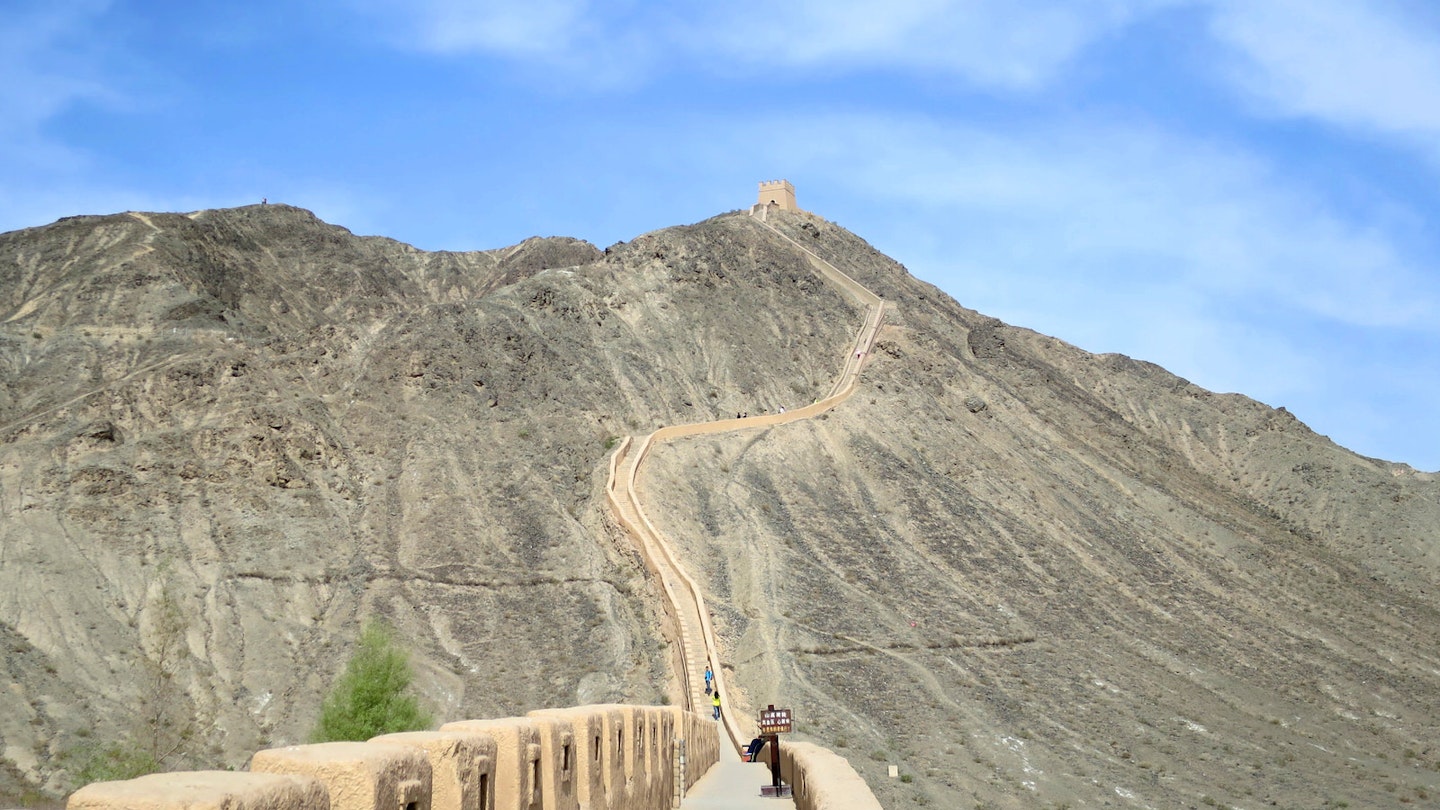
Climbing the Overhanging Great Wall at Jiayuguan © Megan Eaves / Lonely Planet
The section of the ancient Silk Road that runs through China is an epic journey through desert dunes to the end of the Great Wall, a length of pink mud that ends abruptly in the magnificent beige towers of the Jiayuguan Fort.
This is not a voyage that many travellers experience; it's often and understandably overlooked in favour of more accessible and famous destinations in China.

But for adventurous travellers looking for something truly different, backpacking the Chinese Silk Road reaps glorious rewards: sand-sledding down a magical unmoving sand dune, a camel ride around an oasis, a trek up the end of the Great Wall and sipping wine under grape trellises are just a few of the possibilities. So don a sand-proof rucksack and check out our guide to backpacking the Silk Road through China.
Historically, the Silk Road was not one but many routes that connected east and south Asia to Mediterranean Europe, so named because the largest commodity traded down the route was sought-after Chinese silk. The route traditionally started in Xi’an (then known as Chang’an), China and continued northwest through modern-day Gansu and Xinjiang provinces before reaching Central Asia.
Several historical splits in the road mean that you have options when deciding your route. By far, the most traversed portion of the route is from Xi’an to Lanzhou and Jiayuguan in Gansu. From here, you can choose to head northwest to Urumqi in Xinjiang, where fascinating Uigher culture, China’s wine country, and the soaring peaks of the Tian Shan mountains await. Alternately, the southern route heads through the fiery desert of Gansu, with its huge dunes and ancient Buddhist caves, ending in the distinctly Central Asian city of Kashgar , renowned for its bustling Sunday livestock market. Adventurous travellers and those with extra time could potentially explore both routes by heading southward from Jiayuguan to Dunhuang in Gansu, then upwards to Urumqi and finally south again to end in Kashgar.

Don’t-miss sights
Zhangye Danxia National Geopark . This incredible desert landscape is striking for its orange, red and yellow hues of layered clay and sandstone, forming bizarre rainbow mountains. While you're in Zhangye, also be sure to see the Giant Buddha Temple , which contains one of the largest wooden reclining Buddha statues in China.
Jiayuguan Fort . The ancient Great Wall ends in this towering mud fortress, which rises out of the desert like a mirage. Just a few kilometres northwest of Jiayuguan town, the fort boasts a few touristy activities like archery and camel rides, but the real reason to come is for the sweeping views from its ramparts.
Overhanging Great Wall . Named because it looks like a dragon hanging over a cliffside, this portion of the Great Wall is one of the most visually stunning: a mud maze that zigzags its way up a stark desert mountain. The wall is open for climbing and views from the top are incredible.
Singing Sands Dune . To call this a single dune would be an understatement. On the outskirts of Dunhuang , Singing Sands Dune is the first in a series of thousands of dunes that make up the Taklamakan Desert. This particular dune, though, is legendary for having never covered the oasis below, despite thousands of years of sand erosion. Adventurous types can climb the dune for great vistas of yet more dunes – and then sand-sled back to the bottom.
Mogao Grottoes . Just outside of Dunhuang, this series of caves contains an incredible wealth of Buddhist art and murals.
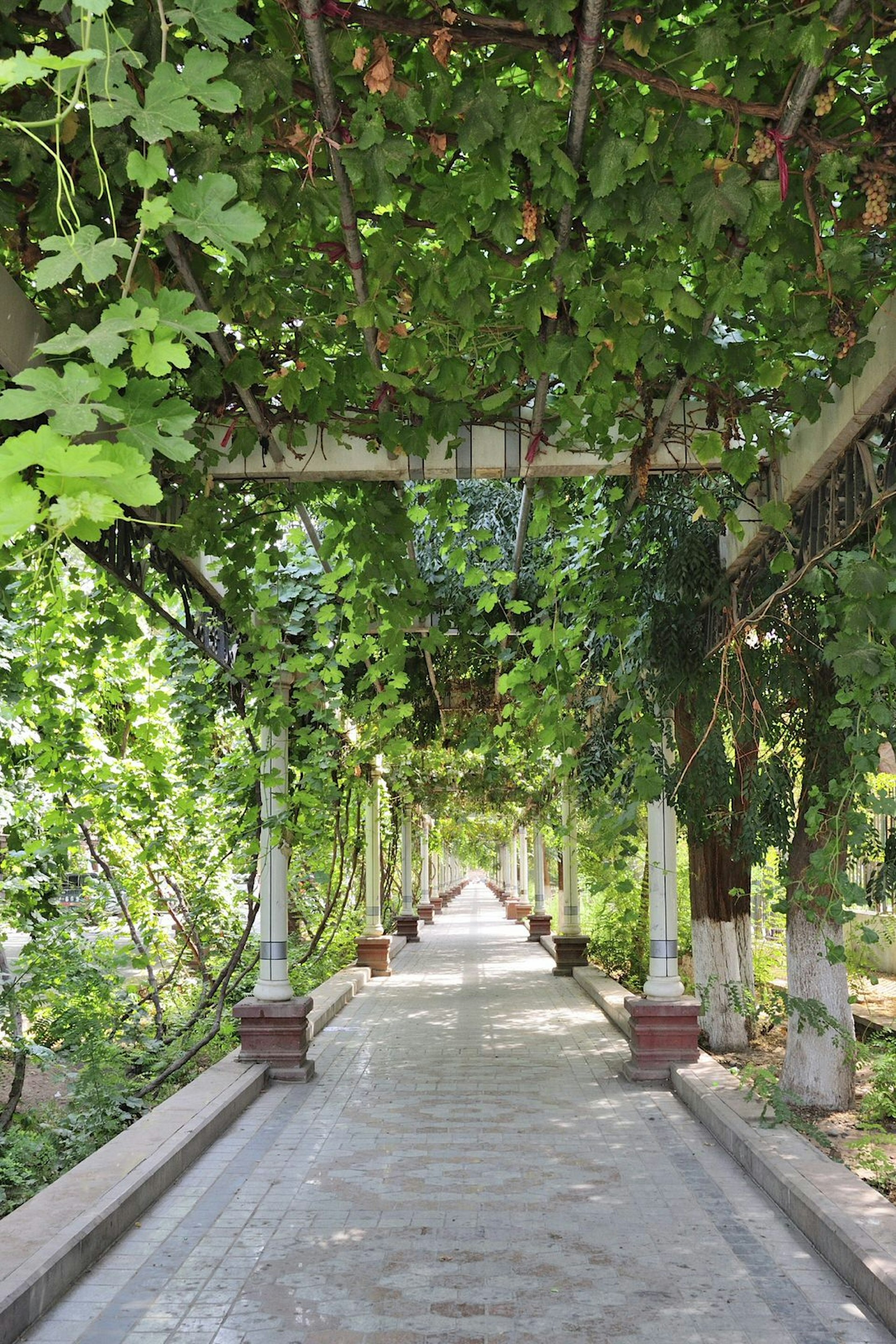
Turpan Grape Valley . China may not be known for its quality winemaking just yet, but Turpan – an oasis town – is home to one of the oldest and most prolific wine-making regions in the country. No matter the quality of the wine (some is actually quite quaffable), sipping a fresh glass of white under grape trellises as a brook babbles nearby is great way to beat the desert heat.
Jiaohe Ruins . This 2300-year-old archaeological site contains the ruins of an ancient capital that was destroyed by Mongol invaders around the 13th century. What remains today is an elaborate network of structures in various states of decay, connected by a maze of streets.
Tian Chi Lake . This mountain lake, whose name means ‘heavenly’, sits in the cradle of the Tian Shan mountains underneath the looming 5445m gaze of Bogda Peak. A popular destination with domestic tourists, the lake's serenity is sadly hampered by honking boat horns and tramping visitors, but if you can find a spot of solitude, the vistas are incredible. It’s also possible to camp or stay in a yurt with a local Kazakh family – highly recommended for delivering a slice of the water and surrounding forest to yourself.
Kashgar's Grand Sunday Bazaar . One of the largest and liveliest markets in all of Asia, Kashgar’s bazaar is open every day but is especially bustling on Sundays, when the livestock market adds cattle, horses, sheep and goats to the mix.
Getting around
China’s northwest is historically one of its least connected regions. The Jiayu pass, where the impressive Jiayuguan Fort was built in the 1370s, marks the end of the Great Wall and the border of the ancient Chinese empire.
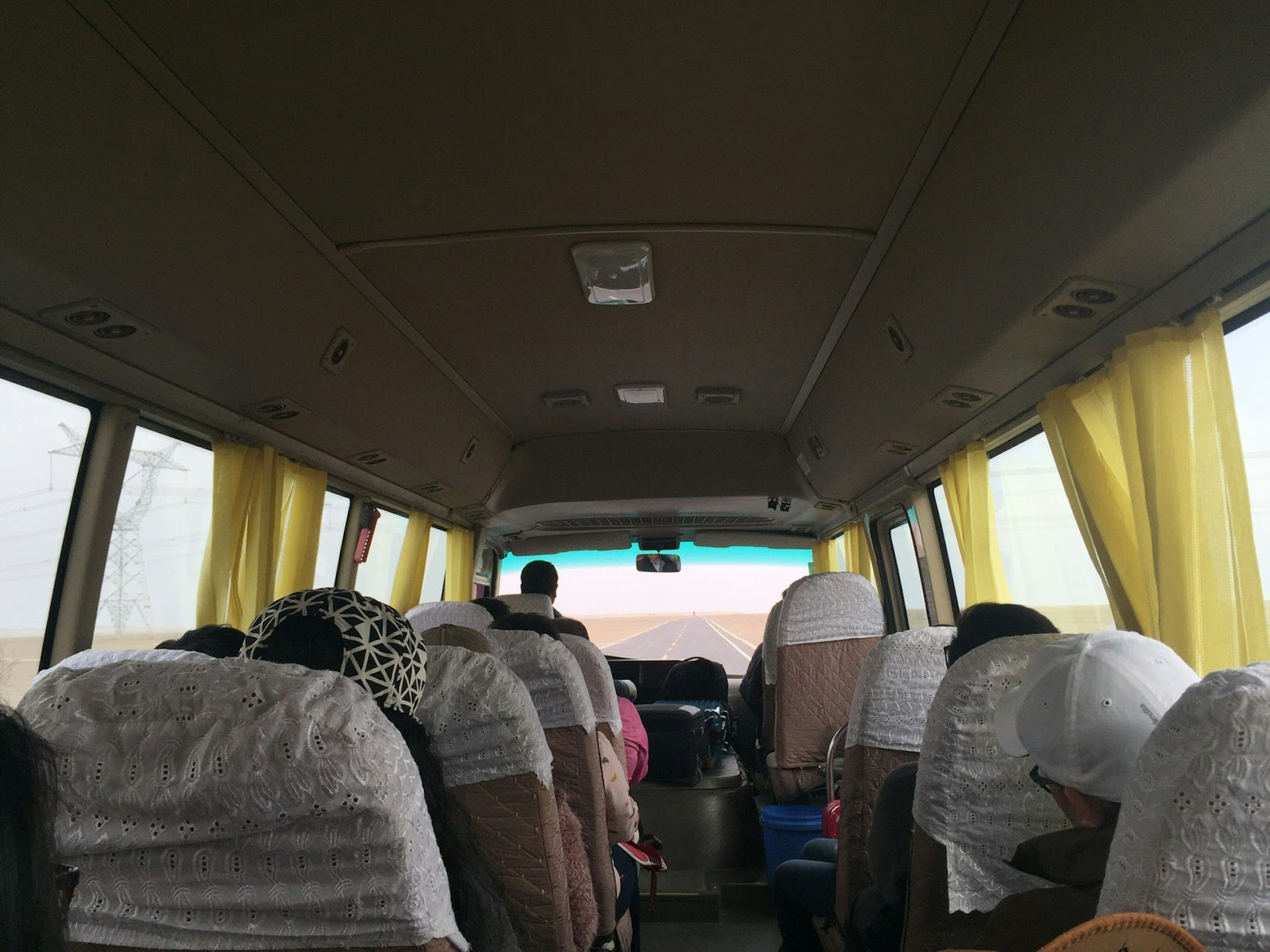
The region spreads over 2400km, most of which is separated by vast tracts of desert. Though you can still get on a long, bumpy bus ride if you want to, the region is now connected by high-speed rail, making getting around a breeze. Regular flights also connect most of the main airports in the region: Xi’an, Lanzhou, Jiayuguan, Urumqi and Kashgar all have commercial airports, and tickets are often discounted.
Part of the allure of this trip is the vast journey overland, which hearkens to a day when explorers, traders and Buddhists rode and walked for weeks across the harsh desert. Doing at least part of your journey by rail is a good way to experience these landscapes up close. The entire journey could be done in 10 days by rail if pressed, but two to three weeks allow for explorations further afield and several days in each stopover to see the sights properly. Flying from Xi’an to Lanzhou and beginning your rail journey there would shorten the journey for those in a hurry.
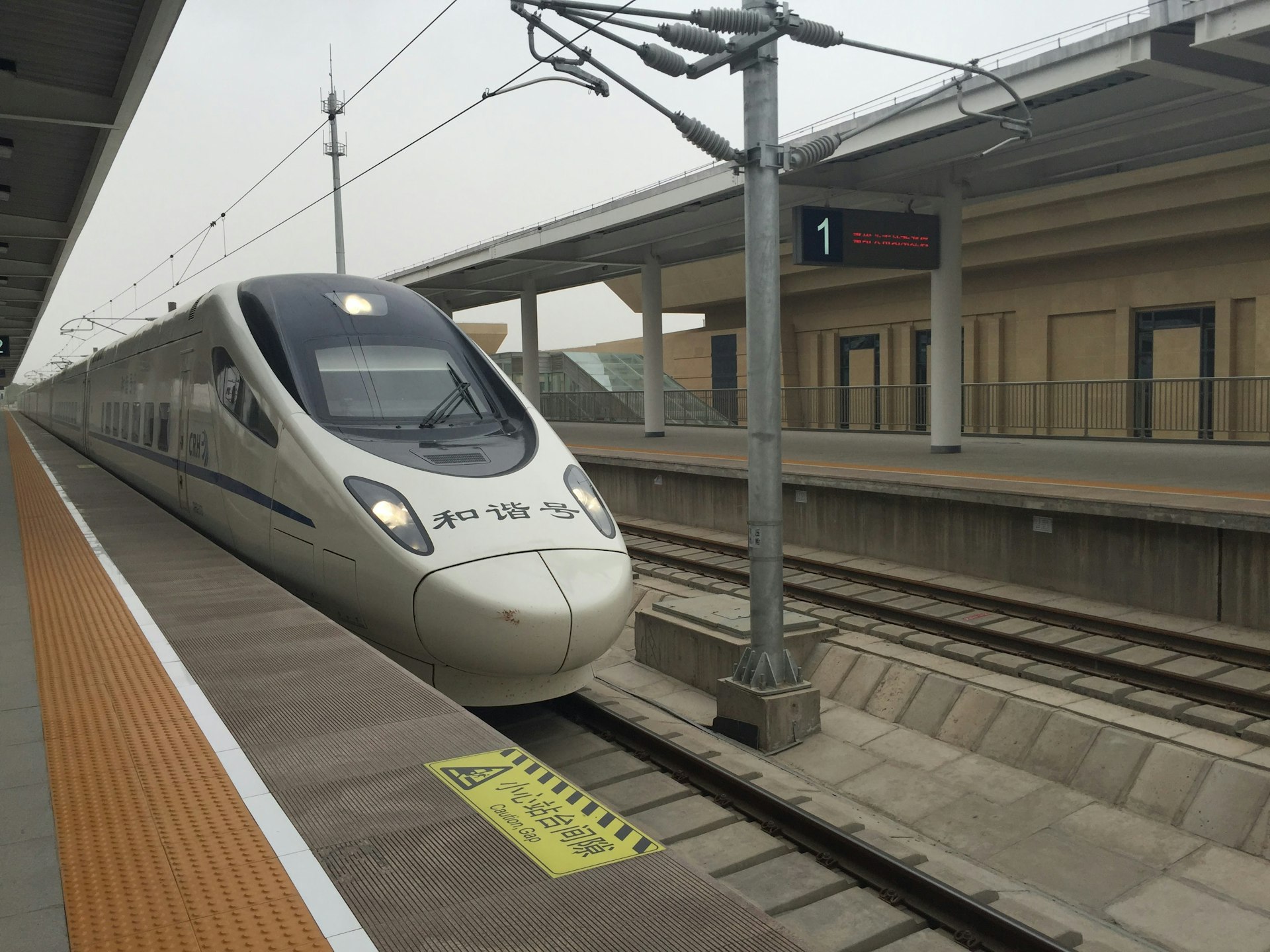
An ideal Silk Road trip would include overnight or several-day stops in Lanzhou, Zhangye, Jiayuguan, Dunhuang, Turpan, Urumqi (or Tian Chi Lake) and Kashgar.
Tips and recommendations
Most of this route follows extreme desert, so pack for dry heat. Carry plenty of sunscreen and breathable clothing that covers the skin. A bandana or lightweight scarf can be useful for shade and breathing in dusty conditions.
If taking an overnight train trip, equip yourself with food and plenty of sealed, bottled water before you embark. Hot meals are offered on trains, but tend to be very basic Chinese staples like rice, vegetables and stir-fried meats. Instant noodles, fruit, nuts and seeds are ubiquitous, easy to carry and keep well. Trains also usually sell beer and wine, but at high mark-up, so be sure to pack your own, as having a ganbei (bottoms up) is a great way to meet locals and make friends while travelling.
Officially, the entirety of China is in one time zone, China Standard Time, but the northwest, particularly Xinjiang province, often operates on its own locally created time zones. When purchasing train and bus tickets, double-check the departure time.
In general, Mandarin is spoken throughout the region, including by taxi drivers and hotel staff and at large stores and restaurants. However, in some more remote areas and at smaller cafes, you may find older people only speak local dialects of Chinese or Uigher.
This article was originally published in August 2013 and updated in April 2017.
Explore related stories
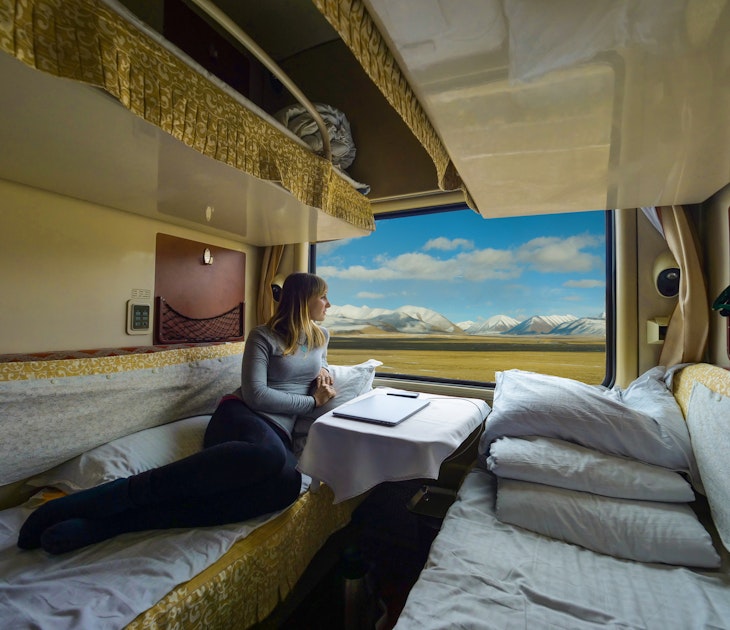
Sustainable Travel
May 9, 2024 • 6 min read
Sleeper services are making a welcome comeback. We answer FAQs to help you prepare for your first overnight train journey.

Apr 2, 2024 • 10 min read
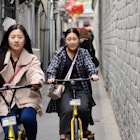
Feb 23, 2024 • 6 min read

Feb 21, 2024 • 5 min read

Jan 2, 2024 • 11 min read
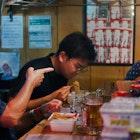
Dec 26, 2023 • 5 min read

Nov 7, 2023 • 5 min read
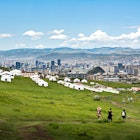
Aug 25, 2023 • 7 min read
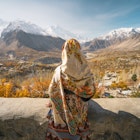
Aug 11, 2023 • 8 min read

Aug 8, 2023 • 10 min read
52 Useful Tips for Travelling the Silk Road (Backpacker’s Guide)
January 19, 2020.
Thinking about travelling the Silk Road? You’re in for the adventure of a lifetime. This in-depth post will tell you everything you need to know to plan your trip.
From the windswept steppe of Kazakhstan to the mighty Pamir Mountains and to the oasis towns of Uzbekistan, the Silk Road has it all. For thousands of years, travellers and traders made the treacherous journey along the Silk Road, across vast deserts and over high mountain passes.
Nowadays, it’s rather easy to see the countries of the Silk Road for yourself. Visa issues have basically disappeared and there is now plenty of infrastructure to accommodate tourists.
I’ve spent over 6 months travelling around the Central Asian Silk Road countries, and have learned a ton about the region.
- 1 What is the Silk Road?
- 2.2 Kyrgyzstan
- 2.3 Kazakhstan
- 2.4 Uzbekistan
- 2.5 Tajikistan
- 2.6 Turkmenistan
- 2.7 Afghanistan (Wakhan Corridor)
- 3 Silk Road Travel Routes
- 4 Food along the Silk Road
- 5 People & Culture of the Silk Road
- 6 Visas for travelling the Silk Road
- 7 Safety along the Silk Road
- 8 Transportation while travelling the Silk Road
- 9 Accommodation while travelling the Silk Road
- 10 Silk Road Travel Costs
- 11 When to travel the Silk Road
- 12 Communication along the Silk Road
- 13 Internet & SIM Cards for the Silk Road
- 14 Travelling the Silk Road Wrap-up
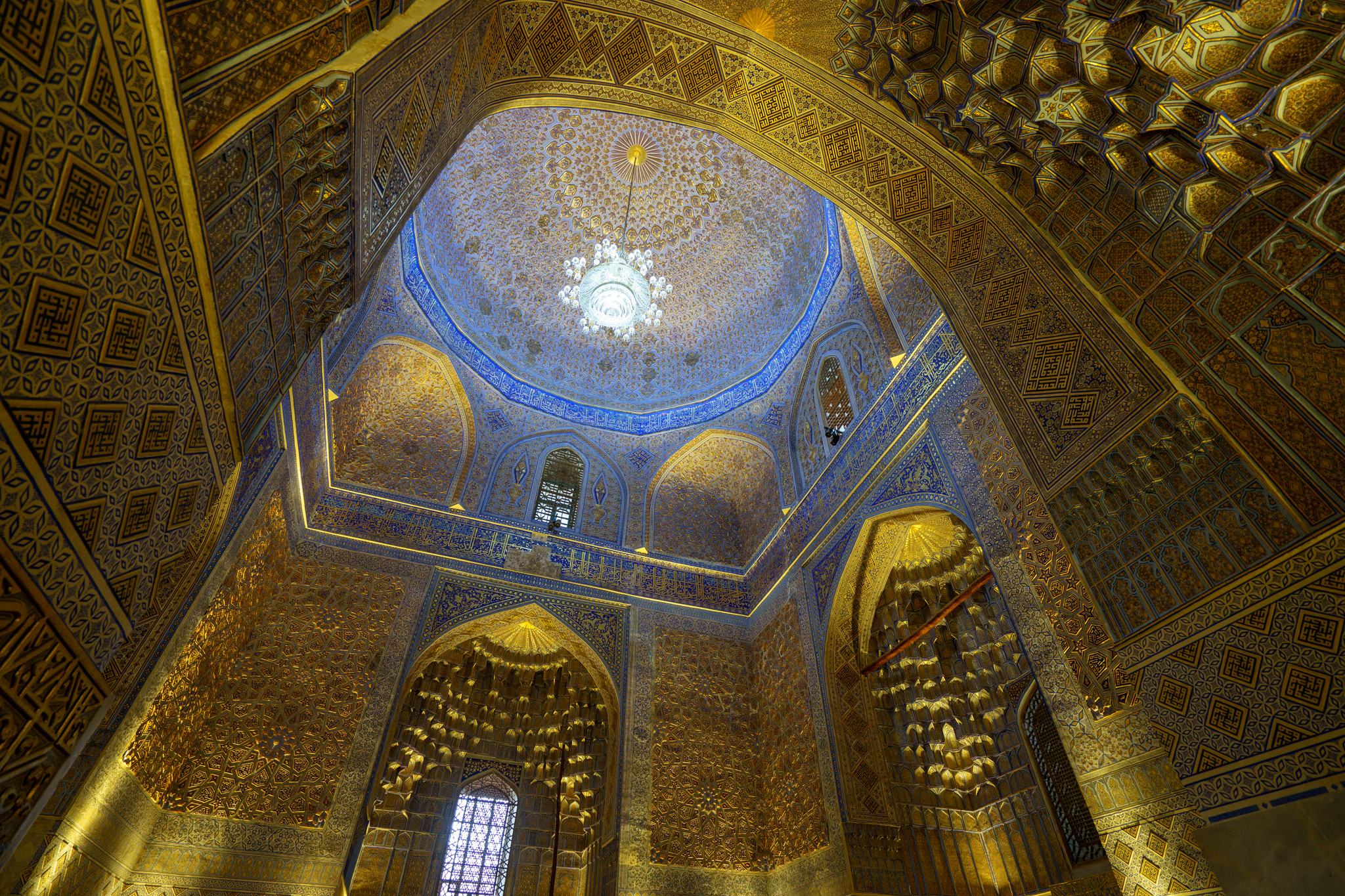
What is the Silk Road?
1 – The Silk Road wasn’t just one route: The Silk Road was a vast network of trade routes that connected Europe to Asia. The most well-known route is the one from China to Turkey, via Central Asia and Iran. Other routes travelled to Arabia, India, and Southeast Asia.
2 – This post will focus on the Central Asian Silk Road : Most travellers who plan a trip to the Silk Road visit the Central Asian ‘stans and China. While places such as Iran and Turkey are also technically on the Silk Road, that’s not usually the first thing that comes to mind when people visit them.
3 – Where does it start? Where does it end?: People typically consider Xi’an in China to be the starting point, and Istanbul in Turkey to be the endpoint of the Silk Road.
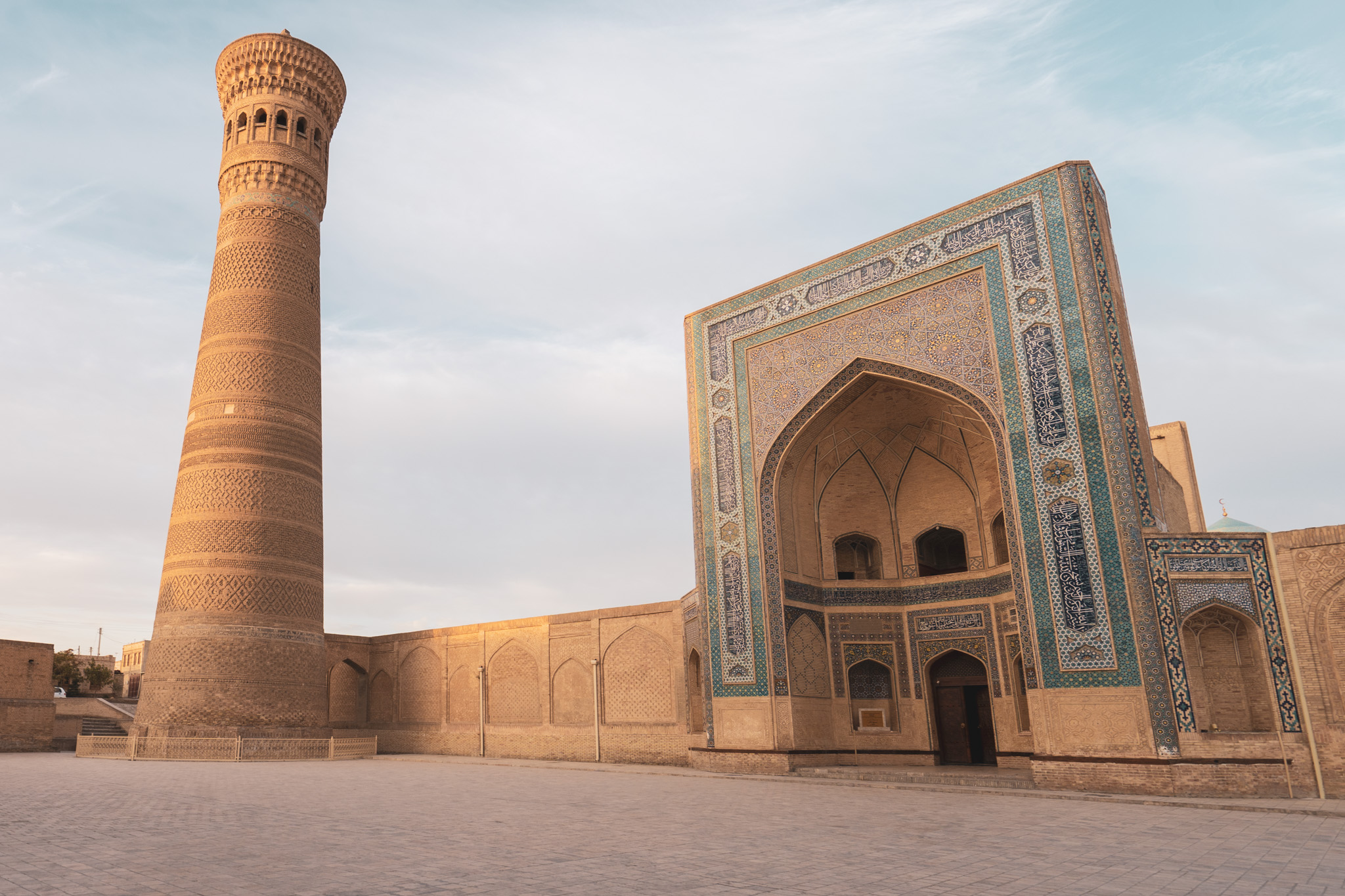
Where to visit along the Silk Road
4 – There are 7 different countries that make up the Central Asian Silk Road: China, Kyrgyzstan, Kazakhstan, Uzbekistan, Tajikistan, Turkmenistan, and northern Afghanistan are the countries that most consider being part of the Central Asian Silk Road.
Let’s go over the highlights of each of them below:
5 – History, nature, and delicious food: China has an incredibly long history, and it’s Silk Road corridor from Xi’an to Kashgar is no exception. Travelling along the Chinese Silk Road is an incredible experience. You’ll get to visit the Terracotta Warriors in Xi’an, taste some delicious noodles in Lanzhou, visit the famous Mogao Caves in Dunhuang, and check out the famous flaming cliffs of Turpan.
6 – Kashgar, China’s westernmost city: Closer to Baghdad than Beijing, Kashgar is an oasis city far from the rest of China. It’s inhabited by ethnic Uyghur people, and has always been an extremely important location on the Silk Road. When you visit Kashgar, you’ll be able to roam around its old city, visit animal markets, and take a road trip down the Karakorum Highway to the Pakistani border.
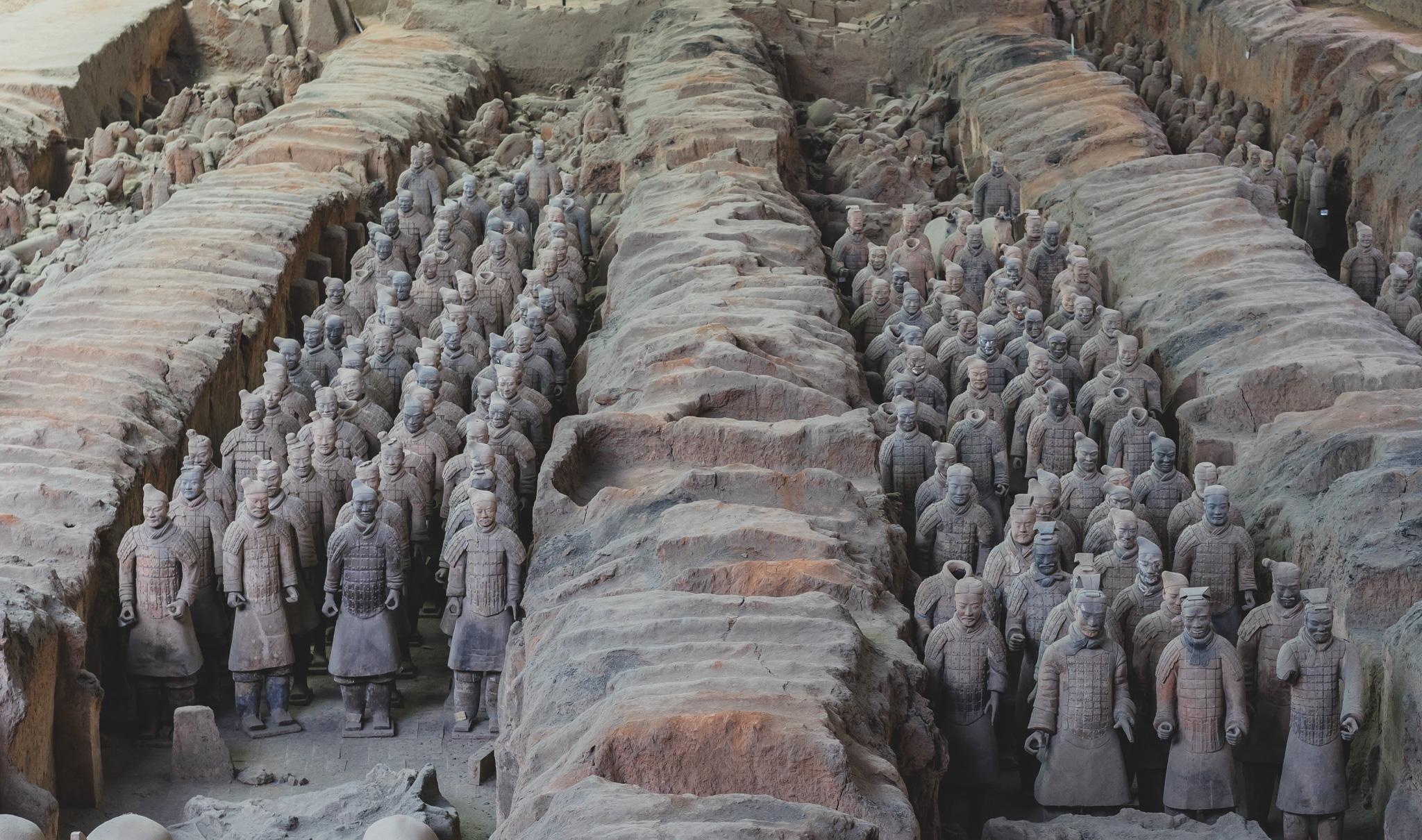
7 – Kyrgyzstan is a paradise for trekkers and nature lovers: Kyrgyzstan is without a doubt the most naturally beautiful Central Asian country. While small in area, it boasts a number of different landscapes. One of my personal favourites is the Alay Valley in the southern part of the country.
There are countless different treks that you can do while in Kyrgyzstan, and there is pretty good information floating around online about the best ones. The Ala-Kul trek is one of the most popular ones, although if you want to get really off the beaten path, treks such as the Heights of Alay will be right up your alley.
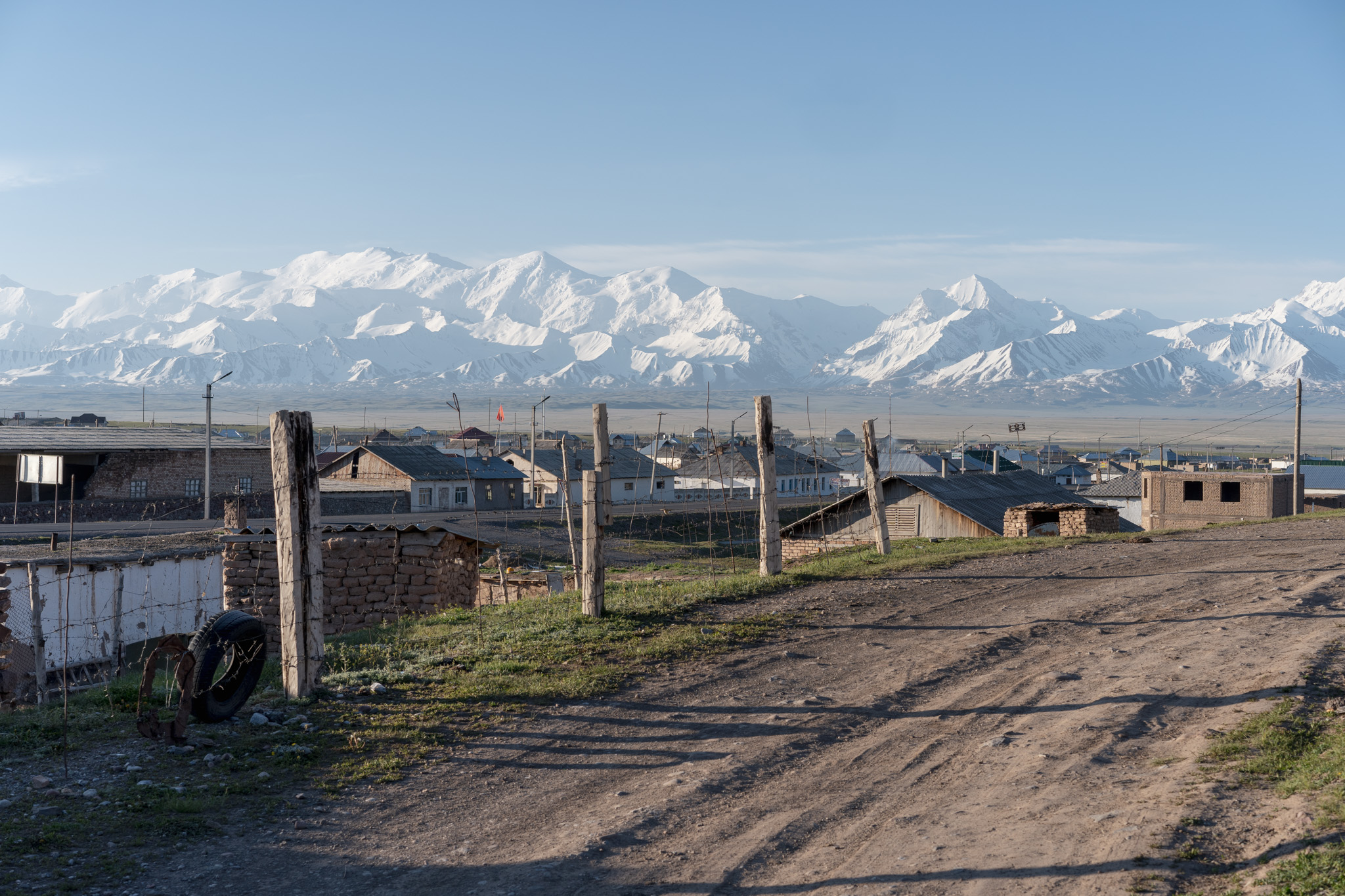
8 – Mountaineers will be right at home: Some of the most accessible 7,000-meter peaks in the world are located in Kyrgyzstan, and there are a number of agencies that assist experienced climbers in making attempts on these giant mountains.
I personally attempted to climb Lenin Peak when I was in Kyrgyzstan, it was one of the most challenging things I’ve ever done but was incredibly beautiful.
9 – There are nice beaches in Kyrgyzstan: You probably wouldn’t expect to have a nice beach day with a mountain backdrop while you’re in Central Asia, but the massive Issy-Kul in Kyrgystan gives you this opportunity! There are a bunch of towns along the shores of Issy-Kul with great little beach resorts.
This lake is actually a popular summer destination among tourists from Russia and other parts of Central Asia!
Check out my backpacker’s guide to Kyrgyzstan for more info on this amazing country!
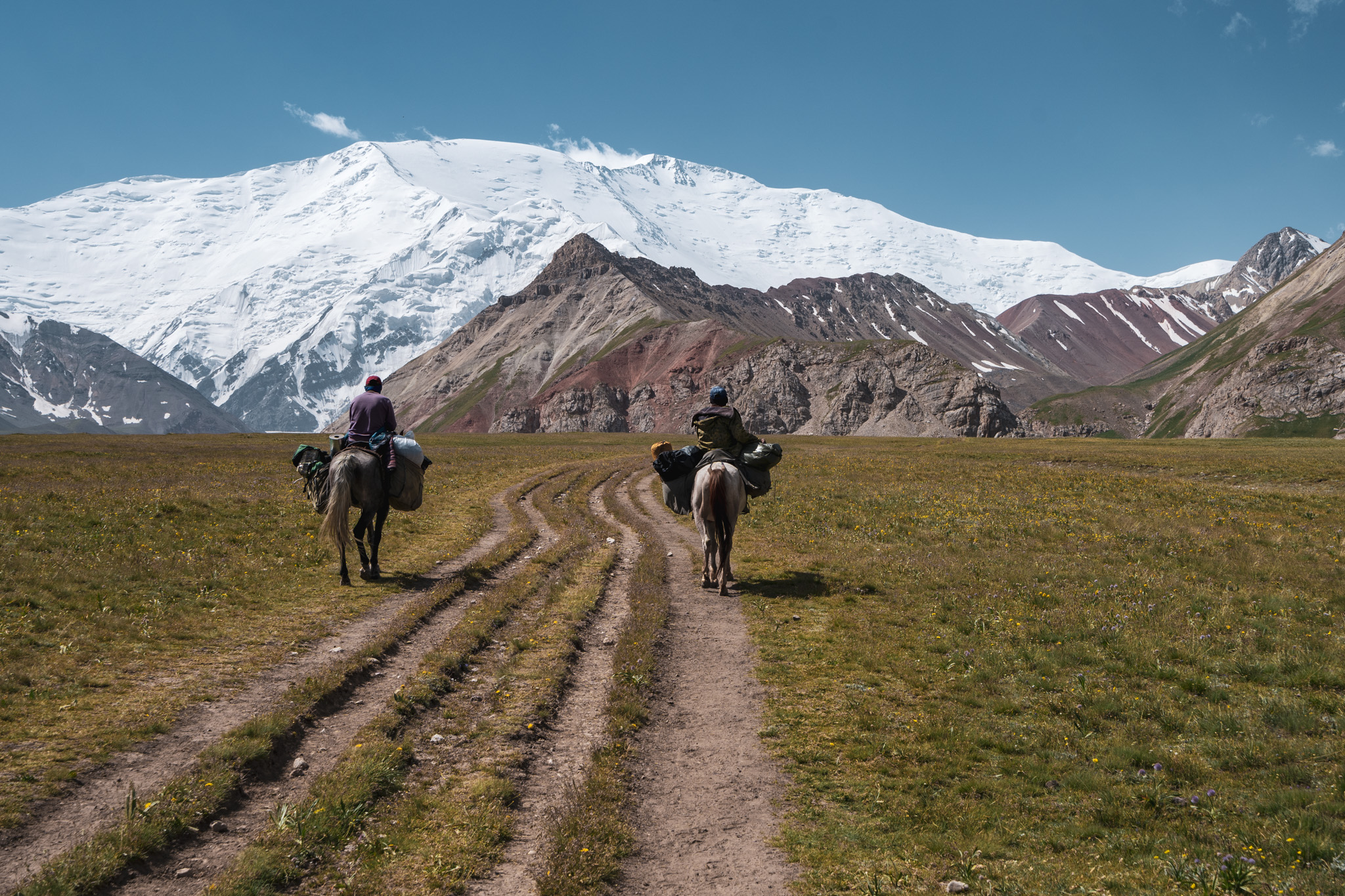
10 – Vast steppes and gorgeous mountains: While most of Kazakhstan is an empty steppe, there are some large mountains located in the Almaty and Altai regions of the country. The mountains in the Almaty region are super accessible (just a short bus ride from the city), and there are plenty of hiking and camping opportunities here.
11 – Almaty is the most European-like city in Central Asia: When you arrive in Almaty, you’ll notice immediately how European it feels. Everything from the architecture, cuisines, and way that people dress is quite a bit different than most of Central Asia. It’s a wonderful city to spend some relaxation time in after being in rural areas for a while. I ended up loving it so much I stayed in the city for almost two months!

12 – If you like history, Uzbekistan is for you: Out of all the Central Asian ‘stans, Uzbekistan has by far the best-preserved historical sights. The old cities of Bukhara and Khiva feel like living museums – you can wander around their endless alleys all day. Samarkand has the famous Registan and Gur-e-Amir (Mausoleum of Timur) which are two incredible sights that you can’t miss while travelling the Silk Road.
13 – The Aral Sea, one of man’s greatest mistakes: The Aral Sea was once a thriving sea in Uzbekistan, surrounded by fishing towns supporting tens of thousands of people. The Soviet Union decided to redirect the waters of the Aral Sea to use it as irrigation for cotton fields. Over time, this has lead to the Aral Sea almost completely drying up. Nowadays, one can visit the depressing former fishing town of Moynak to gain more insight into how the disaster affected people on the ground.
14 – Tashkent, the Soviet capital of Central Asia: Tashkent was the Soviet capital of Central Asia, and definitely still gives off those kinda vibes. The city is made up of giant 8-lane roads, large European looking buildings, and has plenty of monuments to look at if you’re bored.
For more info on travel in Uzbekistan, be sure to check out my detailed 2-week Uzbekistan itienerary !
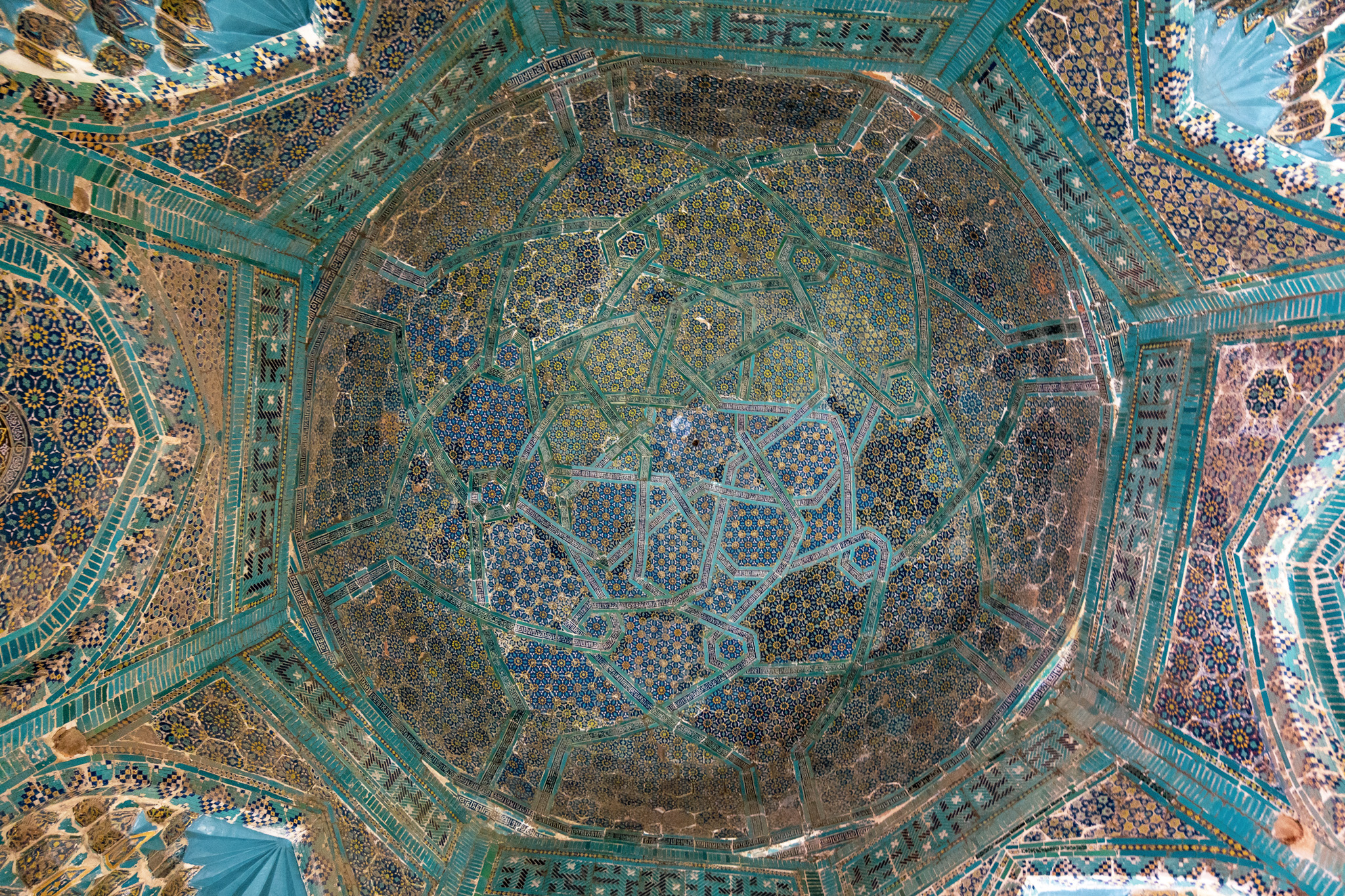
Ceilings in Samarkand, Uzbekistan
15 – World’s greatest road trip: Tajikistan is home to the Pamir Highway, arguably the world’s greatest road trip. The Pamir Highway travels through Tajikistan’s mountainous Pamir Region near the border with Afghanistan. When travelling on the highway, you’ll drive over epic 4,500 meter passes, descend into gorgeous valleys, and meet some of the most hospitable people on Earth.
16 – Undiscovered, yet ready to explore: Tajikistan often gets overshadowed by neighbouring Uzbekistan and Kyrgyzstan, but it’s so unique and beautiful it’d be a shame to miss it. There are plenty of regions of Tajikistan that see almost no tourists (the Bartang Valley, parts of the Fann Mountains, the Eastern Pamir). Tajiks are very friendly and the Persian influence on their culture is very unique from the rest of Central Asia.
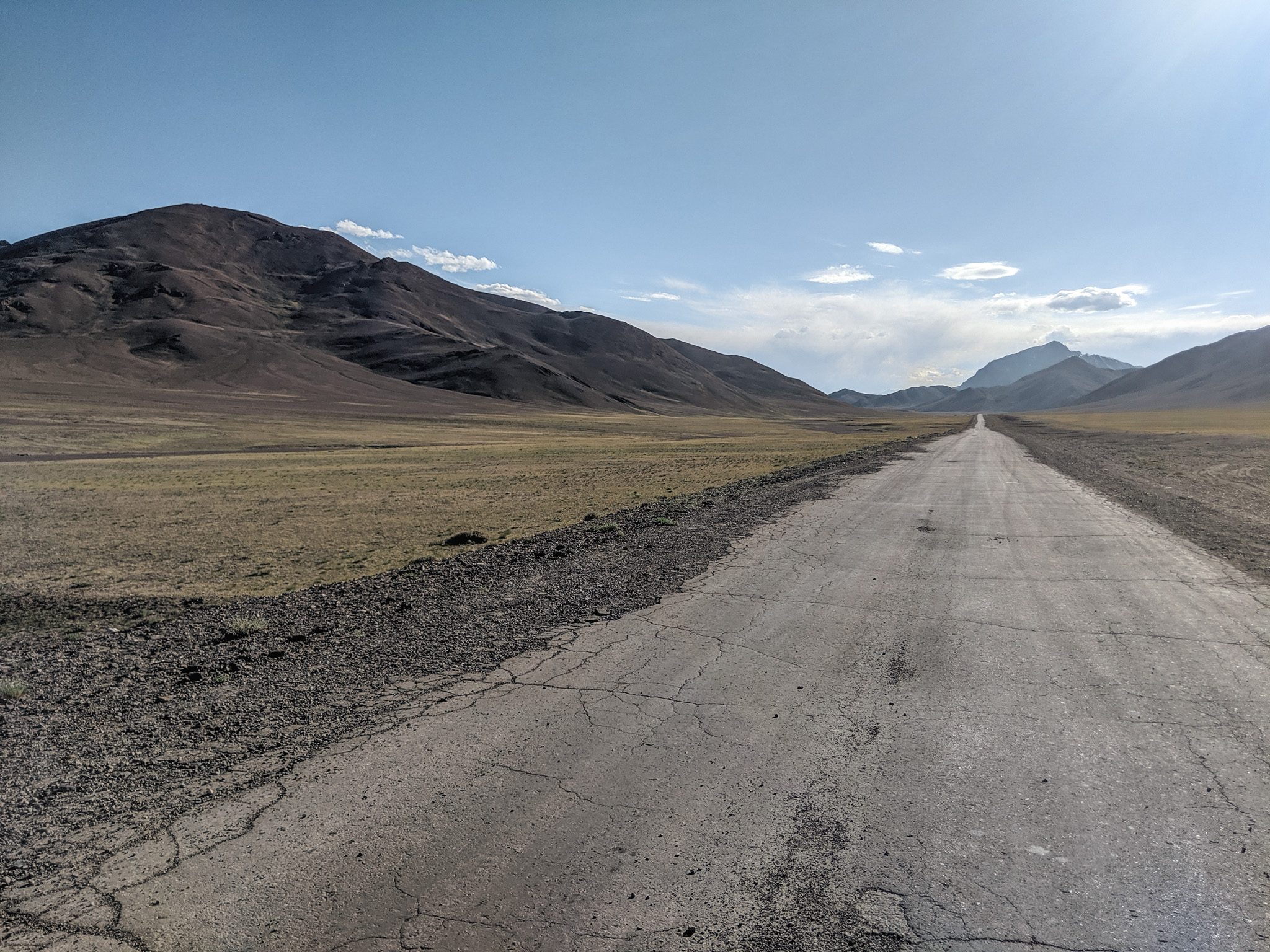
Turkmenistan
17 – The North Korea of the Silk Road: Turkmenistan is a very closed off country, and is often touted as the North Korea of Central Asia. Tourist visas are impossible to get without visiting on a guided tour, making the country pretty off-limits for most backpackers.
Afghanistan (Wakhan Corridor)
18 – Marco Polo’s route to China: During his travels along the Silk Road, Marco Polo passed through the Wakhan Corridor and Little Pamir to enter China via the Wakhjir Pass (4,923 m). This is one of the most remote and treacherous trade routes around, but locals have no choice but to use it.
19 – One of the most untouched places on the planet: Visiting Afghanistan’s Wakhan Corridor is like a trip back in time. Much of the region still doesn’t have any electricity and internet access is-non existent. This place isn’t for everyone, but experienced travellers will remember it for the rest of their lives.
For more info on visiting, check out my detailed guide to Afghanistan’s Wakhan Corridor .
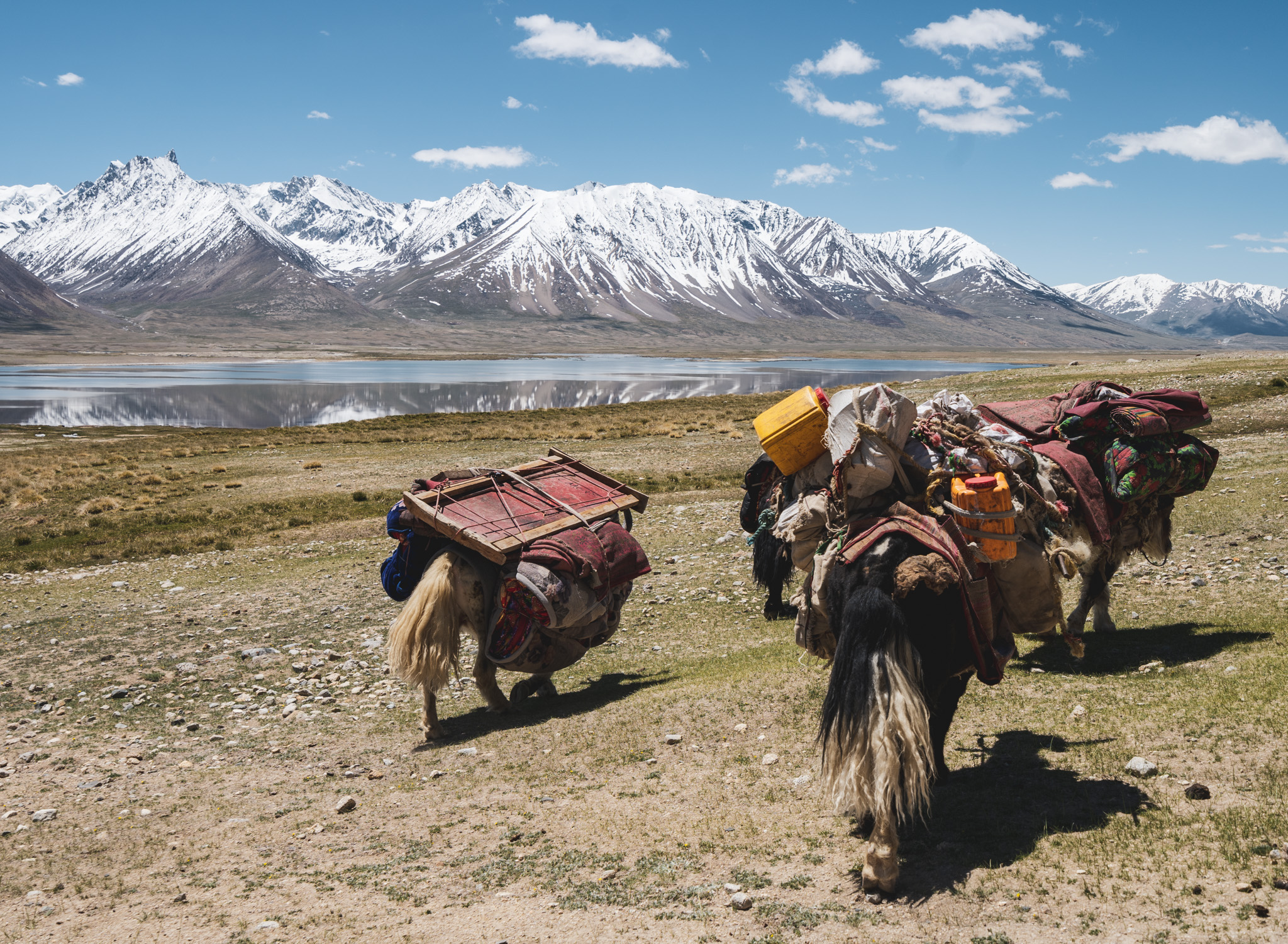
Silk Road Travel Routes
So now that you know a little bit about the countries that lie along the Silk Road, what is the best way to travel through them?
Let’s go over a few classic Silk Road travel itineraries.
20 – China to Central Asia – the classic Silk Road route: If you want to follow the classic route that traders would’ve taken towards Europe, begin your journey in Xi’an and start heading west. You should stop in Lanzhou, Dunhuang, Zhangye, Turpan, Urumqi, and Kashgar before crossing the Irkeshtam Pass into Kyrgyzstan.
When you’re in Kyrgyzstan, you’ve got a few options. You could head south to Tajikistan along the Pamir Highway, or go north to Bishkek (Kyrgyzstan’s Capital) before crossing to Almaty for a little taste of Europe in Central Asia. From either Tajikistan or Kazakhstan, cross the border into Uzbekistan and check out the famous oasis cities of Bukhara and Khiva.
You can end your trip after Uzbekistan, or consider applying for a Turkmenistan transit visa to continue onto Iran if you’ve got even more time.
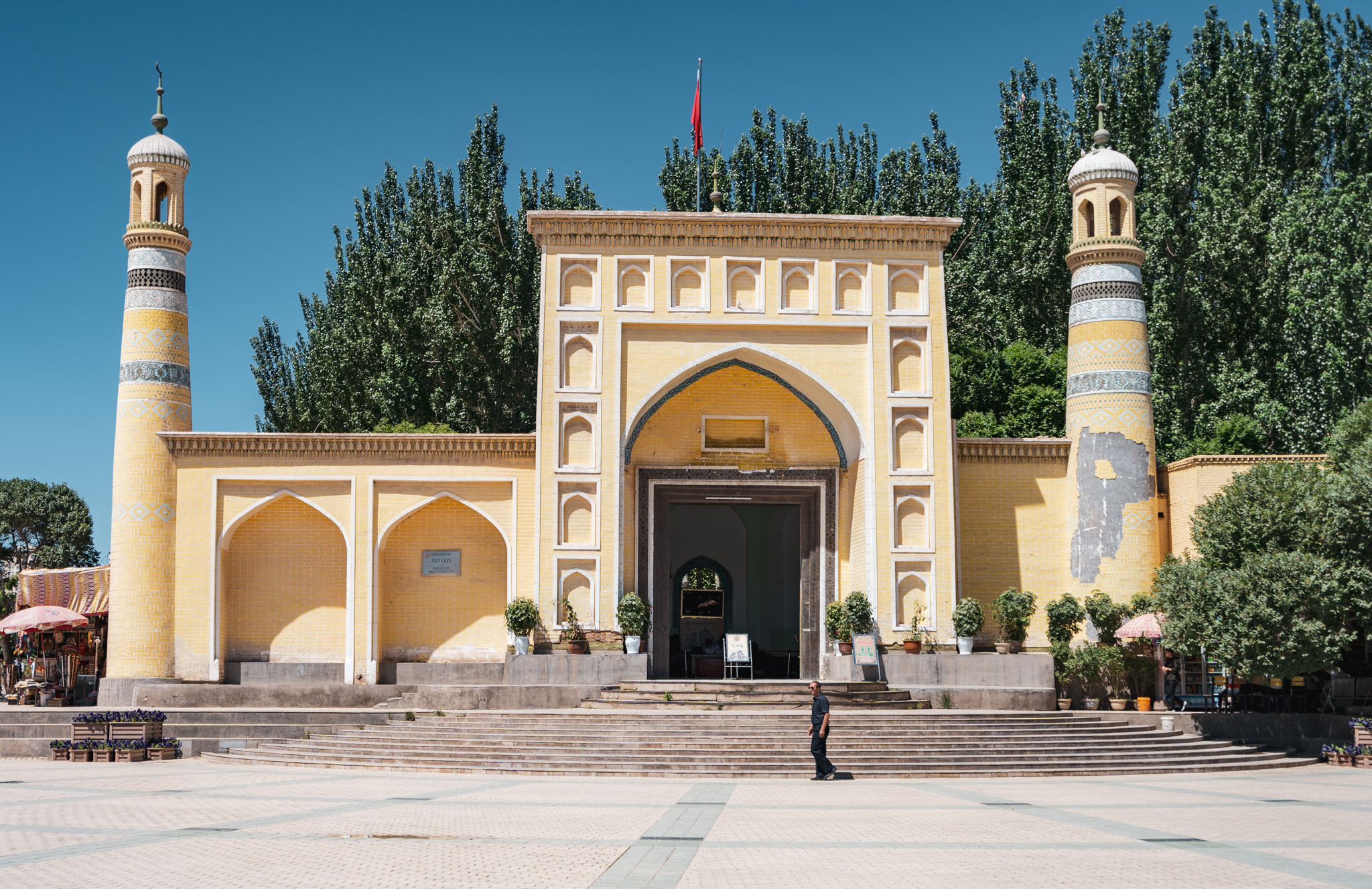
21 – The Central Asia Loop itinerary: If you want to focus on the heart of Central Asia, you need to visit Kazakhstan, Kyrgyzstan, Tajikistan, and Uzbekistan.
I’d recommend flying into Almaty, then heading down to Bishkek for some time exploring Kyrgyzstan (Karakol and Osh are must-sees). After that, head south to Dushanbe, Tajikistan via the Pamir Highway and Wakhan Valley (and hop into Afghanistan’s Wakhan Corridor if you’re up for it!).
After Dushanbe, visit Tajikistan’s Fann Mountains (if you’re not yet tired of mountains) before crossing the border into Uzbekistan. While in Uzbekistan, check out Khiva, Bukhara, Samarkand, and Tashkent before taking an overnight train back to Almaty.
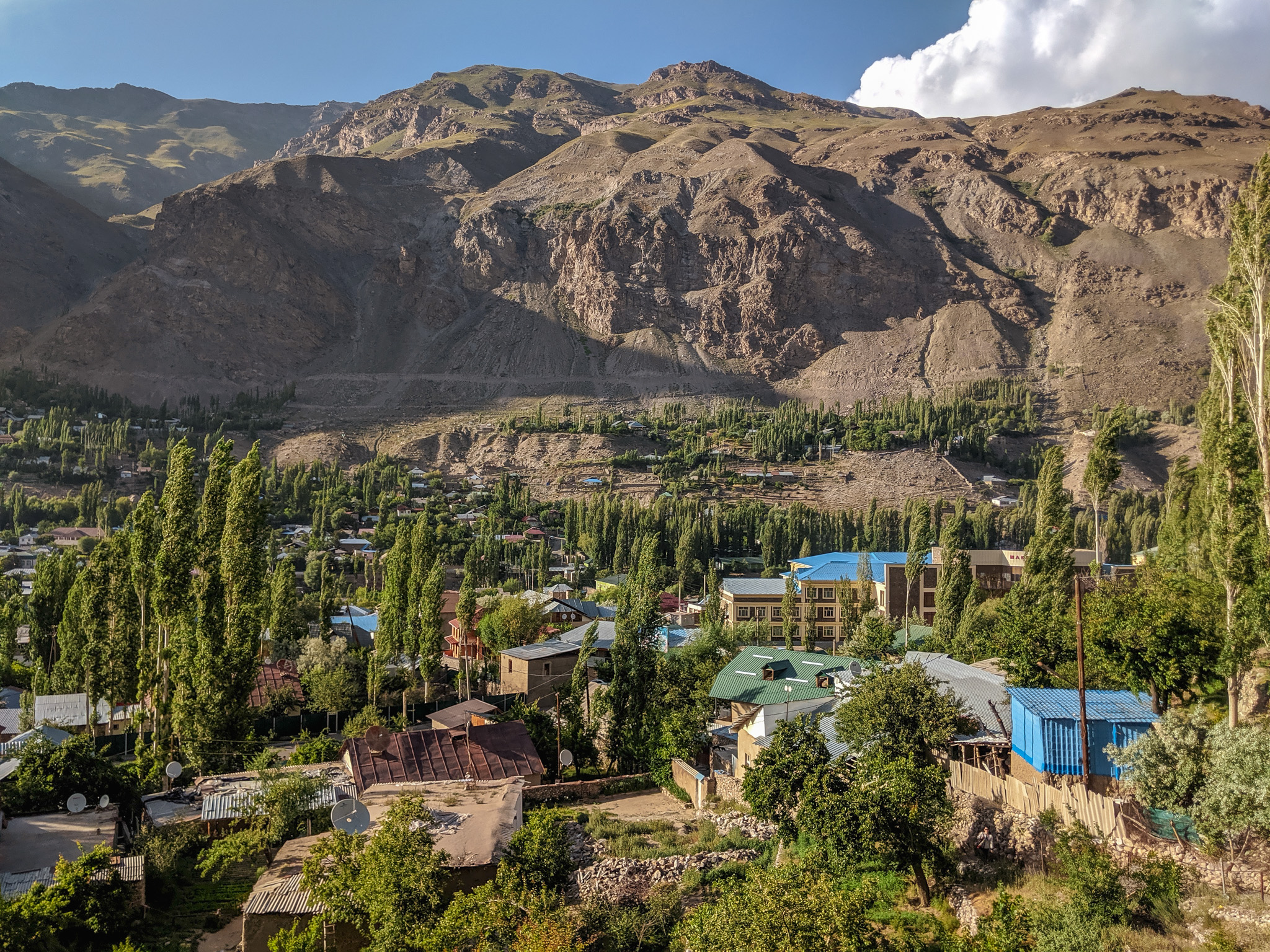
Food along the Silk Road
22 – Food along the Silk Road is very diverse: Plov, Lagman, Shashlik, Samsas and Beshbarmark are just some of the unique foods that you’ll encounter while travelling around this part of the world. Central Asian food tends to be meat and dairy heavy, whereas Chinese food focuses much more on spices to add flavour.
23 – Plov and Lagman are the most common dishes: In all of the Central Asian countries, you’ll be able to find plov and lagman. Plov is a rice dish with meat and veggies (usually beef and carrots). Lagman is a noodle dish that originates from Uyghur parts of Central Asia. It’s typically made with pulled noodles, meat and vegetables. Spice levels with lagman vary, I only ever found it spicy enough in Xinjiang (China).
24 – Kumis is an alcoholic dairy drink: Made from fermented horse milk, you’ll often find kumis in rural areas of Kazakhstan and Kyrgyzstan. It’s got a slight alcohol percentage and a sour taste that takes some getting used to!
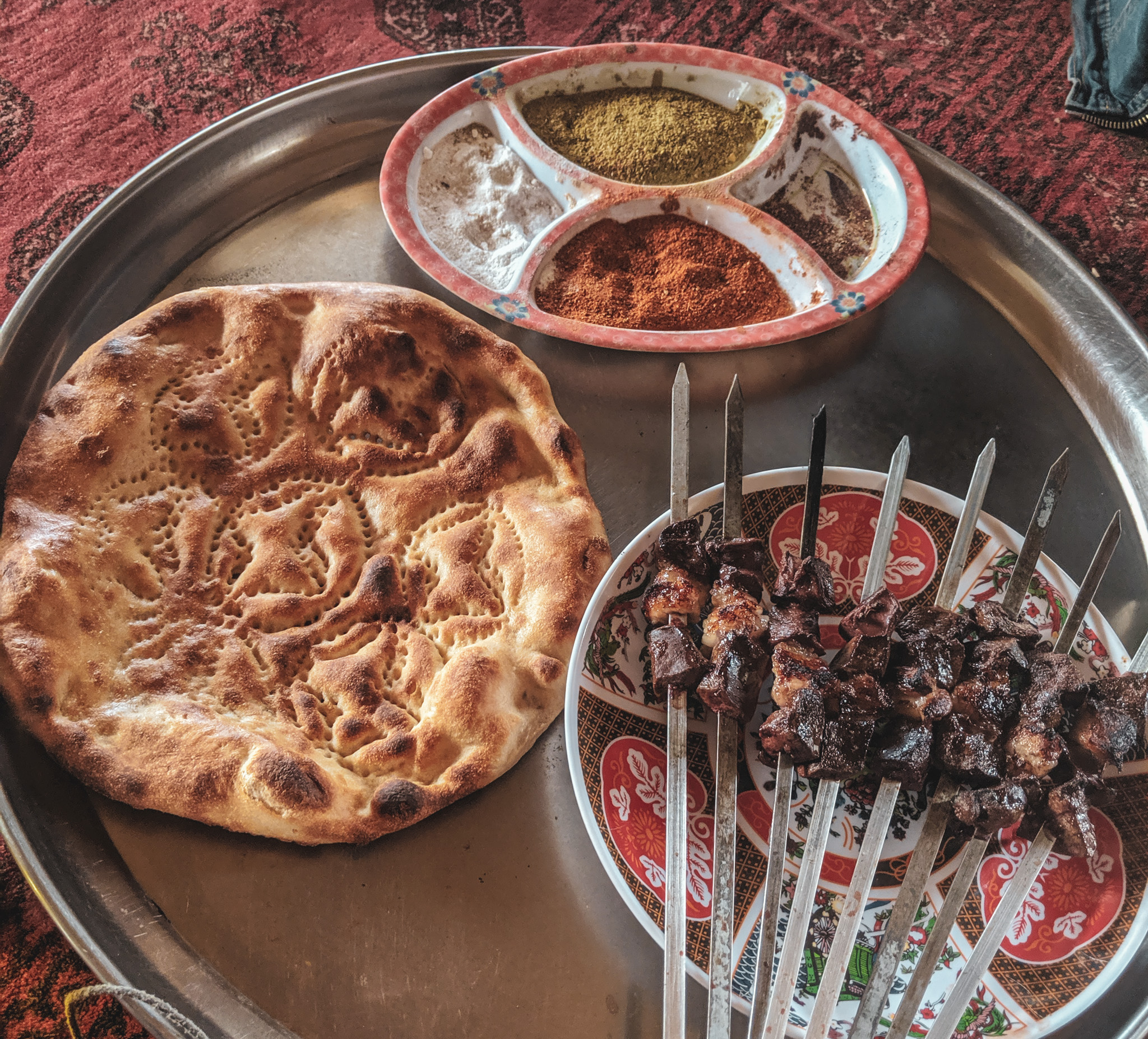
People & Culture of the Silk Road
25 – The Silk Road is incredibly diverse: There are so many different ethnic groups in Central Asia, it’d be impossible to list them all. The most common ones that you’ll encounter are Uyghurs, Kazakhs, Kyrgyz, Uzbeks, Tajiks, and Dungans. As a result of the Soviet Union and China, there are also plenty of Han Chinese, Russians, and Koreans scattered around Central Asia.
26 – Islam is the most common religion: All Central Asian ‘stans are Muslim, and much of the Xinjiang region of China is as well (at least.. for now). Kyrgyzstan and Kazakhstan are the most liberal areas, with plenty of people drinking alcohol and not fasting during Ramadan.
Uzbekistan and Tajikistan are more conservative, especially the southern regions of both countries. However, they are still much more liberal than places like Pakistan or Saudi Arabia .
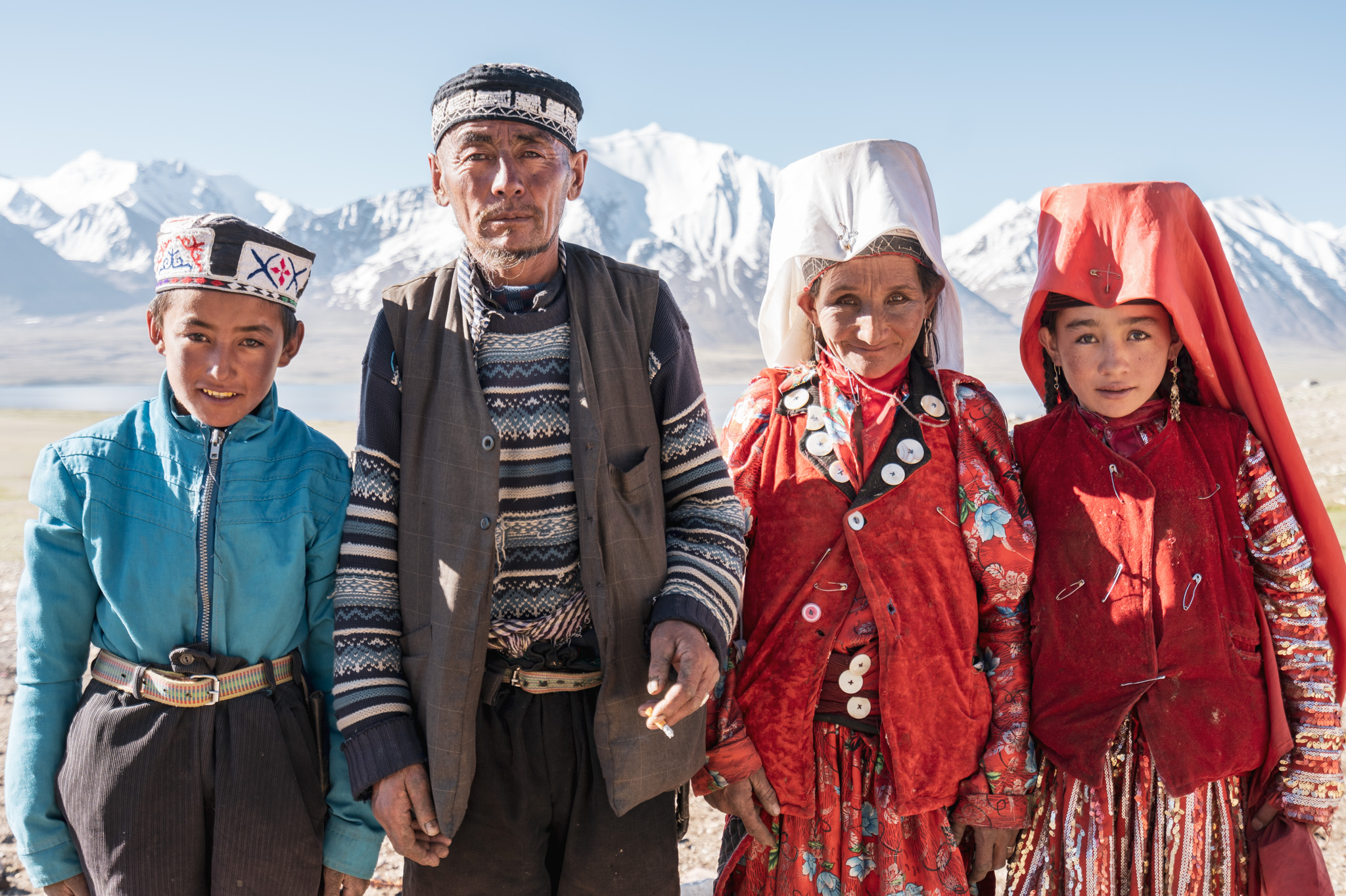
27 – People are extremely hospitable: One thing that all of the people living in Central Asia have in common is their hospitality. No matter where I went, I was always welcomed with open arms and a cup of chai. People don’t see very many tourists around here and want to treat their guests as well as they can. You don’t have to worry about people being unfriendly here – just keep a smile on your face and you’ll have a wonderful time.
28 – Dress code varies from country to country: In liberal Almaty, girls can wear whatever they want and nobody will bat an eye. Try to do that in southern Tajikistan and you’ll get a different reaction.
In more religious areas, you should dress modestly. For the dudes, pants and a t-shirt is fine everywhere in Central Asia. For females, nothing revealing and you’ll be ok.
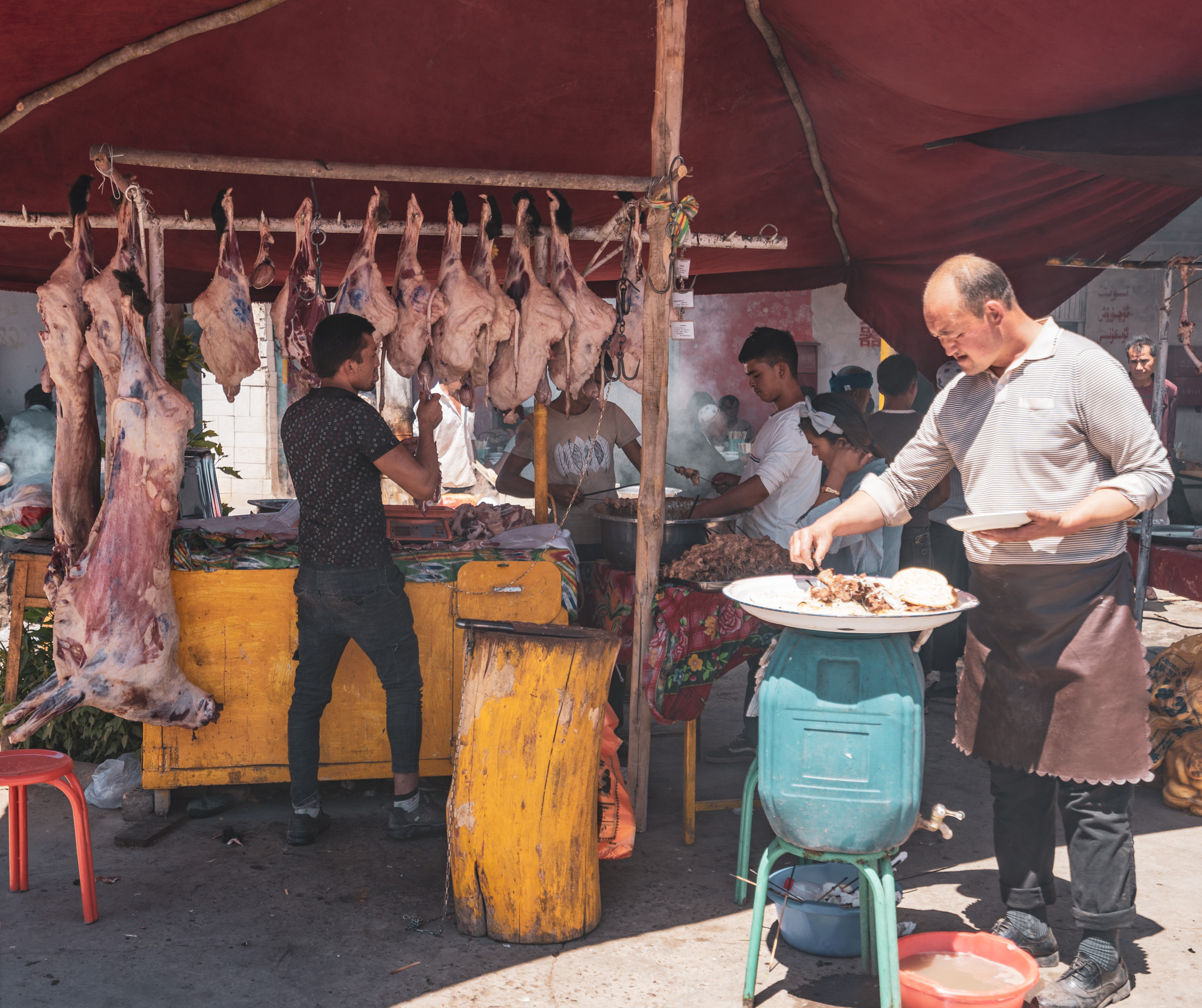
Visas for travelling the Silk Road
29 – Visas issues in Central Asia are disappearing: Central Asia used to be one of the most difficult regions to travel around. Travellers would need a visa for every country, and they wouldn’t be easy to get.
Nowadays, things are a lot easier. Uzbekistan and Kazakhstan offer 30-day visa-free access for a number of nationalities. Kyrgyzstan gives 60-days for most people. Tajikistan still requires an e-visa, but it is easy to apply for online and can be gotten within a week or so and is valid for 45-days.
China still requires a visa, but it should be fairly straightforward to apply for before you leave home.
Turkmenistan is still locked down. You can’t get a tourist visa without a guided tour, although travellers are sometimes able to visit independently on a short 5-day transit visa.
30 – Border crossings aren’t too bad: Unless you fly everywhere, you’ll end up having to cross some borders while travelling the Silk Road.
Most border crossings in Central Asia are fairly straightforward now, and you don’t need to worry about a strict bag inspection or anything.
Exceptions are borders into and out of China. Expect a full bag inspection, as well as a search of all the photos on your electronic devices.
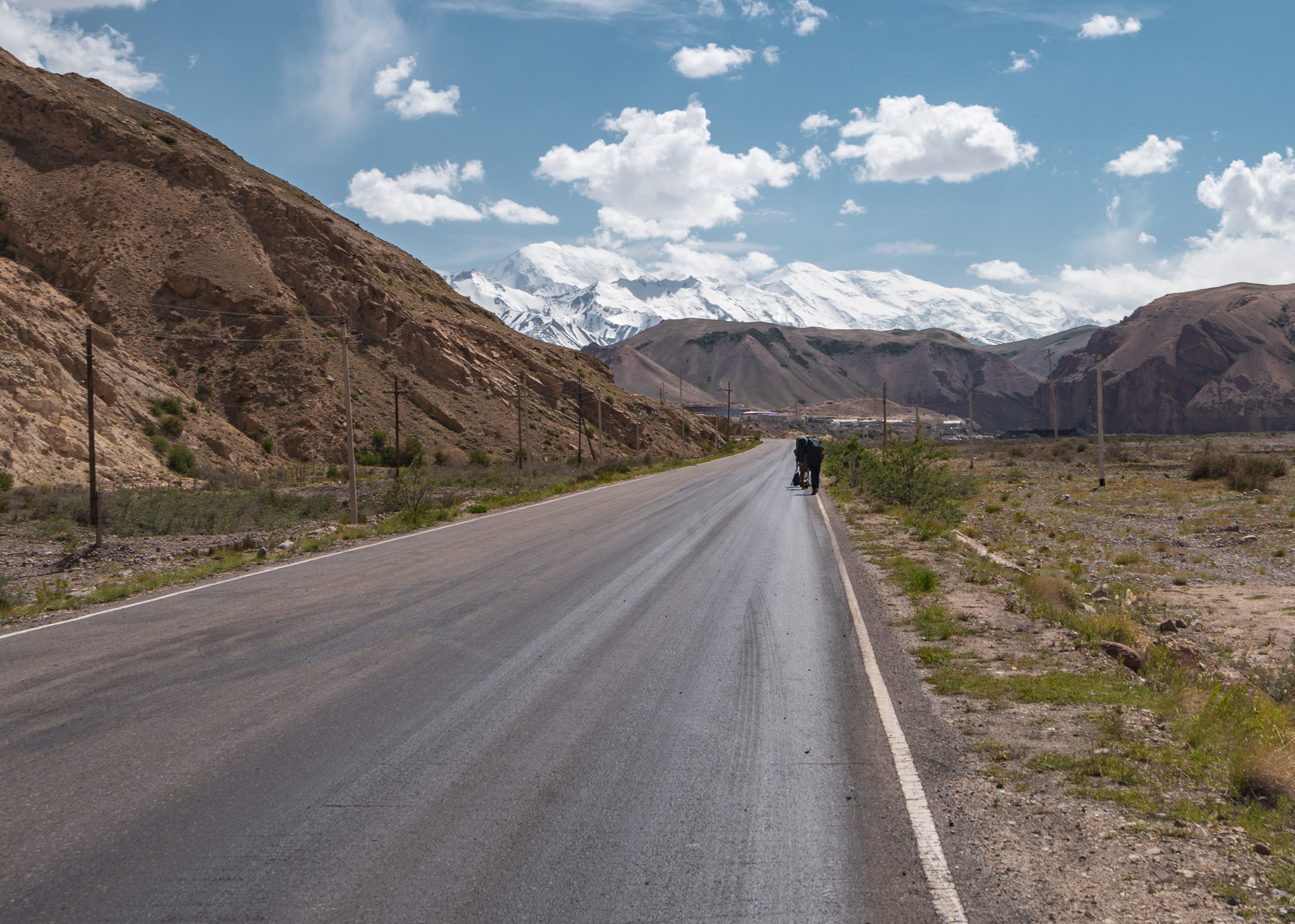
Safety along the Silk Road
31 – Central Asia is reasonably safe: I’ve spent a long time in Central Asia, and never once had any safety issues. While this is simply anecdotal, governments usually just advise travellers to proceed with caution while in Central Asia.
There are areas that are more dangerous than others. Parts of the Uzbek/Kyrgyz border infrequently have small violent clashes (you wouldn’t visit here anyway), and southern Tajikistan sometimes has issues.
The areas that tourists usually visit are very safe, in my opinion.
32 – Be careful with nature: I’d guess that most issues that arise when travelling in Central Asia are due to altitude sickness and twisted ankles. If you’re planning a trip along the Pamir Highway, you need to be sure to properly acclimatize or you could get altitude sickness. When hiking, always be careful and go with a guide if you’re unsure of your abilities.
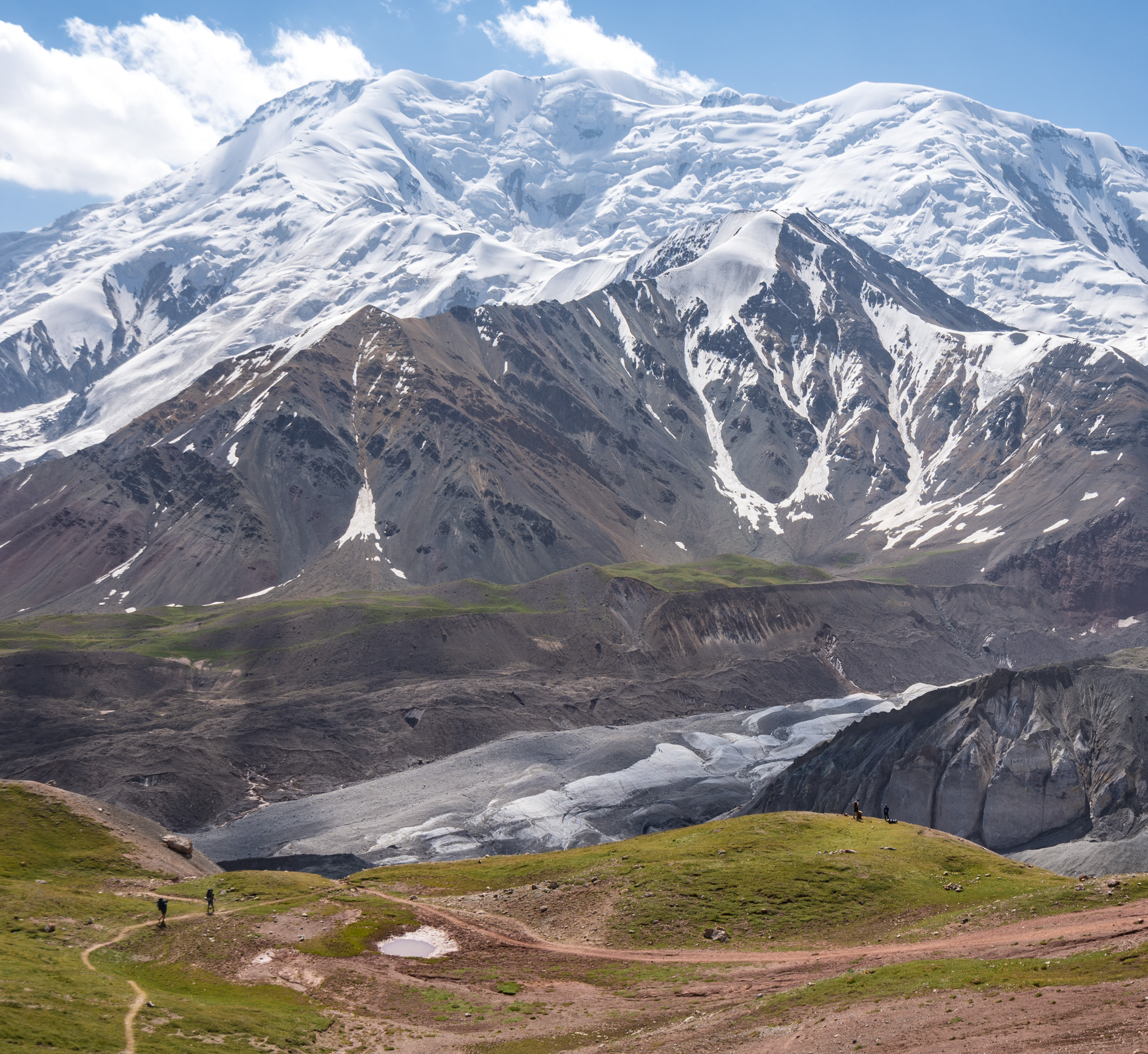
33 – Driving can be dangerous: Like everywhere in the world, Central Asia has some crazy drivers. Combine this with windy mountain roads, and you’re asking for disaster.
All you can do here is get out of a vehicle if you feel unsafe. If the driver smells like alcohol, that’s a bad sign.
In many places, you can take a train rather than drive, but driving is required to travel around Kyrgyzstan and Tajikistan.
34 – Don’t forget your travel insurance: No matter where you go, you should always have travel insurance – Central Asia is no exception. Even though Central Asia is safe, accidents can still happen.
I personally use and recommend World Nomads. It’s designed for adventurous travellers with cover for overseas medical, evacuation, baggage and a range of adventure sports and activities (important if you plan on doing any hiking or other outdoor activities while in Central Asia).
GET YOUR FREE QUOTE FROM WORLD NOMADS HERE
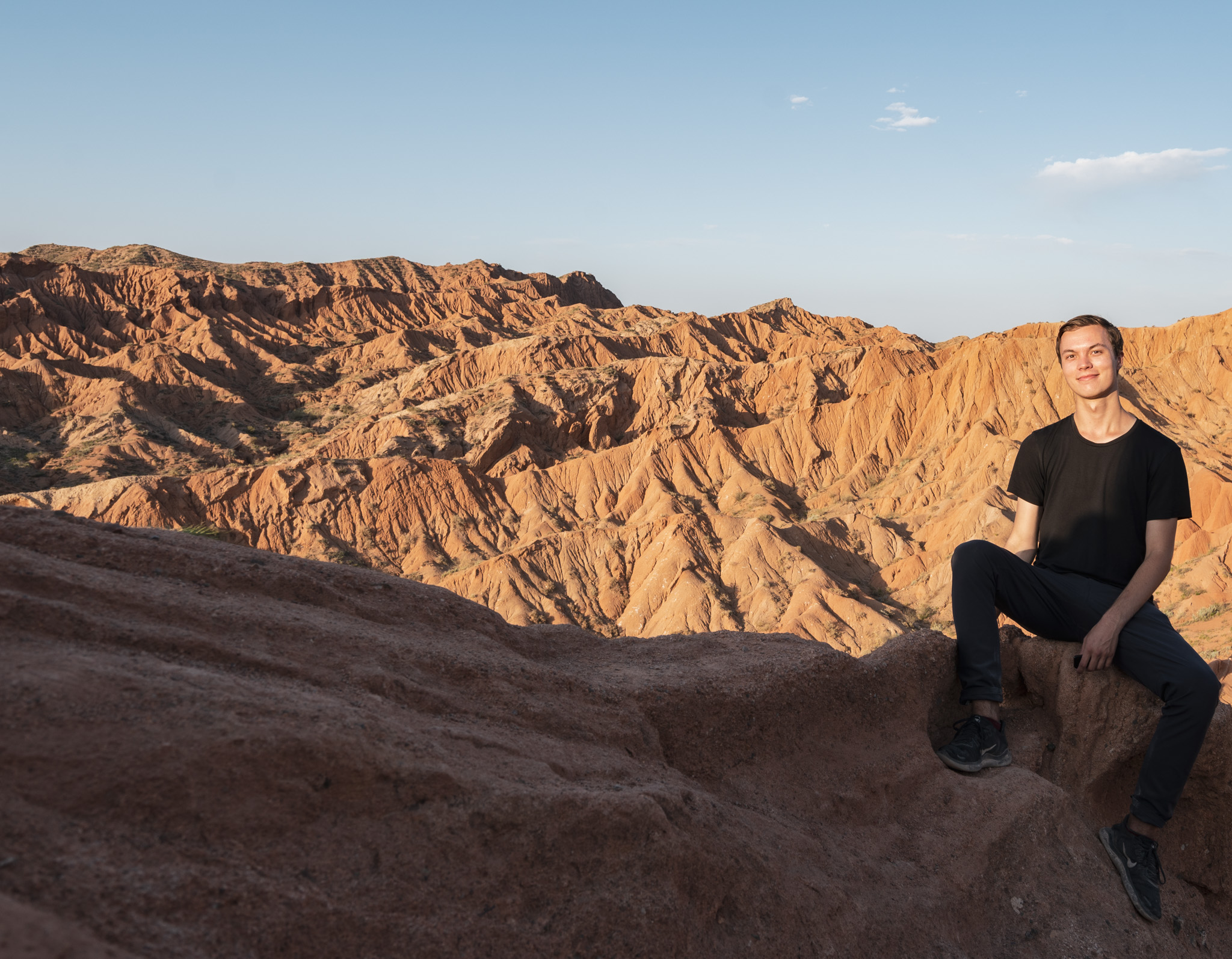
Transportation while travelling the Silk Road
35 – Travelling the Silk Road involves long journey times: Distances are massive along the Silk Road, and the roads and railways are usually not the most modern.
For example, a train from Xi’an to Kashgar takes a solid 40 hours, and a minivan from Bishkek to Osh takes about 14 hours.
Patience is key here, but at least you’ll be able to look out the window and enjoy views of the epic scenery of Central Asia.
36 – When you can, take the train: Trains aren’t always an option, but in China, Kazakhstan, and Uzbekistan they have pretty good networks. Trains are much more comfortable for long distances than buses, and they often run overnight so you can just sleep in a bed the entire journey.
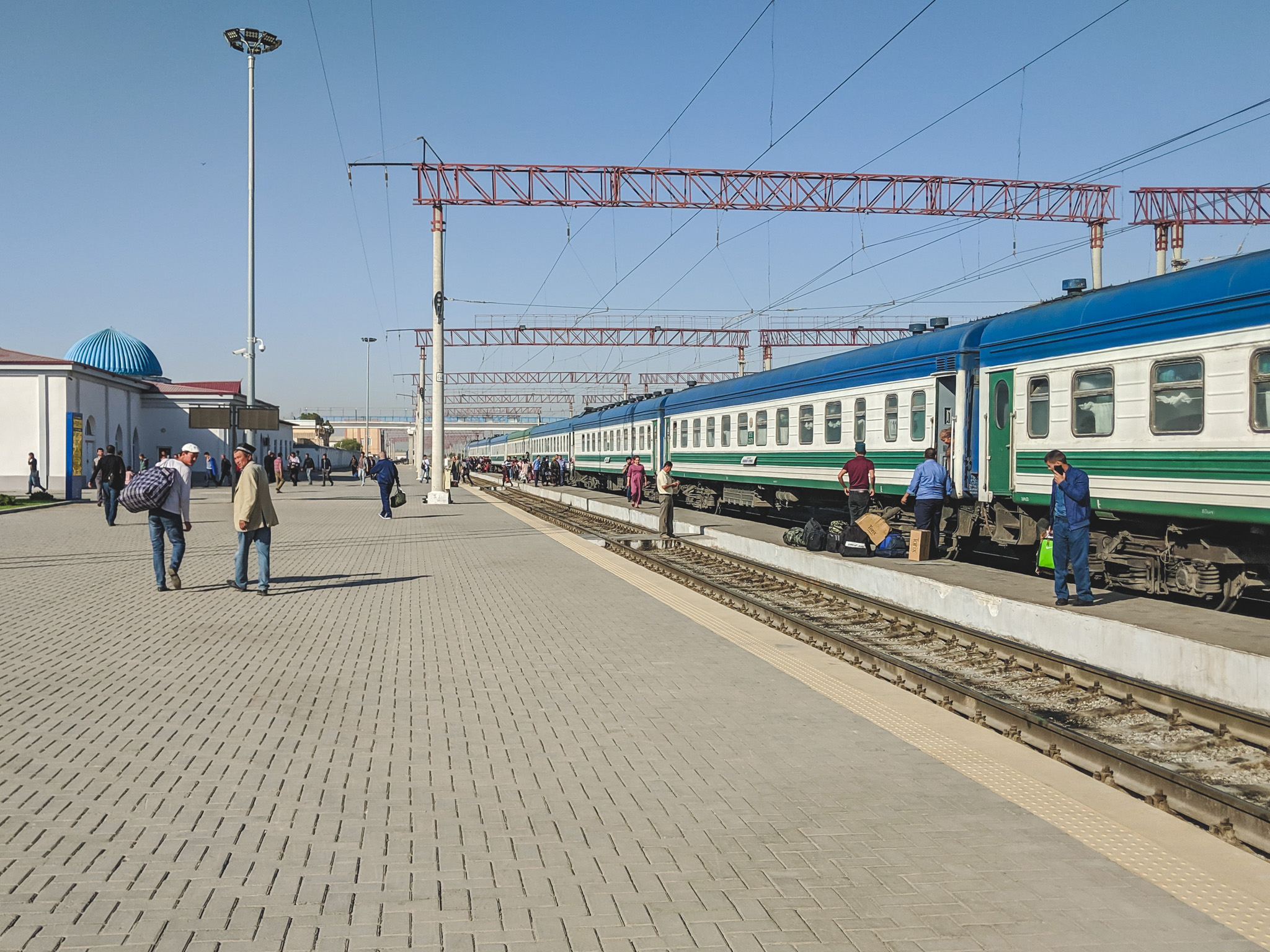
37 – Get ready for a lot of marshrutka rides: Marshrutkas (minivans) are the backbone of Central Asia. They run throughout all of the former Soviet Union countries and are pretty affordable.
Try to avoid sitting in the very back – it’s uncomfortable and you can’t see anything. Bring plenty of water, as these things don’t usually have air conditioning and the Central Asian summer gets bloody hot.
38 – Consider flying if you’re short on time: While I prefer overland travel, I understand that not everybody has 6 months to spend screwing around in Central Asia.
If you need to get from Osh to Bishkek (and you’ve already seen that epic drive at least once), then just take the $30 flight and skip the 14-hour long drive.
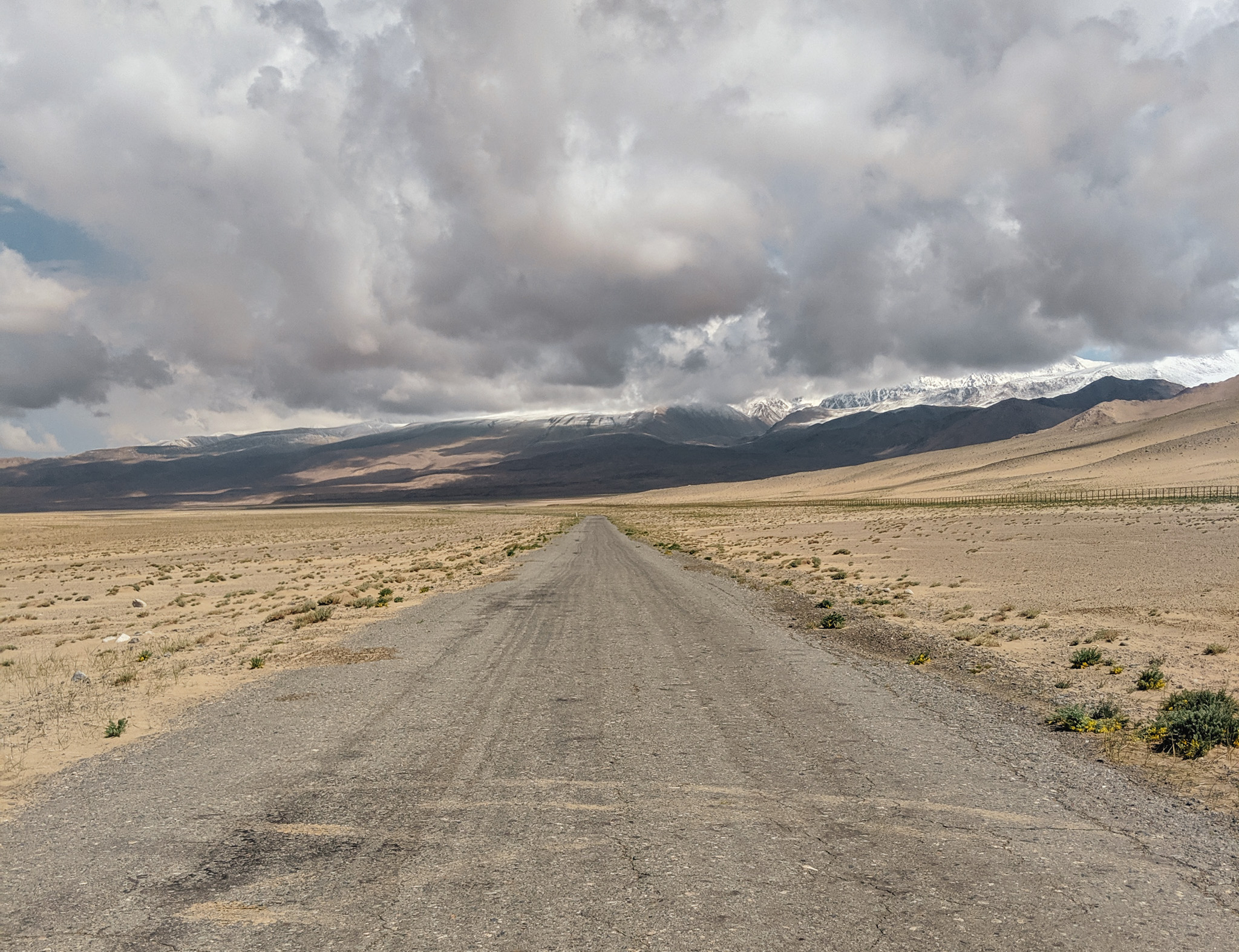
Accommodation while travelling the Silk Road
39 – Most forms of accommodation are available: In most places that you’ll visit while travelling the Silk Road, there are both budget and mid-range accommodation types available.
Hostels are common in Central Asia and are very affordable. Hotels are also found in all cities and large towns.
In rural areas, I recommend staying at a homestay to experience true Central Asian hospitality.
40 – When you’re in Kyrgyzstan, you need to sleep in a yurt : The yurt is the traditional home of nomadic Kyrgyz, Kazakh, and Mongolian people. A yurt is a round, single-room building that is usually white on the outside. They’re warm and comfortable even when high in the mountains.
Tourist yurts are common in Kyrgyzstan, and the perfect place to spent a night while trekking.
41 – Research your Xinjiang accommodation in advance: The far west Chinese province of Xinjiang has a lot of restrictions on which hotels foreigners are allowed to stay at. The list is always changing, so you need to do a bit of research to find where you’ll be allowed to stay during your trip.
If you’re travelling with a tour, this would be arranged for you.
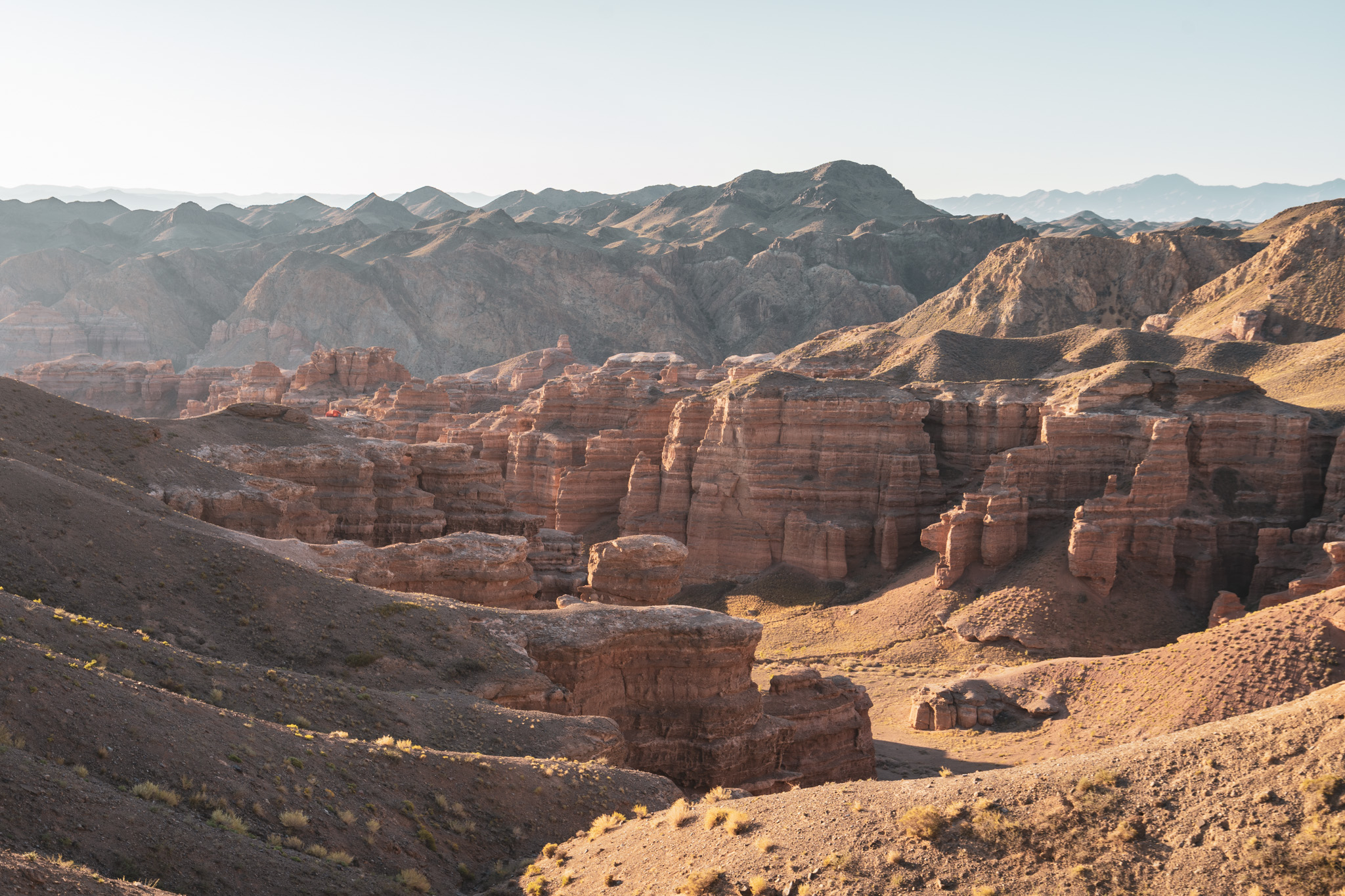
Silk Road Travel Costs
42 – Central Asia is a pretty cheap place: While not as cheap as India or Vietnam, travelling in Central Asia is still very affordable. If you stick to hostels, local food, and public transport, you can easily keep your budget around $35 per day.
If you want a bit more luxury, push that budget to $50 and you’ll be able to have amazing meals and stay in pretty nice places.
43 – China can be a bit more pricey: With China’s economic boom, prices have been increasing. While travelling in China is affordable for the most part, certain things like entrance fees and train tickets can add up over time.
44 – Money-saving tips: To save some money while travelling in Central Asia, I’d recommend using Couchsurfing and hitchhiking when possible.
Couchsurfing is a great way to meet locals, and you’ll save a bit of cash. Hitchhiking in Central Asia is fairly easy, although you sometimes have to pay a small amount (even locals do this).
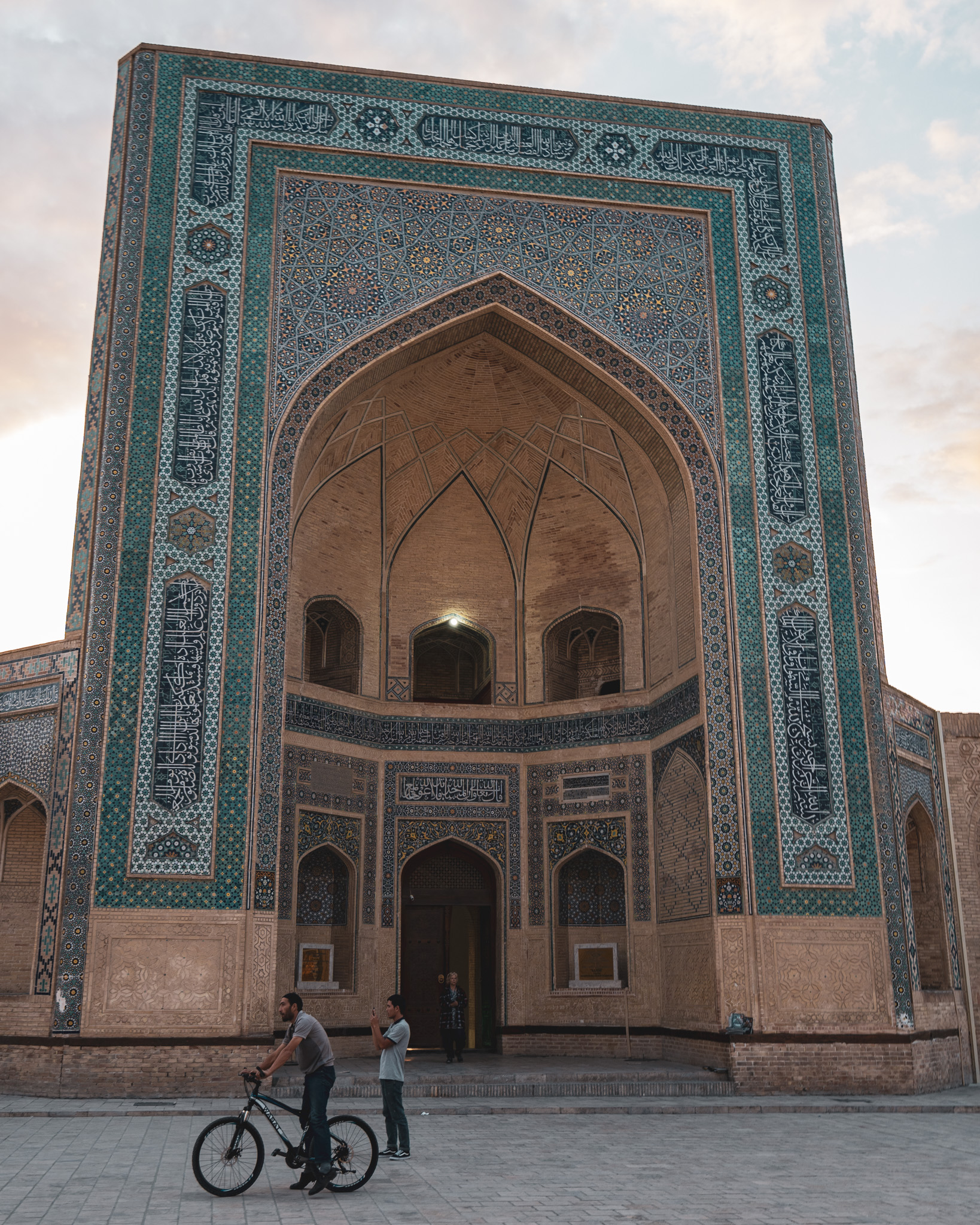
When to travel the Silk Road
45 – Summers are super hot: The Central Asian summer is extremely hot. Summer temperatures can reach 50°C in Uzbekistan and Turkmenistan, and cities like Tashkent and Dushanbe get pretty unbearable. Central Asia is quite dry, so you don’t need to worry about humidity, at least.
However, summer is the perfect time if you want to get into the mountains of Kyrgyzstan or Tajikistan. The trekking season is short here, usually running from June to mid-September. If you’re at all interested in outdoor adventures, summer is a great time. You’ll just need to bear the city heat while you pass through them.
46 – Spring and Autumn are perfect: For the most comfortable experience, travel the Silk Road during spring or autumn. These seasons bring comfortable temperatures, especially in places like Uzbekistan. In the mountains of Tajikistan and Kyrgyzstan, things will be a bit chilly but it’s still possible to do some short hikes.
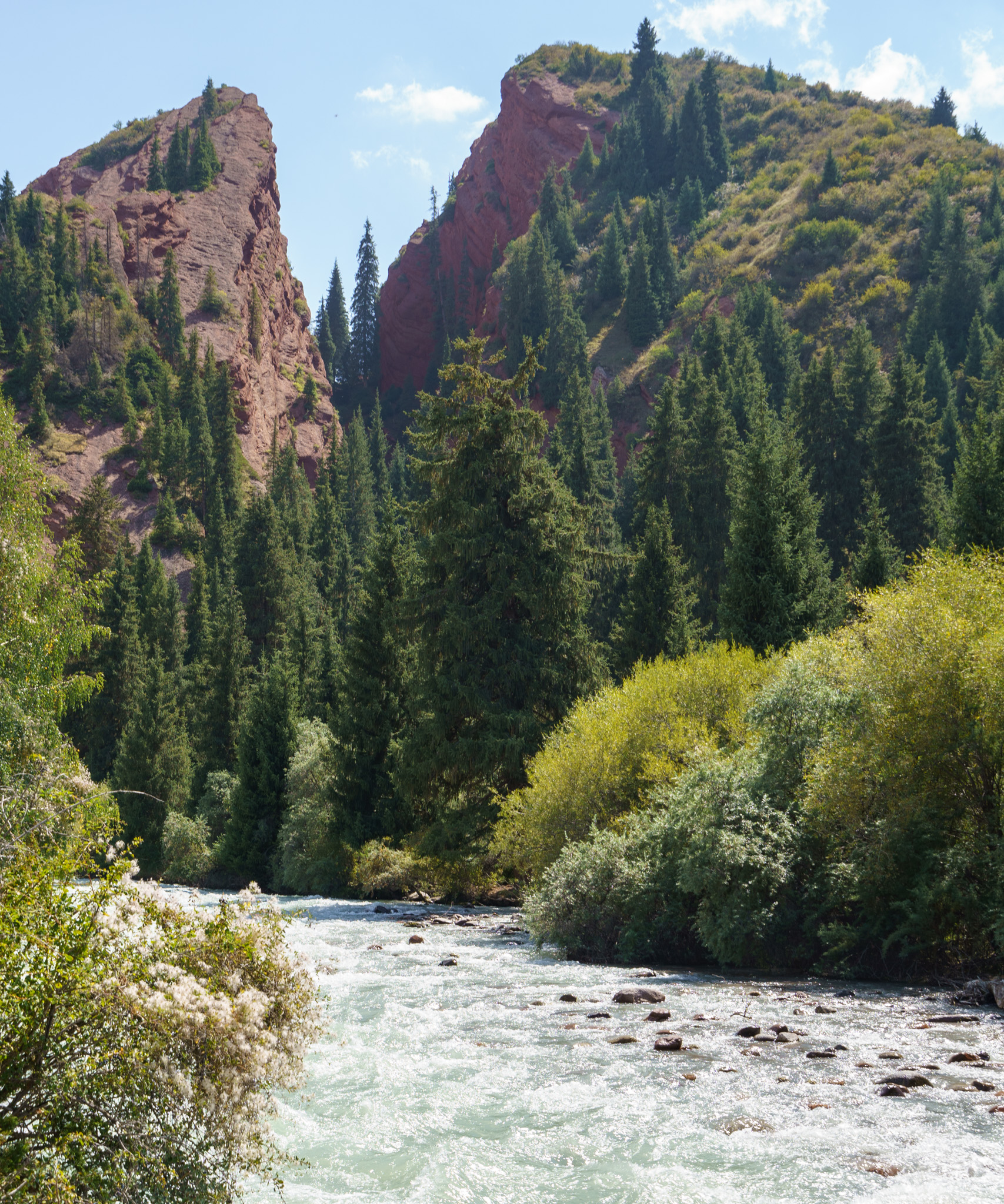
47 – Winters are harsh: Central Asia is a land of extremes. Winter brings freezing temperatures to much of the region. While travel is doable at this time of year, bring warm clothes and understand that certain summer activities just won’t be possible.
Snow-covered landscapes are beautiful, and the Silk Road landscapes look unique while covered in a blanket of fresh white snow.
If you’re a skier, you’ll be happy to know that Almaty, Bishkek, and Karakol have some great hills! Rental prices are pretty reasonable.
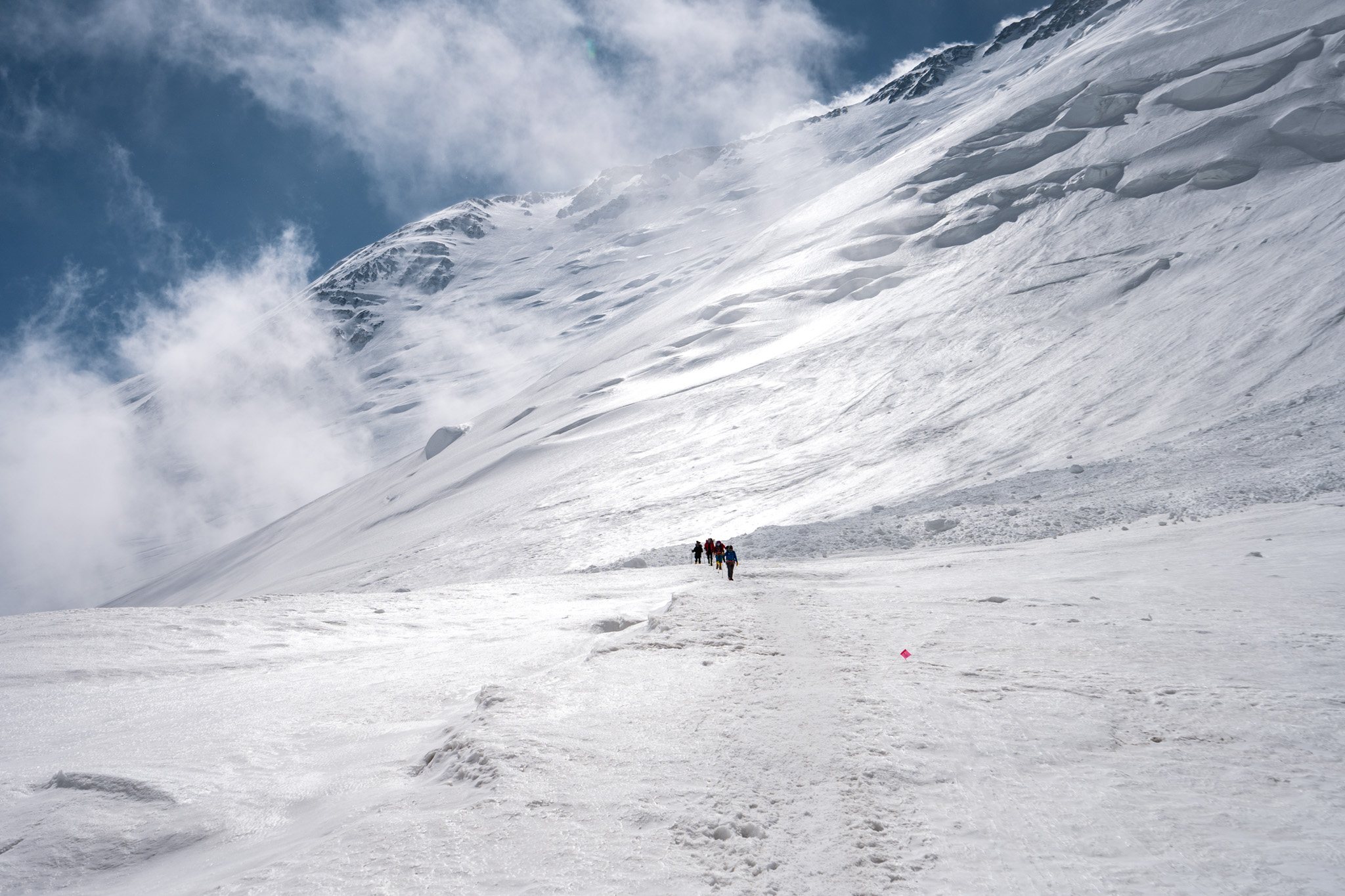
Communication along the Silk Road
48 – Russian is the most useful language: The five Central Asian ‘stans spent quite a while in the Soviet Union, and the Russian language spread throughout them during this time.
In Kyrgyzstan and Kazakhstan, almost everybody knows Russian, especially in the cities. It’s much more common to hear Russian being spoken in Bishkek than Kyrgyz.
Uzbekistan still has quite a lot of Russian speakers as well, especially in Tashkent. In Tajikistan and Turkmenistan, Russin is less common but it’s still possible to find some speakers of it.
While you obviously don’t need to learn Russian to travel in Central Asia, it sure does help to learn the Cyrillic alphabet and some basic phrases.
I recommend picking up a Russian phrasebook before leaving home.
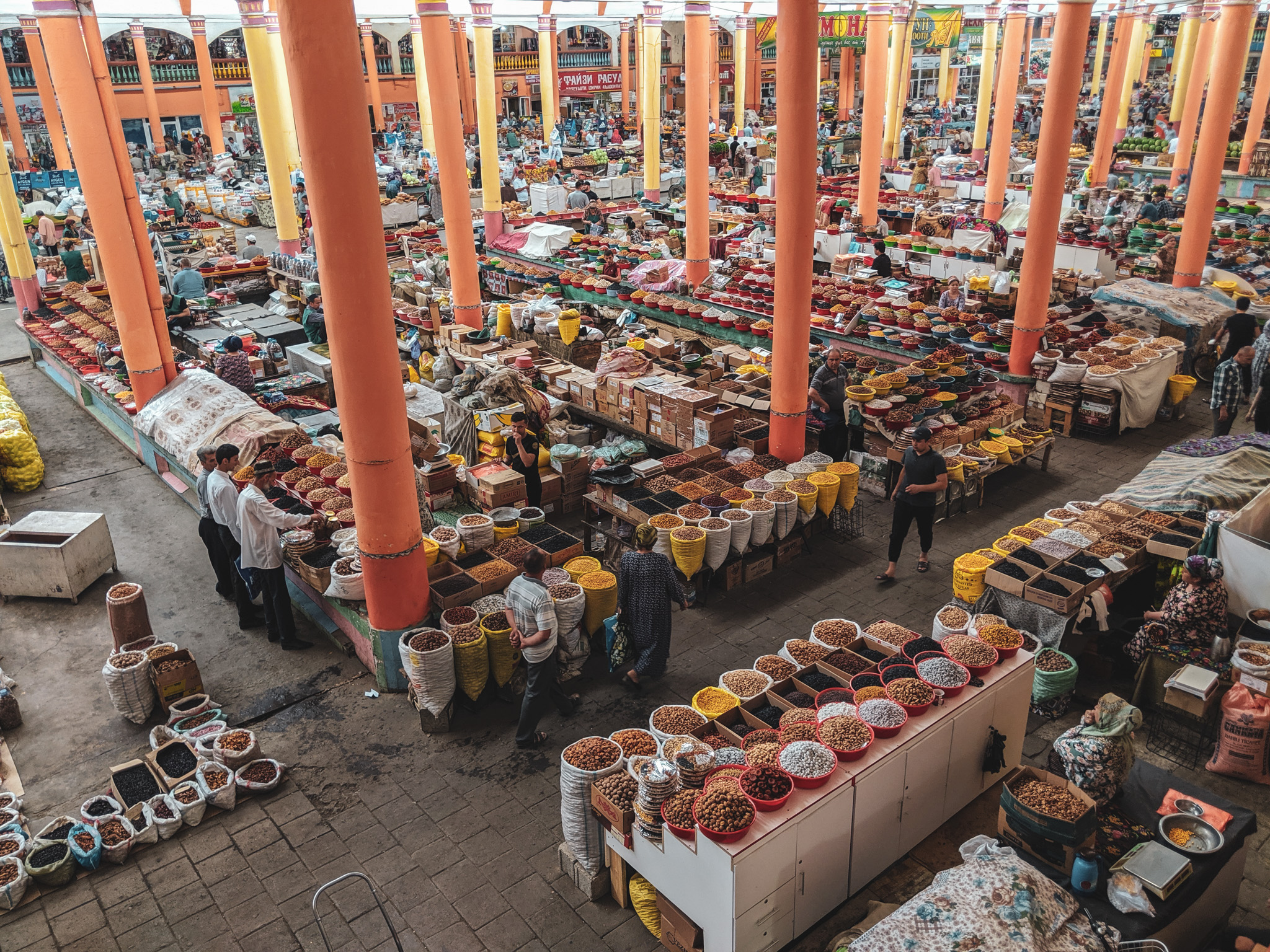
49 – People love if you learn a word or two in their local language: Just learning how to say “thank you” in Kyrgyz ( rahmat ) makes Kyrgyz people super happy. I always try to do this when travelling, and in Central Asia, it’s a really great thing to do.
50 – Plenty of people know English: With tourism increasing along the Silk Road, more and more people are learning some English to work in the tourism industry. At hotels and hostels, you’ll usually be able to find an employee who knows English.
In cities like Bishkek and Almaty, so many young people know English and are eager to practice with foreigners. I’ve had people start friendly conversations with me just because they heard me speaking English.
Don’t stress if you don’t know any Russian or local languages. I always manage to get by with English, Google Translate, and some patience.
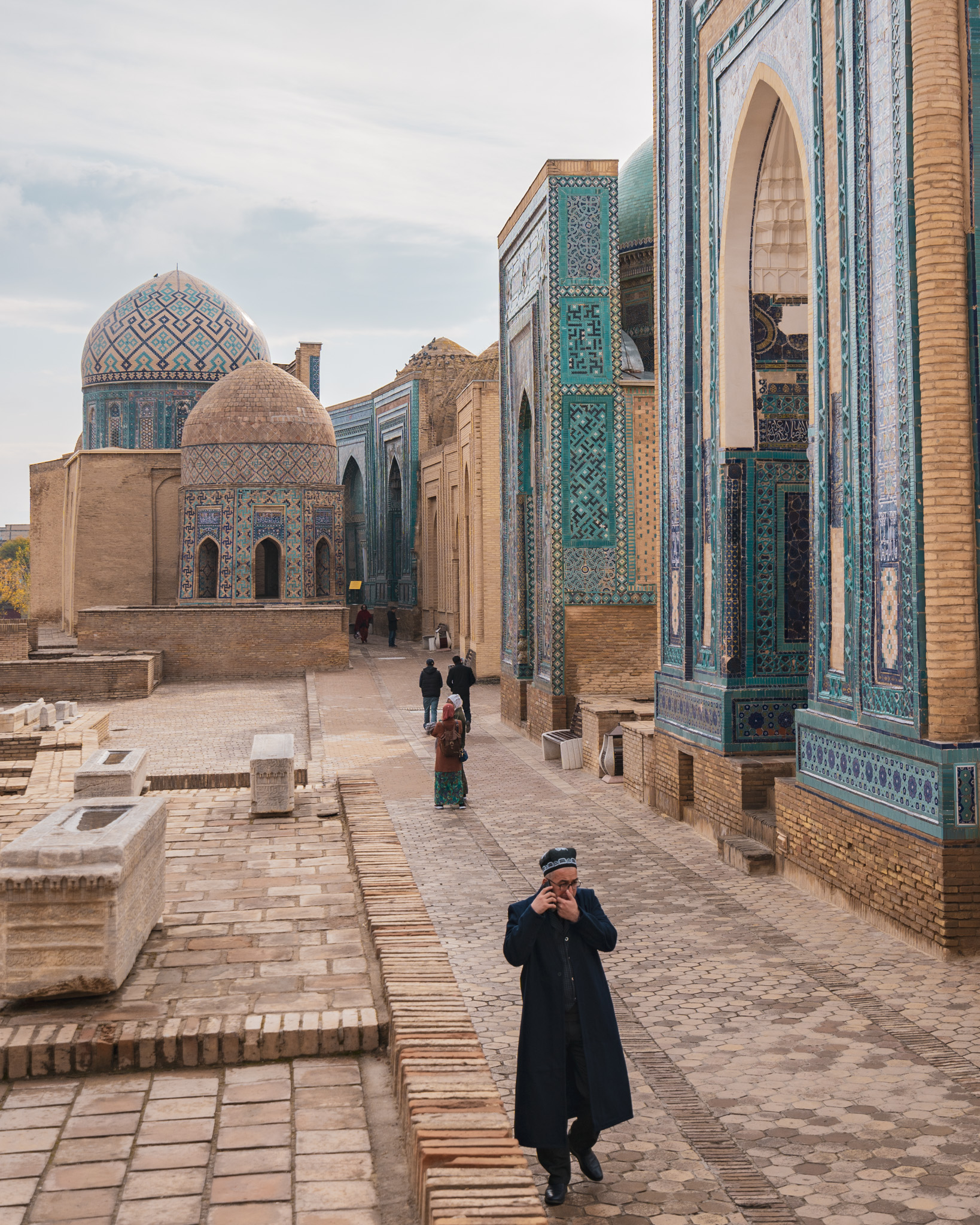
Internet & SIM Cards for the Silk Road
51 – Internet quality varies along the Silk Road: In Kyrgyzstan and Kazakhstan, there is cheap and fast internet almost everywhere. I was able to get 3G signal at Lenin Peak base camp at 3,600 meters in Kyrgyzstan. In Kazakhstan, I paid about $5 for 9GB of data with unlimited social media use (including YouTube and Instagram). In Kyrgyzstan, I paid $4 for 40GB of data.
On the other side of the spectrum are Uzbekistan and Tajikistan. The internet there is somewhat expensive, and coverage is pretty bad outside of the main cities. It’s still worth picking up a local SIM card, but you need to be a bit mindful of your data usage. WiFi is also less common here, although decent hostels will have it.
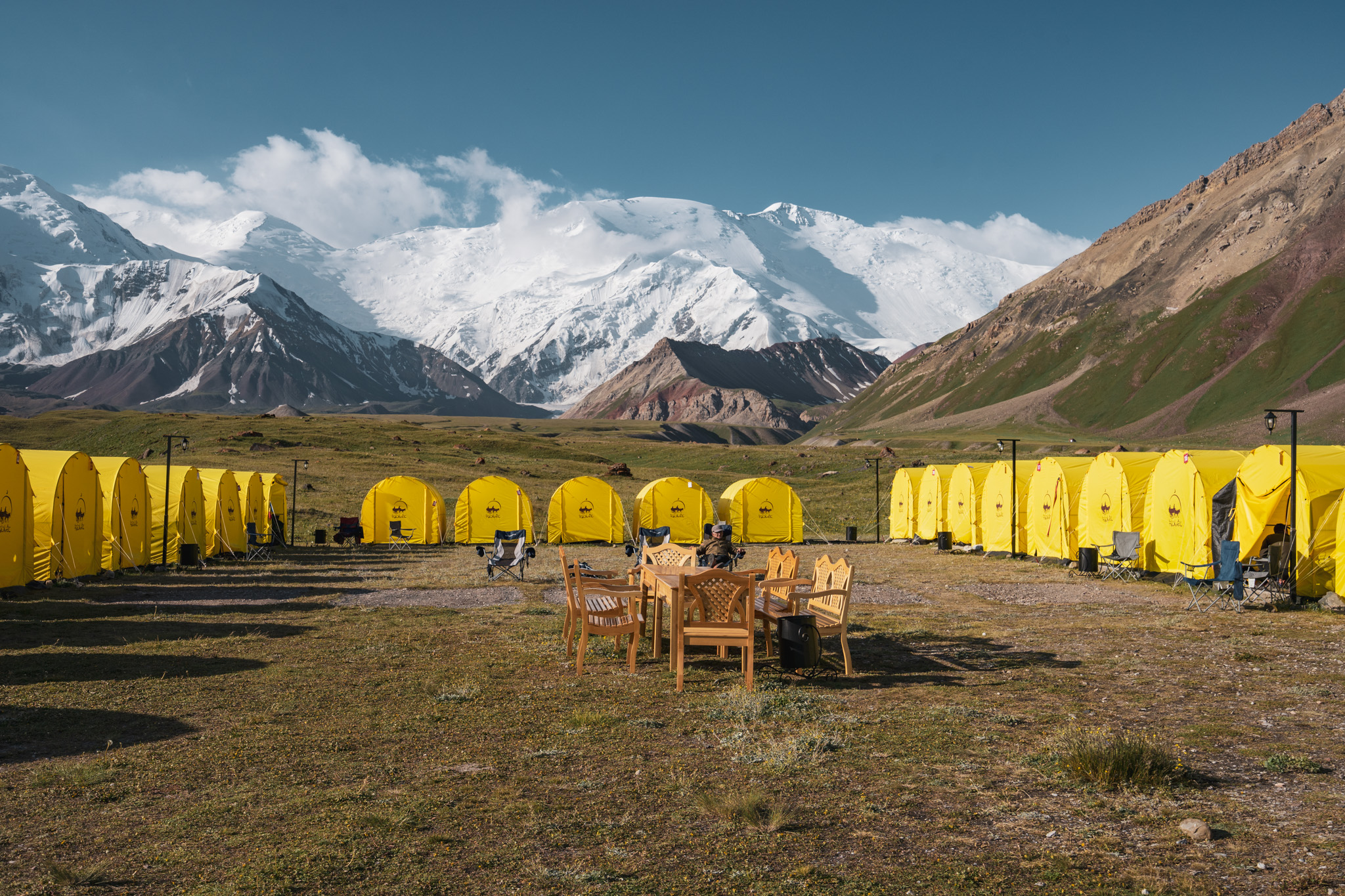
52 – You need to get around China’s Great Firewall: In China, the internet is restricted and most foreign websites are blocked. All Google and Facebook services are inaccessible, as well as sites such as Reddit and Wikipedia.
To access these sites, you need to use a VPN. The best VPN for travelling in China right now is NordVPN .
I’ve used a bunch of different VPNs while travelling and had by far the best experience with NordVPN . They offer a 30-day money-back guarantee, 24/7 customer support, and high-speed servers that are reliable and consistent.

Travelling the Silk Road Wrap-up
I hope this post has helped you learn a bit more about travelling the Silk Road! I love Central Asia so much, and I’m sure you’ll love it too. It’s such an undiscovered and beautiful place to travel around.
If you have any questions, ask in the comments below!
Otherwise, check out some of my other epic guides:
- Guide to travelling in Kyrgyzstan
- Guide to travelling in Mongolia
- Guide to travelling in China
- Guide to travelling in Pakistan
- Guide to travelling in Saudi Arabia
- Guide to Afghanistan’s Wakhan Corridor
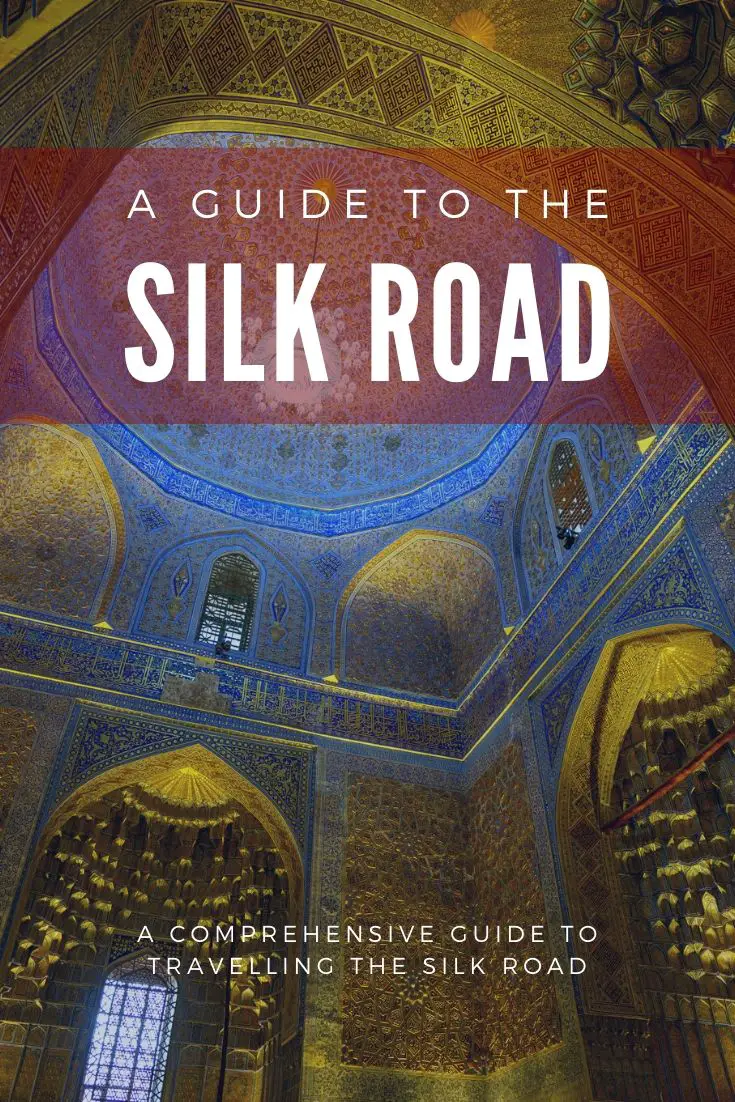
21-year old Canadian dude who loves to visit off-the-beaten-path places, climb tall mountains, and try delicious foods.
Read more about me
Want more like this?
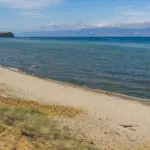
5 thoughts on “ 52 Useful Tips for Travelling the Silk Road (Backpacker’s Guide) ”
Wow looks so beautiful😍, I want to visit Silk road and Pamir Highway. How is temperature in Central Asia (May – Sept). Did you visit with a tour or autostop? I want take a tour because its more cheaper, we’re 4 people. I wanna book tour with Pegas Adventure. Anyone used this tour company?
You’ll love Central Asia 🙂
Temperatures depend on where you are in Central Asia – summertime peaks in July & August, so you should try to be in the mountains during those months where temperatures will be pretty comfortable. In the lowlands of Uzbekistan and Tajikistan, summer temperatures can soar to above 40 degrees.
I don’t know much about tour agencies in Central Asia – If you have four people you could even consider renting a car and driving it on a big loop. Public transport is also very easy to take, but with four people it might end up costing the same just to rent your own car. You can even take it between countries, as long as the rental company allows it.
Let me know if you have any other questions! Hope this helps 🙂
Do you think it would be ok for two women traveling alone, say a mother-duaghter duo?
I’d say so, although some previous travel experience in a less developed country would be good to have.
Locals might be a bit surprised, as this isn’t something they’d typically encounter, although there shouldn’t be any hostility about it.
People in Central Asia are generally friendly and welcoming to foreigners! Feel free to email me if you have more questions.
Thank you for this lovely guide. You’ve done the hard footwork and then share such useful information with us! I hope that you’ll get to travel all the places in the world you desire, and are always at the right place, at the right time. ☀️🌈🌳🌸🌟☃️
Leave a Reply Cancel reply
Your email address will not be published. Required fields are marked *

Travelling Without a Passport

Travelling The Silk Road by Overland: Exploring a History the Length of the World
Exploring a history that spans the length of the world is no mean feat, our Silk Road travel guide will take you on a journey like no other!

The Silk Road is woven into the very fabric of our world. It needs no introduction, but then, it does, if only to let our imaginations run wild with the thought of travelling or driving the Silk Road. From its geographical configuration (at least 4,000 miles, in more than 40 countries) to its role in history, not many routes can claim the glory that belongs to the Silk Road. While its moniker came courtesy of Chinese silk, other goods such as spices and jade were also carried from east to west upon it.

The Silk Road has also had a social and cultural impact on the world. In its heyday, the route formed bonds and links between different ethnicities across its sprawling and complex network. In total there are more than twenty ethnic groups along the Silk Road; many with their own languages, customs, and traditions. Life around the Silk Road remains mostly unknown to us, but the legends, myths, and rituals warrant a closer look.
For explorers and travellers, this route is the embodiment of wanderlust; its very name suggests a voyage like no other, it is a trip through time. Buddhist art, Islamic architecture, lost dynasties, ruins, ancient cities, and dramatic scenery are only the beginning of what there is to discover. How do you explore something that spans most of the world? The answer: overlanding. When you overland, the purpose of your trip is not the destination but the journey, and there is no adventure more suited to this style of travel than that of the Silk Road.
See Also: The Fastest-Growing Destinations for 2019
Silk Road travel guide
The Silk Road is best described as a collection of intricate paths that form a network (so intricate that a travel guide is definitely required reading). Beginning in the former capital of China, Xī’ān, the route crosses mountain-tops and desert plains into Central Asia. The Silk Road played a considerable role in the development of China, Korea, Japan, India, Iran, Afghanistan, Europe, Africa, and Arabia.
The main artery of this track follows the Great Wall, over the Pamir Mountains into Afghanistan, and from there it leads to the Levant. Roads branched off this central route towards towns and cities, river ports, markets, and pilgrimage sites. Many cities located on the system flourished and became wealthy hubs during its trading days. As well as silk, other popular items traded along the route were salt, sugar, porcelain, and spices.

Along with metropolises rich in heritage and culture, the Silk Road is a haven for scenery, given that the route passes through so much wilderness and some of the highest places on earth. Visitors can discover cosmopolitan cities steeped in the past, semi-nomadic farming lifestyles, and explore hidden gems in a diversity of landscapes.
Best time to visit the Silk Road
March, April, and May are the perfect time to visit countries along the Silk Route. The weather will be around 15-20 degrees Celsius, and spring will be blooming. September and October are also another great time to visit; you can feast on juicy grapes and ripe dates. The winter is often too cold, and the summers are busy and hot.
Where to stay
The accommodation options along the Silk Road vary as much as the route itself. From luxurious hotels in urban habitats and guesthouses in towns, to local homestays in rural villages and cozy yurts under the stars, where you stay is really up to you. Not all the destinations will have as many options, particularly if you venture to remote locations that can be found on the route. Travellers who want to take away the hassle of figuring out where to stay should ideally pick a tour that will handle this element for them.
You will need visas for many countries along the Silk Road. This may seem a little daunting at first, but with a bit of research and the right planning, it can be a relatively easy process. Make sure you are up to date on any travel requirements for the countries you are visiting and apply for visas well in advance. Passport holders can also obtain a visa on arrival in certain countries, and tour companies often help with letters required to support your visa application.
What to pack
You can pack for the Silk Road as you would for most trips. A combination of shorts and t-shirts for the warm days, and extra layers for the cooler evenings. It may also make sense to pack a light waterproof jacket, and comfortable walking shoes are a must. It’s also helpful to carry a backpack with essential travel items like a hat, a pair of sunglasses, lip balm, sunblock, snacks, refillable water bottle, and camera.
Being respectful while travelling the Silk Road
When meeting locals along the Silk Road it’s important to be aware of their culture, customs, and traditions. Doing a little research where possible will go a long way, and following in your host or tour guide’s example is the best practice. Likewise, when visiting temples and religious sites, it’s important to remember that these are sacred spaces and places of worship for the locals. Be respectful of dress requirements and visiting restrictions.
Medicines on the Silk Road
Depending on where you go on the Silk Road, you may need certain medications, though it’s best to acquire this information from a doctor or travel clinic. It’s also well worth packing some treatments for colds, upset stomachs, nausea, and fever. It also doesn’t hurt to travel with some bug spray and antiseptic creams, or a mini first aid kit. Also, do not carry any medicine that contains tramadol, codeine, temazepam, morphine, or opiates, as they are illegal in most of Central Asia.
See Also: Are You a Respectful Traveller?
Driving the Silk Road
From the silk traders that led to the naming of the road to the legendary rulers who used it satisfy their own ambitions, the cities along this ancient route have drawn visitors from far and wide. While it’s possible to travel the Silk Road by train (the most popular form of transport), understandably many visitors want to experience it more viscerally on a road trip.
If driving the Silk Road appeals to you, keep in mind that even today, the journey will require a substantial amount of travel days and preparation for you to get the most of out your trip. If you want to discover the route by road, we recommend doing it via overland vehicle. This removes the limitations of public transport, without sacrificing the chance to explore the Silk Road along old tracks that were used by historical figures like Marco Polo and Genghis Khan.
The Silk Road crosses some of the most exciting terrains on the planet; it won’t come as a surprise that it is here that overlanding was born. These days, visitors rarely get the chance to travel the entire route, but Dragoman has plenty of itineraries ranging from nine to 127 days that will let you experience the region thoroughly and authentically.
Silk Road travel itinerary
To follow in the footsteps of the remarkable explorers and traders who crisscrossed the world on this epic route, you’ll need an overland tour that travels through cities and destinations where the legacy of the Silk Road lives on. From bargaining in the market lanes of Tabriz and meandering the backstreets of Bukhara, to falling asleep alongside shepherds in the Pamir Mountains and exploring ancient towns, travelling the Silk Road can bring many dreams to life.

Overlanding is a unique and unrestricted way to visit the Silk Route. Imagine getting off the tarmac and taking the road less travelled? Staying with local families or heading off to remote villages and enriching your life with unchartered experiences? Overlanding captures the true spirit of the Silk Road, allowing travellers to form meaningful connections with the places they visit. Dragoman has been operating overlanding tours since the 1980s, so take advantage of their in-depth knowledge by opting for a carefully curated Silk Road travel itinerary.
- Turkey, Iran and the Silk Route : From the whirling dervish to Persian culture, this route will take you to some of the most beautiful cities. Shiraz, Tehran, and Istanbul may be cosmopolitan, but they sired some of the world’s oldest poets and artists. This route is teeming with breathtaking architecture, sacred sites, desert plains, art, and literature.
- Kyrgyzstan and the Chinese Silk Route: Even today, for travellers, Kyrgyzstan’s pastures and mountaintops are a gateway to Central Asia. For merchants on the Silk Road, this country also played a pivotal role. This is probably why a number of Silk Road sites can be found in the region. This route will also take you to Xī’ān, the starting point of the Silk Road, and another gateway to Kashgar (the epicentre for regional trade in China) and beyond. In Xī’ān, you can take a guided tour of the world-famous Terracotta Warriors, and explore the Great Mosque and Shaanxi Museum.
- Central Silk Route: This route will take you through Khiva, Bukhara, and Samarkand, important trading posts on the Silk Road. Among the minarets, golden domes, and tiled mosaics of these cities, you’ll discover the history and culture left behind in Uzbekistan by traders and merchants that tread upon these roads all those centuries ago.
- Western Silk Route: Start in Istanbul, a city where the spirit of the Silk Road manifests as east and west come together, and end your trip in the opulent marble palaces of Ashgabat in Turkmenistan. You’ll have the opportunity to sail over the Caspian Sea, explore the Black Sea mountain monastery at Sumela, and walk through the ancient valley of Ihlara. The valley was a haven for Byzantine monks who chiselled churches into its cliffs.
- Silk Route and Mountains of Central Asia: On this route, you can follow the famous Pamir Highway over the Kyzyl Art Pass, the frontier between Tajikistan and Kyrgyzstan and one of the highest and most remote border crossings in the world. You’ll trek through the Fann Mountains, a stunning range of jagged peaks 30km east of Penjikent, camp beside Iskanderkul Lake, a glacial waterbody found in Tajikistan’s mountainous region and see the silk-weavers of Fergana Valley. Visitors will also see some cultural hubs that are filled with memories from the golden days of trade, including Samarkand in Uzbekistan, a city potently reminiscent of the Silk Road. The walled old town and grand architecture will quickly work its magic on you.
This story was created in partnership with: Dragoman

Based in Toronto, Sahar is a full-time content editor for Days to Come and part-time travel junkie.
Related Articles
- Destination Guide
- North America
- South America
- Tips & Tricks
Your 4 Must-Visit Inclusive Destinations
Nothing connects people from different parts of the world and disparate...
- Food & Drink
Your Guide to Amsterdam’s Secret Bars and Speakeasies
One of the most popular cities in Europe, Amsterdam has no...
Your Guide to Easter Around the World
Easter is a time to celebrate new beginnings. The symbols and...

Walking South America: The Best Hiking Trails
Get unlimited access to the world's best travel stories. subscribe now., privacy overview.
Wander-Lush
20 Incredible Modern-day Silk Road Cities You Can Visit
Nothing sparks a traveller’s imagination like the fabled Silk Road.
Once a network of trading routes that stretched from the Korean Peninsula all the way to Istanbul, the Silk Road was the original bridge between Asia and Europe, East and West.
Walking in the footsteps of merchants and pilgrims, retracing the route caravans of camels once plied, modern-day travellers will discover that the Silk Road is still a gateway to some of the planet’s most incredible cultural heritage and exquisite landscapes.
A thousand years of Silk Route history lives on in the many and varied outposts and trading hubs that popped up along the route, from Japan to Azerbaijan.
Here are 20 modern-day Silk Road cities that are worth visiting as part of any Silk Route adventure.
Please note: This post contains affiliate links, meaning I may earn a commission if you make a purchase by clicking a link (at no extra cost to you). Learn more.
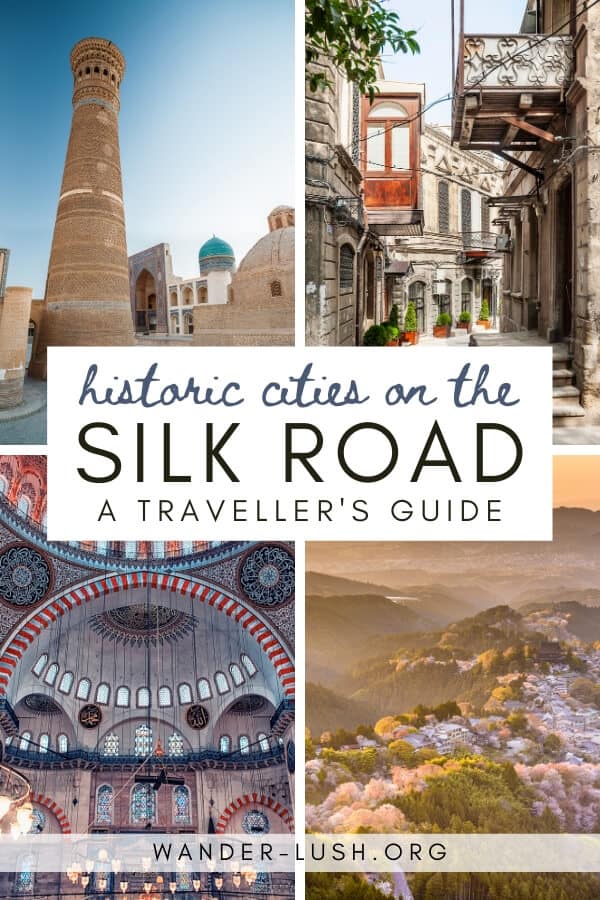
20 incredible modern-day Silk Road cities
Ground zero for the collision of two continents, the Silk Road was the main arterial for ferrying goods between Asia and Europe – including, most famously, silk.
This was the original information highway; a means by which ideas could permeate otherwise impenetrable mountain passes, cross vast deserts and navigate treacherous steppes. Along with earthly goods, knowledge, philosophy and religion also coursed along the Silk Road, harnessed to the backs of merchant camels and tucked away in pilgrims’ rucksacks. No thoroughfare has played a more important role in shaping the world as we know it than the Silk Road.
As traders carved their paths across Central Asia, they set down roots for a string of cities and towns along the way. Endowed with great bazaars, caravanserais and anything else a Silk Road trader could want or need, each of these outposts grew to embody the essence of the trading route.
Today, they carry on that legacy for us modern travellers to enjoy.
1. Istanbul, Turkey
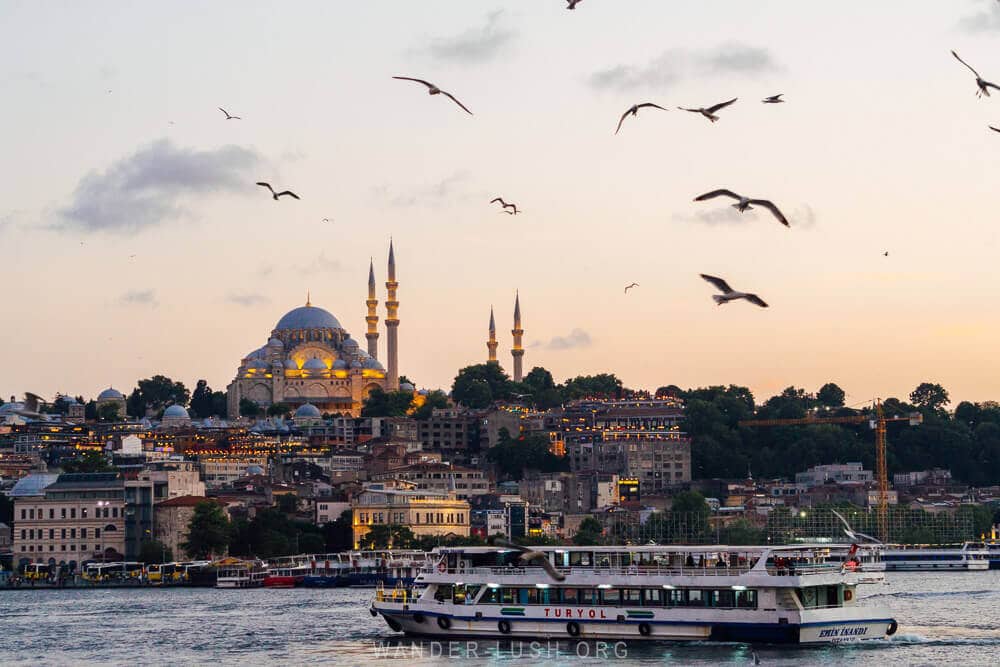
The single most important city on the Silk Road was its final terminus: Istanbul (Constantinople). It was here that traders wound up their westward journey before their goods were spirited deeper into Europe, to the marketplaces of Venice and Rome.
From the 4th century onwards, all ancient roads led to Constantinople. Almost everything you see in Turkey’s biggest city today has some connection to that time of great financial and intellectual prosperity, when the city profited from its prime location on the cusp of two continents. Christianity emanated from the cloisters of the 6th century Hagia Sophia and started its march east with Constantinople as its origin point. The Bosphorus Strait took on its persona as a lively hub for sea trade.
When it fell to the Ottomans in 1453, the city’s name was changed, but its new rulers made sure its reputation as a trading centre was still cultivated. The Grand Bazaar was established to centralise goods and still dominates Istanbul’s centre to this day.
A walk through the alleys of the Spice Bazaar and the halls of the Grand Bazaar is a highlight of any visit to Istanbul. Stop for a Turkish coffee, one of Istanbul’s most beloved traditions , before picking up a few authentic souvenirs .
2. Tbilisi, Georgia
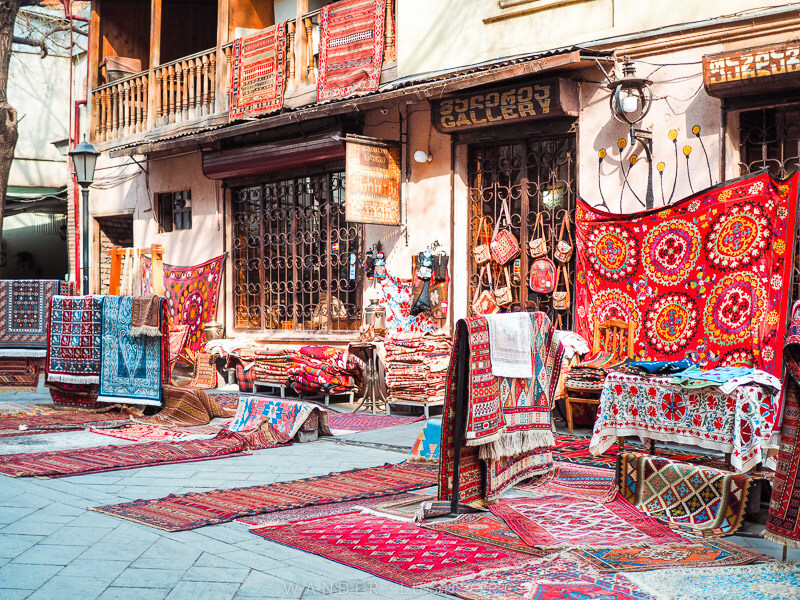
Georgia has always enjoyed a position at the geographic and conceptual crossroads of Europe and Asia, but it wasn’t until relatively late – around the 6th century – that Tbilisi became a fixture on the Silk Road. Around this time, conflict started brewing between Byzantium and Iran, necessitating the development of a new trading route that bypassed the Mediterranean.
The first caravans loaded with Chinese silk passed through Georgia in the 560s, tracking their way from the Caspian coast through the west of the country towards Constantinople. Tbilisi flourished as a trading point.
You can detect hints of Tbilisi’s Silk Road past in the crumbling mansion houses built by merchants who made their riches on successive trade routes and in the carpet shops that overflow with colourful textiles . The Meidan Bazaar, Tbilisi’s undercover marketplace, harks back to this period in time while the Dezerter Bazaar and the Dry Bridge Market – although established much, much later – echo the animated trade atmosphere Tbilisi was known for.
Anyone interested in investigating this epoch should visit the State Silk Museum, a grand (and slightly mothball) institution in Tbilisi’s Tsereteli neighbourhood. It’s wholly dedicated to documenting Georgia’s history of silk cultivation and displays a monumental collection of cocoons and silk-related study materials collected from around the world. Georgia’s climate, perfect for cultivating mulberry trees, made it the epicentre of sericulture under the Soviet Union .
3. Sheki, Azerbaijan
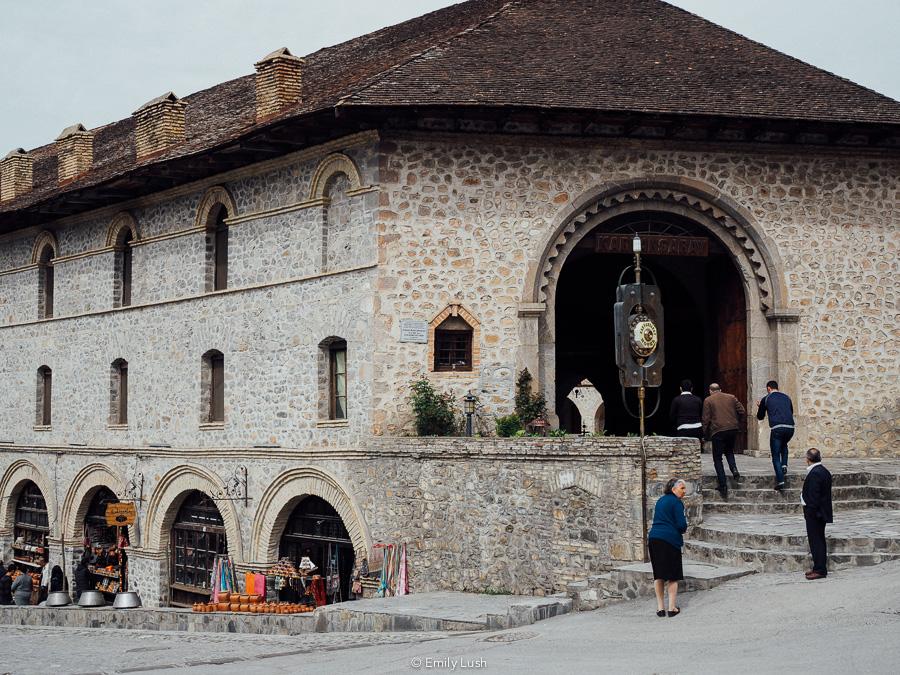
Sheki is Azerbaijan’s most charming and atmospheric city, thanks in no small part to its connection with the region’s Silk Route heritage.
Sheki is best-known for its twin Khan’s Palaces, summer and winter residences built for the region’s ruling family in the 18th century. These, along with Sheki’s citadel, were recently recognised by UNESCO for their value to cultural heritage.
Around the same time as Sheki’s skilled craftspeople were working on the palaces, fashioning shebeki window panes using coloured glass from Burano, carving ornate window frames and painting the interiors with detailed miniatures, the city started hosting traders from far-flung places.
A new tributary of the Silk Road that passed directly through Sheki made the city an important rest stop, transforming Sheki’s urban landscape in the process.
A huge caravanserai was constructed to accommodate overnight guests and their livestock. It’s still operational today, serving as a basic hotel with a beautiful green courtyard at its centre, and shops and restaurants on its lower levels. Craft workshops and a Soviet-era silk factory also speak to Sheki’s past.
The religious philosophies that moved along the Silk Road had a huge impact on Sheki. Albanian churches, some of the first in the region, popped up here as Christianity started to spread east. Visitors can see one such church in the village of Kis just outside Sheki.
4. Samarkand, Uzbekistan

Samarkand is the most popular destination in Uzbekistan and one of the most iconic stops on the Silk Route. It’s also one of the oldest continuously inhabited cities in the world, dating back to the 6th century BC. The real development of the city happened during the Silk Road time, when Samarkand was the largest city in Central Asia.
Today you can admire numerous monuments from that period. The most important is, of course, Registan, a complex of three madrases – the oldest one completed in 1420. The architecture and decorations are stunning and will surely take your breath away. Be sure to visit early in the morning to avoid the crowds. While you’re there, don’t skip Gur-e-Amir, the mausoleum dedicated to the conqueror of Central Asia, Amir Timur (known also as Tamerlane).
Another beautiful place you should see in Samarkand is Bibi-Khanym Mosque. Built in the 15th century as a gift from Amir Timur to his wife, it was counted among the most impressive mosques in the world. The last important place in Samarkand is Shah-i-Zinda, a cemetery with beautiful mausoleums, some of them from as far back as the 9th century.
There are plenty of accommodation options in Samarkand, but you should choose a place close to all the attractions. Visit local restaurants to try delicious Uzbek food, itself reason enough to visit Uzbekistan .
By Kami from Kami & the Rest of the World
5. Shiraz, Iran

Shiraz was once the capital of Persia and as one of the biggest cities south of the Zagros mountains, an important place on the ancient Silk Road. Trade caravans passed through Shiraz on their way to and from the Persian Gulf.
Known as the city of flowers, Shiraz has always been a beauty , but had its share of misfortunes as well. In its long history, it was damaged by earthquakes and Mongol invasions. Most of what we see today comes from the 18th century Zand dynasty, when Shiraz developed into a true multicultural city with markets, gardens, palaces, wealthy merchant houses, mosques and madrassas.
Walking through the ancient Vakil Bazaar still gives you that ‘Silk Road feeling’. The city is full of beautiful Islamic architecture – from the lush and symmetrical Eram gardens to the colourful pink mosque, and the visually appealing Vakil hammam.
Another Silk Road experience is dining at the Saray-e-mer tea house in the heart of the Vakil Bazaar. This restaurant not only serves tea, but also traditional Persian dishes such as eggplant stew and chicken in walnut and pomegranate sauce. The interior is like a journey back in time, when places like this catered to hundreds of merchants from all over the world every day.
By Ellis from Backpack Adventures
6. Dunhuang, China

Dunhuang, a city in Gansu province of northwestern China, was one of the most important stops on the Silk Road. It was a major trade centre and military outpost during the Sui and Tang dynasties (581-907).
When Buddhism reached China via the Silk Road, Dunhuang was the first stop for monks arriving from the west. They built the Mogao Caves (also known as the ‘Caves of a Thousand Buddhas’) for meditations, pilgrimage and worship. Today, Mogao Caves famously holds the world’s largest collection of Buddhist art, including murals, sculptures, artefacts, printed images, textiles, and cave art.
Another notable sight is Yumen Pass (also known as Jade Gate). Located at the west of Dunhuang, Yumen Pass was an important gateway for the ancient Silk Road. Nature lovers should not miss Yadan National Geological Park, a collection of rock formations in the Yadan desert that’s said to be over 700,000 years old.
For an unforgettable gastronomic experience in Dunhuang, visit Shazhou Night Market on Yangguan Road. It’s the perfect place for tourists to sample local delicacies and fruit. The top must-try foods are donkey meat with yellow noodles, apricot peel water, lamb noodle soup, and dried fruits (raisins, dried Goji, and dried apricot).
Finally, Dunhuang is very popular among domestic travellers. It’s advisable to avoid visiting Dunhuang (or China in general) during Golden Week and the summer holiday. Instead, the best time to visit Dunhuang is May through June, and September through October, when the weather is agreeable and there are no annoying crowds.
By Ming from Flyerism
7. Karimabad, Pakistan

Sheltered by a barrage of high mountains that encapsulate it like a rare diamond, Karimabad, the main settlement in the Hunza Valley of Pakistan, probably still looks much as it did when it was an important stop along the Southern Silk Road between China and the Indian Subcontinent.
Set along the stunning Karakoram Highway that connects Islamabad to Kashgar in China’s Xinjiang province, Karimabad has developed into a tourist hotspot.
It couldn’t not have – Karimabad is nearby Ultar Peak (7388m) and its glacier, and set above the ancient village of Ganesh, with its ancient wooden mosque and traditional homes. Watched over by mount Rakaposhi (7788m) and Diran (7270m), Karimabad is as beautiful as it is peaceful. There’s no better way to soak up the scenery than by driving up to the Eagle’s Nest viewpoint at sunset.
The Altit and Baltit forts, two of Pakistan’s UNESCO World Heritage Sites , have protected the two opposite sides of Karimabad for 800 years, and are the perfect places to start discovering the town’s Silk Road heritage. Start by exploring the small passageways within the forts that lead up to open roofs and turrets perched above deep gorges and ravines.
Then it’s time to experience the modern face of Karimabad. Cafe de Hunza is an unmissable bakery where you must try the valley’s famous walnut cakes and apricot jams. All this while you sip on real espresso and surf the web on Hunza’s fastest WIFI!
Karimabad’s central strip is lined with all the small cafes, restaurants, pizzerias and guesthouses you can expect from a tourist town – remember that you won’t get the same level of facilities anywhere else on Pakistan’s Karakoram Highway, so enjoy all of it while it lasts.
Serena Inn Hunza, one of Pakistan’s best boutique hotels, is the most expensive and atmospheric choice in town, and it will throw you back to a caravanserai atmosphere. Highly recommended for a stylish stay.
By Marco from Monkey Rock World
8. Baku, Azerbaijan
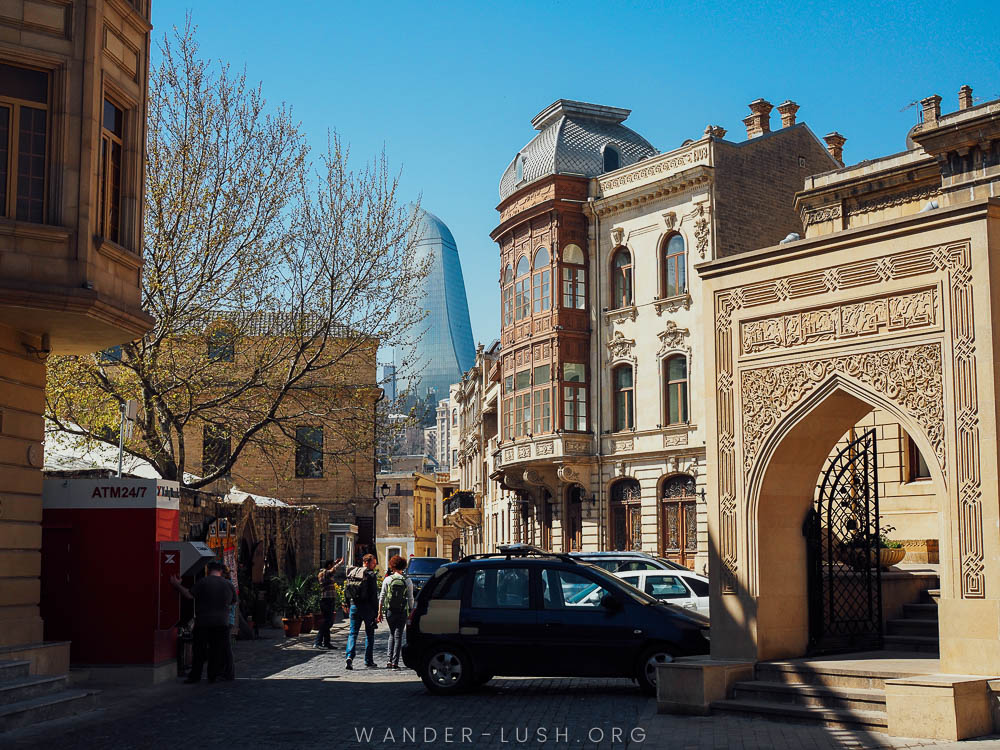
Much of modern-day Baku ‘s skyline has been shaped by the country’s oil wealth. As black gold started flowing in the Land of Fire, silk and other goods that flooded in via the Silk Road added to the city’s prosperity.
Baku sits on the Caspian Sea and was the main port that received goods from Central Asia, a maritime iteration of the Silk Road. The city still revolves around the seafront, with the massive Bulvar boulevard wrapped around its coast.
The Icherisheher (‘Inner City’) is home to many of Baku’s must-see monuments, including the Maiden Tower. This edifice has a connection to Zoroastrianism, a transformative religious force that wielded great influence along the Silk Road and had strong roots in Baku.
A number of Silk Road-era relics can also be found inside the Old City: caravanserais, hammams, madrassas, tea shops , and more.
9. Almaty, Kazakhstan

Almaty is another of the historic epicentres of the Silk Road. The country of Kazakhstan is heavily investing in reviving places related to this chapter of history. Their goal is to increase Silk Road tourism and make the road more accessible to visitors.
One complication that the country is facing is that the nature of the Silk Road, which served as a connector between different cities, means that there aren’t many physical sites left from the period.
One place you can visit as a day trip from Almaty is Tamgaly Tas, a Buddhist Rock Art Sanctuary. The petroglyphs here were created by Buddhist monks and are a great reminder of Almaty’s role on the East-West corridor. You can also see yurts here and you can visit Nomad’s Land, a former movie set turned tourist site.
While in Almaty, make sure to see Big Almaty Lake outside of the city, as well as other Almaty highlights like Zenkov’s Cathedral. This is also a great place for Red Tourism . Make sure to visit the memorial to the victims of the Kazakh Famine, which was as devastating to Kazakhstan as the famine in Ukraine was. You can also stay in a former Soviet Hotel, the Kazakhstan Hotel.
By Stephanie from History Fangirl
10. Bishkek, Kyrgyzstan

Bishkek is an eclectic mix of its Silk Road past, nomadic Kyrgyz influence, and Soviet-era relics. The city doesn’t ooze charm in the way many tourist destinations do – but if you look a little deeper, there are plenty of quirky and interesting things to see and do around the city.
There are the main attractions such as Ala-Too Square, which boasts large concrete buildings and the token Lenin statue of most post-Soviet cities. One of the buildings houses the State History Museum which illustrates all eras of Kyrgyzstan’s past.
For those wanting a throwback to the Silk Road times, head to the Osh bazaar where you’ll find everything from souvenir stands to food, traditional dress to instruments, and everything in between. The low numbers of foreign tourists in Kyrgyzstan mean that visiting the market is still an authentic experience. You’ll have to dodge your way through crowds of men in kalpaks (traditional hats) and people spruiking their wares.
With such a rich history, Bishkek has done well to keep up with the times and also offers visitors a great cafe, restaurant and craft beer scene. Tucked in corners around the city you can find delicious traditional cuisine (try Navat) as well as popular Western options.
For great craft beer and food from the restaurant next door, head to Save the Ales, a female-run brewery which employs lesbian women who struggle to find work elsewhere due to Kyrgyzstan’s conservative attitude towards the LGBT community.
By Rohan from Travels of a Bookpacker
11. Bhaktapur, Nepal

Bhaktapur is known as Nepal’s cultural capital. If you’re a keen cultural observer, you must stay here for at least a couple of nights in order to trace back all the invisible links to the ancient Silk Route that connected a vast part of Asia.
Bhaktapur rose from the rubble of the 2015 Gorkha earthquake, but unfortunately the natural disaster claimed most of the remnants of her glorious past. Back then, tradesmen trod all the way from the coast of the Andaman sea, braved the Himalayas, and walked still further. Bhaktapur was one of their pit stops, and the town benefited substantially as a strategically important link on the Silk Road.
Every stone of Bhaktapur bears some kind of religious semblance. The city’s intricately carved windows and art testify to Bhaktapur’s rich heritage. Each of its temple is rich with Newari architecture and styled with a pagoda as its top, various pillars and staircases. The most famous temples of Bhaktapur are Dattatryara, Nyataponla (the contemporary of the Taj Mahal), Pashupatinath, and the most important of all, Taleju Bhabani. Only Hindus are allowed inside the latter temple complex, however anyone can see the stunning golden gates.
Apart from traditional Newari cuisine, must-eats in Bhaktapur include Juju Dhau, curd with a crunchy layer on top. Black clay pottery is a famous handicraft from Bhaktapur and you must visit the local village where this art is practiced.
Dress modestly, and be aware that Hindu religious involving animal sacrifice are common practice (during a half day tour of Bhaktapur, I came across at least two sites where an animal was sacrificed).
By Madhurima from Orange Wayfarer
12. Ulaanbaatar, Mongolia

Ulaanbaatar is one of those cities where what you see isn’t exactly what you get.
Everyone knows (or thinks they know) the stories and legends surrounding the country’s most regaled ruler/warrior (you know the one), but it isn’t until you see the 40-metre tall Chinggis Khaan Equestrian Statue, or visit the city’s National History Museum, or hear locals speak about the Great Khaan and everything he once accomplished and how he shaped the modern world today, that you start to understand who the man behind the legend actually was, for better or worse.
(You also won’t be able to escape his image in the city – from being the face on local currency, to adorning vodka bottles, and sitting guard in front of the capital’s parliament building – he still watches over Mongolia and it’s people with a watchful eye, more than 800 years later.)
Once ruler of half the world, and an important overseer of the development of the Silk Road route, Ulaanbaatar and the ancient capital city of Kharkhorin, and the surrounding countryside, are still home to nomads and thousands of years of traditions.
Mongolia is sometimes reminiscent of a land that time forgot. It’s a truly surreal experience to live like this – drinking airag , herding horses, living life in a ger – even just for a few days, putting into perspective what life in the 13th century must have been like.
By Breanna from Meanwhile… in Mongolia
13. Xi’an, China

No list of Silk Road cities is complete without the Eastern departure point, often dubbed the ‘start’ of the Silk Road: Xi’an. This Chinese city has a rich history stretching back to the Zhou dynasty in the 11th century BC; but it’s the confluence of cultures about 1,000 years ago during the Western Han dynasty that truly put Xi’an on the map.
A noted trading post and hub for merchants in China, Xi’An saw silk, ceramics and spice traders from Arabia and Persia flock to the city, most of them settling in what is now known as the ‘Muslim Quarter’. The Quarter is a must-see for anyone visiting this captivating city, not just to explore the ancient attractions of the Hanguang Gate, the City God Temple and the Grand Mosque, but also to tuck into the unique dishes, where meat-lovers will delight in beefy steamed sandwiches and local delicacies like pao mo , a bread and mutton soup.
Silk Road adventure seekers should also spend a few hours walking the old city walls – claimed to be the largest in the world. The 14km loop was constructed to protect the city from invaders and is the oldest military defensive system on the planet, now best enjoyed on a very long walk or by meandering along on one of the bicycles available for rent.
You can’t go to Xi’an without visiting the legendary Terracotta Warriors, of course, as well as climbing the beautiful Bell and Drum Towers, soaring structures built to signal the start and end of the working day.
By Lee from The Travel Scribes
14. Bukhara, Uzbekistan

Bukhara is another of the most popular tourist destinations in Uzbekistan. In medieval times, the city was one of the main stops on the Silk Road and specialised in the trading of carpets. It was also a cultural and religious centre.
Bukhara has around 140 monuments, so visitors are spoiled for choice. The best thing to do in Bukhara is wander around the historical centre with no particular destination in mind. This place still witnesses trading and is home to many remnants of the country’s glorious past, boasting magnificent mosques, madrassas, and other monuments.
People interested in the Silk Route shouldn’t miss the three main bazaars, where people buy and sell just as they did in Silk Road times. A visit to a rug shop is an interesting experience. A stop at the UNESCO Carpet Weaving Shop is highly recommended.
Make time to visit at least one religious complex to admire the monumental architecture decorated with blue tiles so typical of Central Asia. The Mosque Kalon or Friday Mosque is a good example of this kind of design. It’s one of the oldest mosques in the city (8th century) and also the biggest, with a capacity of more than 10,000 worshippers.
During the hottest hours of the day, look for a shady cafe to sip a mint tea. This drink is very typical of Bukhara – and Uzbekistan in general – plus it’s a good opportunity to meet the locals.
By Elisa from World in Paris
15. Nara, Japan

Nara was the eastern end of the Silk Road and was also the capital of Japan from 710 AD to 794 AD. It was not just silk but also religion that spread along the Silk Route, and Nara became an important religious centre for followers of Shintoism as well as Buddhism.
The city’s most impressive man-made site is the Great Buddha statue ( Daibutsu in Japanese). This gigantic bronze edifice sits inside the Todai-ji Temple, which still today is the largest wooden building in the world.
This temple, along with an important Shinto shrine and several other historical and religious monuments, are all contained within the very green Nara Park. In addition to its monuments, the park is most famous for the semi-tame deer who live there.
Most people visit Nara as a day trip from Kyoto or Osaka, but it’s definitely worth spending at least one night. That way, you can enjoy the peace and quiet of the park before the hordes of tourists arrive, and you can see the spectacular sunset from Nigatsu-do, a sub-temple of Todai-ji.
Ramuna Cafe makes a convenient lunch stop as it’s near all the main sights. It’s one of several restaurants that offer delicious vegan food in Nara . Hiloki Hostel is a solid budget accommodation option, offering dorms as well as private rooms.
By Wendy from The Nomadic Vegan
16. Gyeongju, South Korea

Located on the south-east coast of South Korea, Gyeongju is a must for your Korea bucket list . This city is known for its fascinating history, acting as the capital of the Silla dynasty for almost a millennium, which flourished from BC 57 to AD 935 under the rule of 56 different kings.
In the 7th century, Gyeongju became the main trading port on the Korean Peninsula, greeting merchants who came by both land and sea from China, Japan and the Arabian Peninsula via the Silk Road. Over time, the different influences and ideas they brought with them permeated local culture, turning Gyeongju into a dynamic cultural hub.
For history lovers, there are few better stops in Korea than Gyeongju, which is often called the ‘museum without walls’. Morbid as it may sound, one of the best things to do is wander Tumuli Park where a collection of man-made pyramids house the remains of the kings, many found buried with decadent gold, jewels, and the bones of their servants who would have been buried alive with them, apparently the ultimate honour!
Other things to do in Gyeongju include visiting Bulguksa Temple, which dates back to 528, and hiking up to Seokguram Grotto just above it, home to a 1,000-year-old Buddha statue. You’ll need to catch a bus to these two attractions; on the way back, stop off at Gyeongju National Museum to learn about the Silla Dynasty.
You shouldn’t miss the oldest astronomical observatory in East Asia, Cheomseongdae Observatory Tower, located close to Donggung Palace and Wolji Pond, a colourful palace complex that’s also worth exploring.
By Rose from Where Goes Rose
17. Jaisalmer, India

Jaisalmer rises straight up out of the flat sands of the Rajasthani desert like a fantasy from the Arabian nights. A sandstone fortress that sits atop a rocky outcrop in the middle of the desert, this is India’s famed Golden City. Seeing Jaisalmer from afar at twilight, when it glows in the light of late afternoon, is a breathtaking experience that you will never forget.
Built in the 12th century, Jaisalmer was a major stopover on the southern tributary of the Silk Route. It’s possible to recreate the old Silk Road experience today in several ways. Modern-day travellers can imagine what it was like to be a merchant by taking an overnight or multi-day camel safari into the nearby That Desert , visiting tiny tribal villages and sleeping on sand dunes under the stars. There are many travel agencies in town that can arrange these trips.
Or step back in time exploring Jaisalmer Fort. The fort, which dominates the town, is a living city, and gives travellers a real sense of what life was like back in the old Silk Road days. There are several hotels inside the fort itself, as well as many nearby hotels with views of the fort.
Jaisalmer is home to many ornate Jain temples that date from between the 12th and 16th centuries, as well as many incredible havelis (merchant houses). The best havelis ones are covered in incredibly elaborate carvings. Many of the smaller houses have been converted into comfortable guesthouses that are full of character and mystical charm.
Jaisalmer is an absolute must-stop on every Silk Road trip (and every journey to India!)
By James Ian from Travel Collecting

18. Leh, India

Leh is a beautiful Indian town situated in Ladakh in the heart of the Himalayas. During Silk Road times, it was an outpost on the mountain pass that connected India with Tibet to the east and Kashmir and the Karakoram mountains to the north and west – a vital route for trading much-sought-after pashmina wool.
Salt, cotton, silk and spices flowed along this route until as recently as the 1940s, with Leh serving as the Western Himalayas’ main marketplace for the exchange of goods between India and Tibet.
The landscape around Leh is diverse and there are many stunning places for nature lovers to explore. Nubra Valley, Pangong Lake and Khardung La Pass are unmissable. While in Leh city, be sure to visit the famous Shanti Stupa and the Leh Palace. The bustling Leh Main Bazaar is a hive of activity and another must-see for anyone interested in Silk Route heritage.
Be sure to try the local food as well. Thukpa is an exceptionally tasty noodle soup that is typical to the town. Tibetan-style dumplings are a must-try. Kashmiri cuisine, including yakhni (mutton with yogurt and saffron), is a testament to the exchange of recipes and spices along the Silk Road.
The helpful and kind people of Leh make visiting this town even more special.
By Merryl from Merryl’s Travel and Tricks
19. Yazd, Iran

Yazd, a charming city in the south of Iran, is one of the most interesting places to visit in the country. Together with the smaller cities of Kashan, Nain and Kerman, the Silk Road crossed Yazd on its way through southern Iran.
Yazd was famous for its silk and carpet production, and the centre of the town during its Silk Road heyday was the bazaar, which remains a hub to this day. Caravanserais, mosques, bathhouses, schools and other infrastructure were built in the vicinity.
The old part of Yazd is a labyrinth of mud houses with typical wind chimneys called badgir . A unique water pipe system called qanat provided much-needed water from the mountains and contributed to the prosperity of Yazd and its textile production.
A large caravanserai can be visited on the outskirts of a village called Kharanaq, about an hourlong drive from Yazd. Visitors can also admire Yazd’s Zoroastrian sights, since the town has always been home to a large Zoroastrian community, the dominant religion before Persia’s turn to Islam.
Yazd shouldn’t be missed – it’s recommended to visit as part of a two week Iran itinerary .
By Veronika from Travel Geekery
20. Yerevan, Armenia
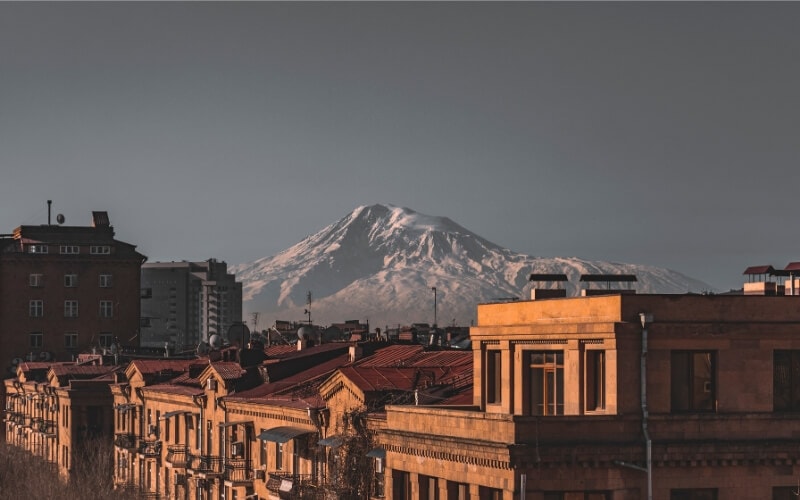
Armenia isn’t always associated with the Silk Road, but because of its location, caravans couldn’t help but pass through the Caucasus nation as they crisscrossed from east to west via the Ararat valley. Yerevan and other Armenian cities benefited from the exchange of goods and ideas just as much as more established outposts in Central Asia did.
More than being conveniently positioned, Armenia was always looked on as a land of infinite cultural and artistic riches. Armenian wine, dyes, carpets – and even horses – were exported to Babylon and Persia from as early as the 5th century BC. Merchants naturally gravitated towards Armenia’s craft workshops and marketplaces when looking for new objects to buy and sell.
Yerevan’s history reaches far further back than its Silk Road days, yet reminders of this time can be felt everywhere, from the sprawling Vernissage Market where modern-day artisans ply their trades, crafting beautiful woodwork, textiles and souvenirs , to the Tufenkian Historic Hotel where fine Armenian carpets are displayed.
It’s also interesting to note the ways Armenia resisted the influence of the Silk Route – the globalisation force of its time. The first state to adopt Christianity as its religion, its many churches, including the oldest in Yerevan, Katoghike Church, are a testament to how this country held onto its religious and cultural convictions in the face of great change.
Silk Road Cities: Share it on Pinterest
One comment.
Very nice! I was in Thailand and Indonesia just before the pandemic started. I didn’t make it to Australia. Perhaps next time.
Leave a Reply Cancel reply
Your email address will not be published. Required fields are marked *
- Subscribe to future posts
UN Tourism | Bringing the world closer
Share this content.
- Share this article on facebook
- Share this article on twitter
- Share this article on linkedin
Encouraged by renewed interest in the Silk Road - for cultural exchange, trade and tourism - UN Tourism decided to revive the ancient routes as a tourism concept, uniting three continents once more in a project encompassing over 12.000 km
The Silk Road, commonly known as the first global trade route in history, had a scope and importance far greater than the simple exchange of goods. Indeed, the myriad of interconnected routes served as a vehicle for the fruitful exchange of arts, religion, cultures, ideas and technology. Many important developments, in fields ranging from mathematics and philosophy to architecture and gastronomy, were only made possible thanks to the intrepidness of pioneers eager to explore and overcome man-made boundaries and natural determinants.In present time, and building upon a natural and cultural wealth spanning thousands of years, the World Tourism Organization (UN Tourism) is in a position to revive and give a new significance to a route capable of transforming the way we think about and relate to travel. By collaborating in areas of mutual interest, Silk Road Member States and private sector tourism stakeholders are in a unique position to create new opportunities and tourism initiatives capable of favouring sustained and healthy growth.
The concept of a Silk Road tourism project was first raised at UN Tourism's General Assembly in Indonesia in 1993
With initiatives dating back to 1994 , UN Tourism was an early advocate of the tourism potential of the Silk Road. Today, 33 Silk Road Member States ( Albania, Armenia, Azerbaijan, Bangladesh, Bulgaria, China, Croatia, DPR Korea, Rep. Korea, Egypt, Georgia, Greece, Indonesia, Iran, Iraq, Israel, Italy, Japan, Kazakhstan, Kyrgyzstan, Malaysia, Mongolia, Montenegro, Pakistan, Romania, San Marino, Saudi Arabia, Spain, Syria, Tajikistan, Turkey, Turkmenistan, Ukraine and Uzbekistan (as of February 2018)) from Europe, Africa, Central Asia and Asia & the Pacific, in addition to UN Tourism Affiliate Members from around the globe, work together to promote the Silk Road routes as a transnational tourism adventure.
Together we aim to maximize the benefits of tourism development for local communities, stimulate investment and promote the conservation of the route's natural and cultural heritage by focusing on following areas of work:
Marketing and Promotion
To raise the profile of the Silk Road on the international stage, UN Tourism has been collaborating with a wide range of partners, both from the public and private tourism sector.
In recent years, different types of events have been organized – from high-level ministerial meetings such as the 8th UN Tourism International Meeting on Silk Road Tourism in Thessaloniki and our annual Silk Road events at ITB Berlin to capacity building workshops and Task Force Meetings .
Additionally, UN Tourism has worked with important partners such as Pilot Productions, BBC 4 and Discovery Channel UK.
Capacity Building and Destination Management
The transition towards a service based economy poses both challenges and opportunities. A signal of economic maturity, it also implies the need to constantly innovate and excel in the deliverance of services, a feat that can only be accomplished by a highly qualified workforce.
Applied to the tourism industry, service excellence implies personal skills, customer service training, knowledge of the tourism product, and know-how in the field of tourism management – all areas in which we can support our Member States.
With experience in developing trainings in many Silk Road countries together with a strong group of UNWTO Affiliate Members and sister organizations such as UNESCO, the scope of activities developed can range from training of tour operators; skills training for heritage guides; the development of international marketing strategies, and marketing workshops.
Tourism Route Development
In terms of route development activities, two main ideas guide our work:
First of all, globalization, urbanization, the rise of new industries, and the spread of English as a global lingua franca have influenced every sphere of life, including tourism. Indeed, the signal effect of these changes is the ever-increasing salience of aspiration as a motivator of our actions and behaviour. As representatives of the tourism sector sufficiently know, “experiential travel”, the search for new experiences and destinations, is a global phenomenon on the rise, from which especially Silk Road destinations, who offer unique and untapped travel opportunities, can benefit from in the years to come.
Secondly, with rich and authentic experiences already in place, we see UNWTO’s role not so much in reinventing available routes from anew, but in boosting best-practice examples already taking place across the Silk Road.
Recently, our route development activities have been focused on developing the Western Silk Road and the Maritime Silk Road.
Silk Road Tourism Research
Primary Silk Road tourism data is scarce or even non-existent, and by collecting information on the interests, needs, expectations, expenditure patterns and satisfaction levels of the international traveller, we aim to gain valuable source information on how to strengthen the Silk Road attributes of participating destinations.
Based on trainings and Visitor Surveys conducted in Uzbekistan and Kazakhstan in 2018, Member States gain important know-how on how to attract and improve services aimed at the international traveller, and how to plan associated tourism infrastructure and facilities, an area ranging from the hospitality industry to tourism products and available tours, in a targeted and cost-effective way.
The Silk Road Task Force ensures that all Member States are duly represented and have the opportunity to provide input into the Programme.
The Task Force group is also responsible for:
- Providing timely feedback on UN Tourism Silk Road programme strategies and action plans
- Discuss and endorse the Silk Road Action Plan
- Ensure the coordinated implementation of the Action Plan, including strategies for immediate and longer-term action
- Promote coherent and coordinated messaging and information sharing
- Share and exchange know-how and best practices
Following Member States have nominated a Silk Road Task Force Representative (as of February 2017, enlisted Member States are grouped according to UN Tourism's organizational structure):
Europe : Armenia, Albania, Azerbaijan, Bulgaria, Croatia, Georgia, Greece, Israel, Italy, Kazakhstan, Kyrgyzystan, Montenegro, Romania, San Marino, Spain, Tajikistan, Turkey, Turkmenistan, Ukraine and Uzbekistan.
Asia & The Pacific : Bangladesh, China, Democratic People's Republic of Korea, Indonesia, Japan, Republic of Korea, Malaysia, Mongolia and Pakistan
Middle East : Egypt, Iran, Iraq, Saudi Arabia and Syria.
Silk Road Task Force Meetings:
- 8th UN Tourism Silk Road Task Force meeting - Kayseri, Turkey (April 2018)
- 7th UN Tourism Silk Road Task Force meeting - Valencia, Spain (March 2017)
- 6th UN Tourism Silk Road Task Force meeting - Urmia, Islamic Republic of Iran (April 2016)
- 5th UN Tourism Silk Road Task Force Meeting - Seoul, Republic of Korea (April 2015)
- 4th UN Tourism Silk Road Task Force Meeting - Tbilisi, Georgia (July 2014)
- 3rd UN Tourism Silk Road Task Force Meeting - Baku, Azerbaijan (April 2013)
- 2nd UN Tourism Silk Road Task Force Meeting - WTM London 2012
- 1st UN Tourism Silk Road Task Force Meeting - WTM London 2011
Related content
- Maritime Silk Road
Western Silk Road Roadmap
- Technical Cooperation and Silk Road - Declarations
Silk Road Publications

The 21st Century Maritime Silk Road – Tourism Opportunities and Impacts

Live Geopolitics of International Tourism – The New Silk Roads
- Group Enquiry? NEW
- Silk Route Sikkim Guide
If you are planning a quest to discover the lesser-known parts of the Himalayas, Silk Route Sikkim takes you to places that will take your breath away with their natural charm. The route that once connected Sikkim to Bhutan and China for trade is now a box full of surprises for those who have never been to this part of the country. You can check our Tour Package of Silk Route Sikkim (Flat 16% Off). The route is dotted with quaint remote villages that are nothing short of a painter’s fantasy. From lush green valleys with river streams to hilltop destinations that offer panoramic views of the mighty Himalayas, the route has kept away some excellent surprises for explorers to discover. Whether you are interested in sightseeing or you want to explore the unexplored by embarking on a journey through the woods on foot, there is no dearth of scenic places. The route takes you to some villages that exhibit the rustic charm of the Himalayas like Pedong, Mankhim, and Reshi Kola.
It also takes you to popular tourist spots like Nathula Pass and Tsomgo Lake. So, if you are travelling solo or it is your family or your gang accompanying you on your sojourn, you can choose the Silk Route and leave no room for regrets. Stay in the lavishing Gangtok resorts where you can relax and enjoy the culture of Sikkim. You can even take a tour to Sikkim , as some parts of the Sikkim Silk Route are in North Sikkim and it is full of awesome tourist attractions to awestruck you.
Here, we are presenting a detailed guide for Silk Route Sikkim:
Quick navigation.
.jpg?w=305&h=230&dpr)
Old Silk Route Distance

Undoubtedly the most important trade route in the history of Asia, the Old Silk Route connected India with Bhutan and China. It is one among the large network of Silk Roads across the continents of Asia, Africa, and Europe.
This particular stretch starting from NJP extends till Zuluk lying at a distance of 150 km before reaching Bhutan, and covers a number of picturesque places en route. The route is consist of many beautiful resorts in Sikkim where you can rest and enjoy the actual taste of Sikkim.
You may also have a look at various places to visit in East Sikkim which will delight you and will offer uniqueness in every attraction! For memorable Sikkim holidays Checkout 6 Days Enthralling Group Tour of Sikkim Sikkim Honeymoon Packages
Best Time To Visit Silk Route Sikkim
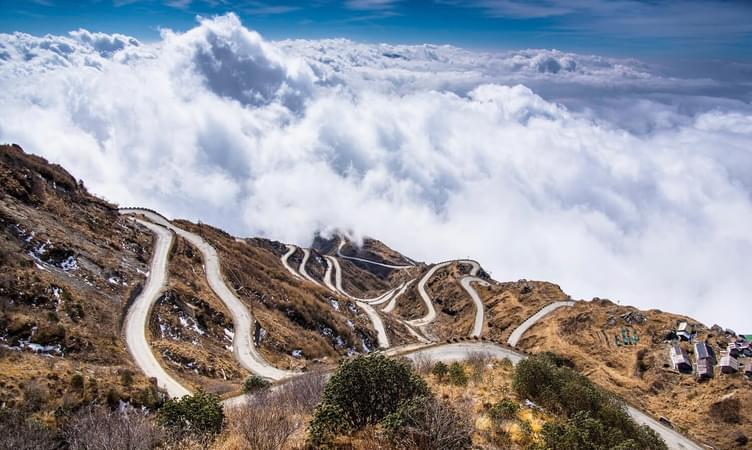
The Silk Route can be visited during all times of the year except for rainy season and the peaks days of the winter season when the roads are blocked with heavy snow.
However, the most ideal time to get the maximum out of your Silk Route trip are the months of May and October when the climate is perfectly pleasant for exploration and the roads are immune from the wrath of rain and snow.
The months of April, May, and June are the peak season with high influx of tourists. Another good time window is the months of October and November before the onset of the winter season. Explore the North East by booking 7 Days Tour of Gangtok Pelling and Darjeeling Family Trip To Sikkim
Icchey Gaon
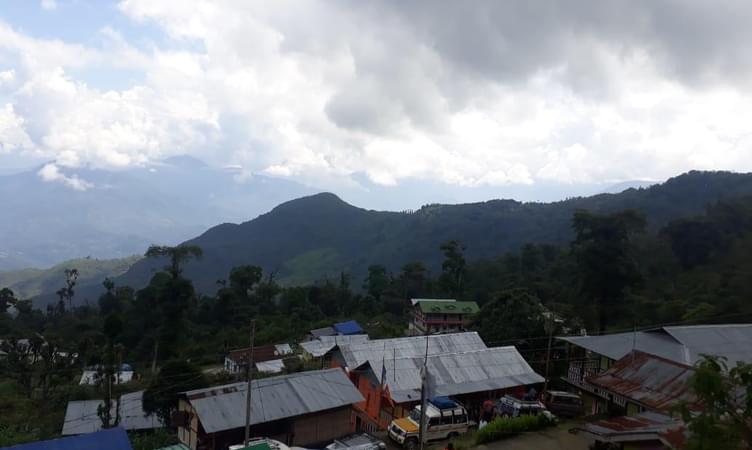
More commonly known as Echey Gaon, Icchey Gaon is a small but beautiful village in Kalimpong district of West Bengal, inhabited by approximately 30 families. Located at an elevation of 5,800 feet, this village is known to offer breathtaking views of towering Himalayan mountain peaks including Kanchenjunga to its visitors.
The scenic landscape of the village and the views of the snow-blanketed Himalayan peaks it offers make it a great destination for nature lovers and landscape photographers.
The dense forests of Pine, Birch, and Juniper trees surround the village, so it is a perfect destination for a holiday in the lap of Himalayas.
Location: 17 km from Kalimpong city center Check out our full guide on the best places to go in north east india which will help in planning your trip. Checkout More: North East India Honeymoon Packages
Silk Route Map
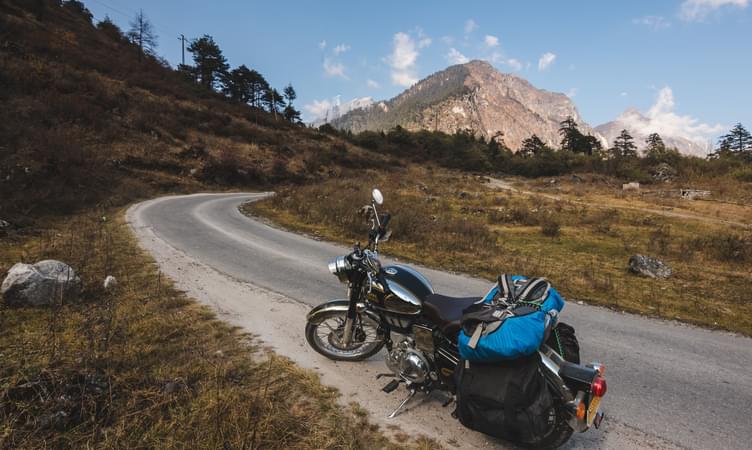
Icchey Gaon – Sillery Gaon – Kaagey – Pedong – Reshi Khola – Mankhim – Lingtum – Padamchen – Zuluk – Thambi View Point – Langthung Dhupidara – Nathang valley – Old Baba Mandir – New Baba Mandir – Nathula Pass – Tsomgo Lake – Gangtok city . Be sure to check out our best North East tour packages for a trip according to your wish. Book Now: North East Tour Packages For Family
Sillery Gaon

Another picturesque village located in Kalimpong district of West Bengal that also happens to be a great place to take a halt on your journey to explore Silk Route Sikkim.
The village boasts an elevation of almost 6,000 feet, so you can expect a pleasant climate even during the summer season. The village is engulfed in dense forests of Pine trees, ensuring a fresh air to detoxify your body and soothe your soul.
With the rising popularity of this village among tourists which was not known to many till a few years back, the locals have started to refer to it as New Darjeeling. Most importantly, the village has a hill top from where 360 degree vistas of the great Himalayas can be enjoyed. Adventure junkies can also go for rafting in sikkim , which is an amazing experience.
Location: 23 km from Kalimpong city center Inculcate the thrill inside you by booking Paragliding In Gangtok, Sikkim Also Recommended: Meghalaya Couple Package
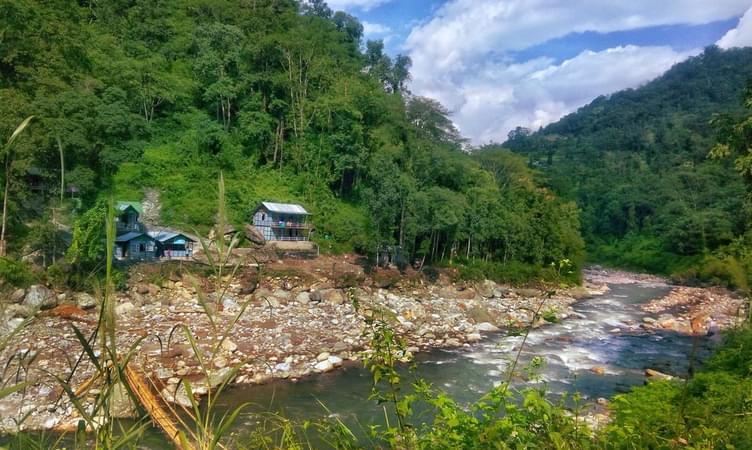
Popular as a weekend getaway for the people residing in the nearby cities, Kaagey is a tiny hamlet within the realm of Neora Valley National Park falling on the famous Silk Route Sikkim.
Thapas inhabit this village located near Kalimpong. With lush green forests, orchids, and flowers adorning the land of this village, it becomes an ideal spot for some quality time in the company of the Himalayan nature.
Apart from the unblemished nature, what is there to see here includes a church that is 300 years old, a Buddhist monastery and meditation center, and a waterfall known with the name of Jhakri. Kaagey is a beautiful place where you can spend a day or two on your trip.
Location: 21 km from Kalimpong city center
Also, don't miss to check our full article on how to reach sikkim bt various transportation modes. Checkout & Book: Meghalaya Tour Packages For Family
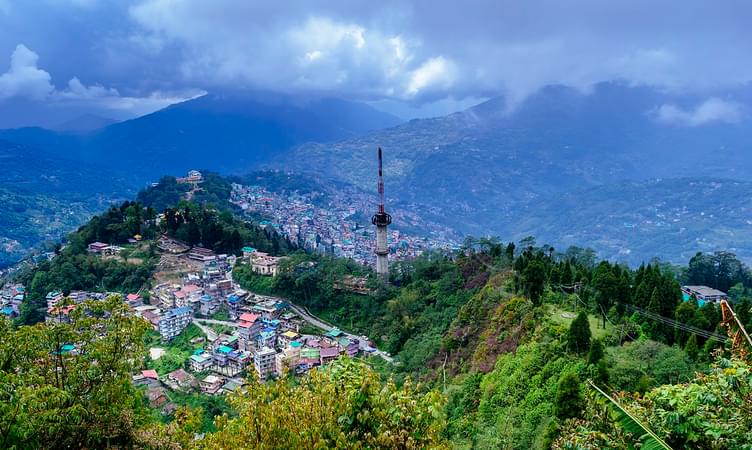
L ocated in the Kalimpong district of West Bengal at an elevation of 4,070 feet, this town is majorly known for Damsang Fort that overlooks it. The fort was built by Lepchas which now serves as a major tourist attraction.
The word ‘Pedong’ translates to a place full of Fir trees. For culture vultures, the town has an old Buddhist monastery built in the year 1706. Pedong is a potpourri of different cultures which makes it an interesting place to visit.
You can also find some good hotels here should you decide to take a halt. Do drop in at this small town to experience nature in all it glory on your Silk Route Sikkim expedition.
Location: 21 km from Kalimpong city center Must Book: Tawang Packages Gangtok Tour Packages For Family
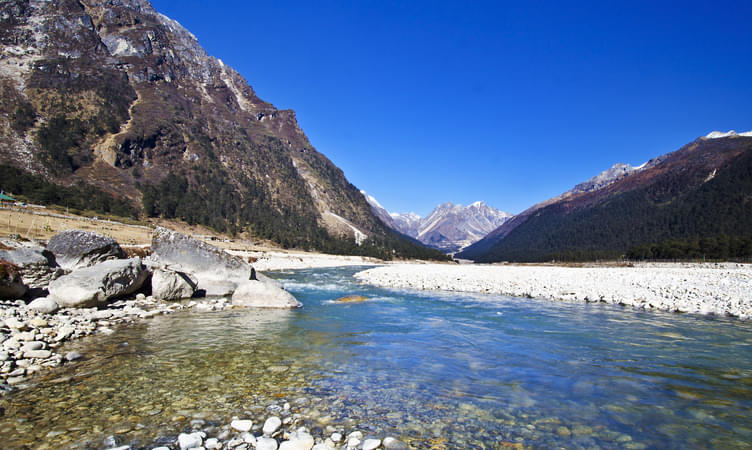
Location: 37 km from Kalimpong city center Here's the list of best places to visit in meghalaya , for having an amazing trip to meghalaya . Check More: Gangtok Tour Packages For Couple
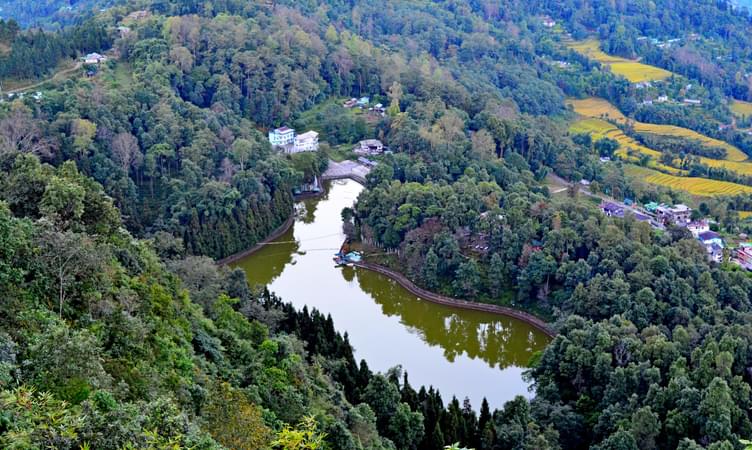
Overlooking Darapchand Village, this hilltop destination is worth giving your heart to. It is one of the most beautiful stopover options on the Silk Route Sikkim.
If you are visiting the famous tourist destination, Aritar, you should definitely spend some time in Mankhim as this small place has so much on offer. From the views of Mount Kanchenjunga to the fun of paddle boating in the emerald waters of Lampokhari Lake, Mankhim gives you plenty of reasons to visit it at least once.
Besides, you can also spot a variety of exotic bird species while you are here. And if you breathe for adventure, you can trek to a serene lake called Mulkarkha Lake from here.
Location: 37 km from Kalimpong city center. You may also have a look at various tourist places in cherrapunji which will delight you on your trip. Also Visit: Darjeeling Holiday Packages Darjeeling Tour Packages For Couple
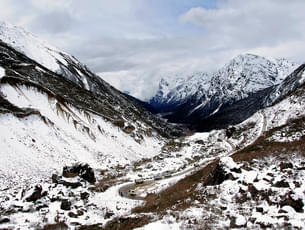
Also spelled as Lingtam, Lingtum is a small hamlet lying on the Silk Route with breathtaking scenery to behold. Tiny wooden houses, surrounded by dense forests of pine, and erected over velvety green grounds – this quiet valley looks bewitching, especially during the sunrise.
What prettifies the village further is the sound of the fluttering prayer flags, rustling of the pine trees, and the sight of the picture-perfect fields of rai leaf and corn.
A small river named Bakhuter Khola also passes by this village located at an altitude of 5,000 feet. Apart from a gompa, there is also a waterfall lying at a distance of approximately 5 km from the village known as Kiukhola Falls.
Location: 23 km from Zuluk city center There are plenty of amazing places to visit in shillong which will add sparkle to your trip. You Can Also Book: Family Trip To Darjeeling Assam Trip Packages
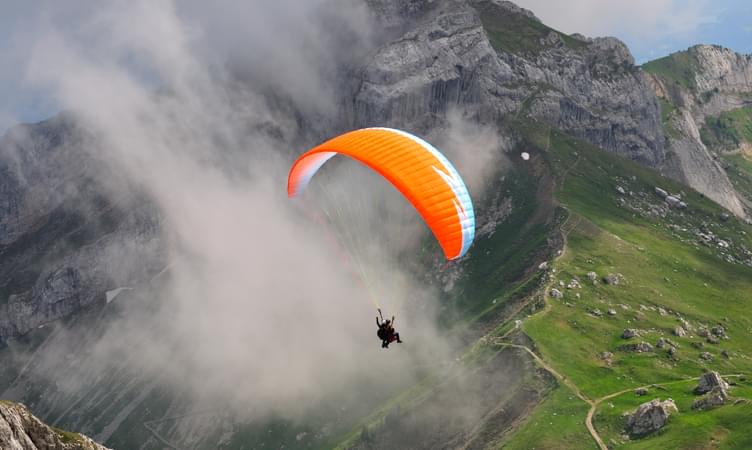
Best of Manali

This high altitude village perched on the slopes of Himalayas boasts a height of 8,000 feet, and is absolutely a treat for mountain lovers. Padamchen offers awe-inspiring views of the mighty Himalayan mountains draped in the covers of snow which also makes it a great choice for you if you are a photography enthusiast.
The place has several homestays and hotels where you can relax for a while and relish the aura of the untainted nature. The residential area is surrounded by dense Himalayan forests, so you can take strolls in the woods where you will be greeted by some bird species you may not have seen before.
For all the right reasons, this is an important stopover on the Silk Route.
Location: 8 km from Zuluk city center Here's our full guide on the best places to visit in Arunachal Pradesh , which will help in planning your trip to arunachal . Checkout More: Shillong Trip Packages Kaziranga Trip Package
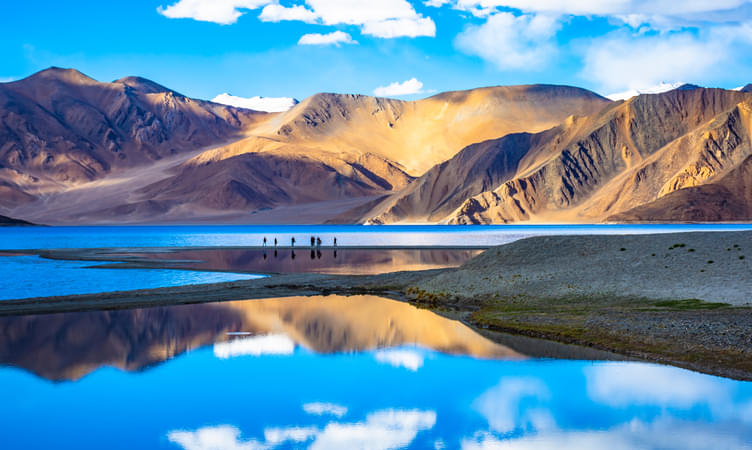
Best of Ladakh

Thambi View Point
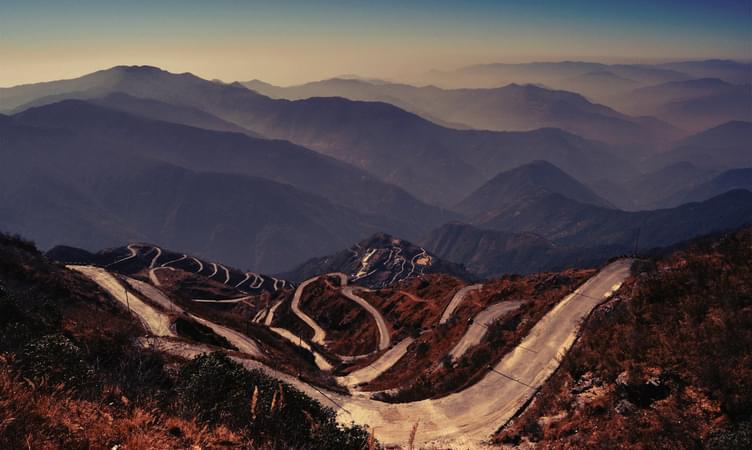
Proceed further to cover a distance of approximately 18 km from Padamchen and you will reach Thambi view point.
The spot claims an elevation of 11,200 feet and offers some unusual vistas of the grand Himalayas, especially Mount Kanchenjunga, that make it a popular view point among the tourists in the region.
Apart from that, the views of the zig-zag roads below are worth capturing on your camera. If you are planning to explore the Silk Route, this place cannot be skipped. A visit to this place in winter will offer you views of dazzling snow all around.
Location: 14 km from Zuluk city center Also Book: North East Packages From Mumbai North East Trip From Delhi
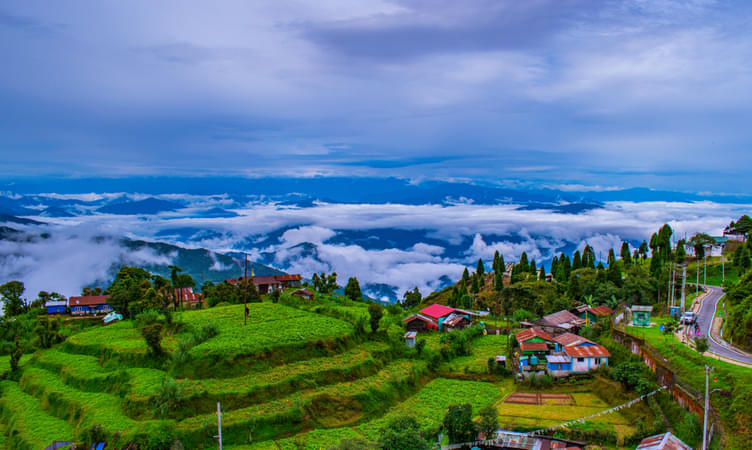
Best of Darjeeling

Langthung Dhupidara
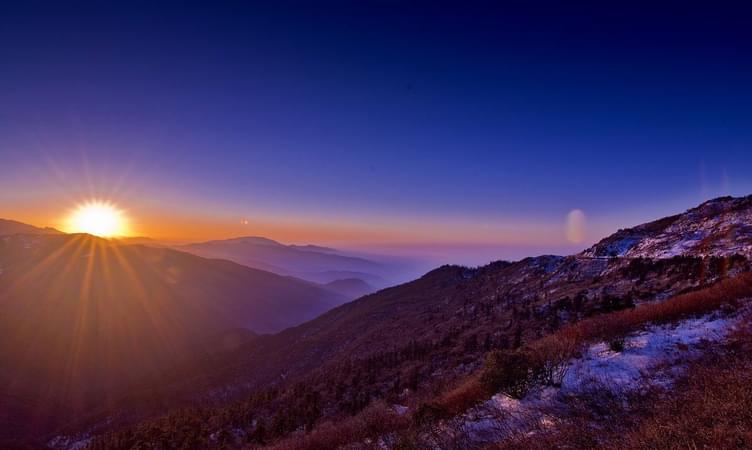
One of the most captivating places on the Silk Route for the lovers of snow, Langthung Dhupidara is a village that rests in the cold embrace of snow from December to April.
Only 1 km away from the famous Thambi View Point, this village is ideally tucked on a hilltop at an altitude of 11,500 feet, so you can expect some really amazing vistas of some of the most prominent Himalayan peaks including Mount Kanchenjunga.
If you want to witness a riot of colours with vibrant flowers and green vegetation, the period of July to September would be ideal. Whenever you are here, do not miss the magical sunrise over Mount Kanchenjunga.
Location: 17 km from Zuluk city center Do check out our best sikkim holiday packages for a trip to remember. Also Book: North East Tour Packages From Bangalore North East Holiday Packages From Chennai
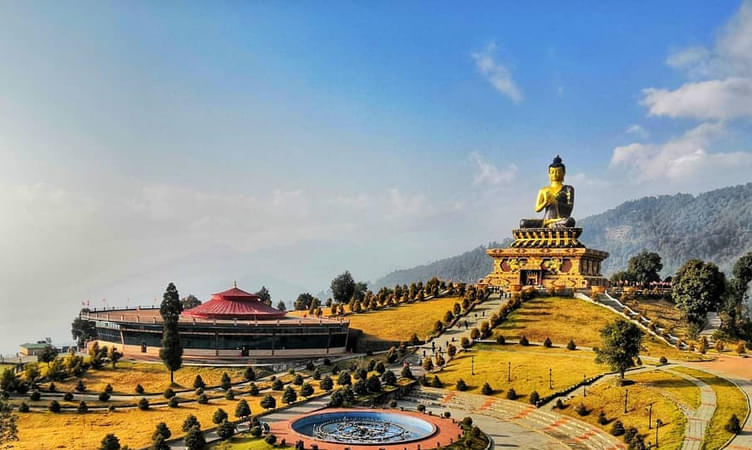
Best of Gangtok

Nathang Valley
.jpg?gravity=center&width=752&height=450&crop=fill&quality=auto&fetch_format=auto&flags=strip_profile&format=jpg&sign_url=true)
A valley where the beauty of nature reigns, Nathang Valley is one of the most charming places in Sikkim , visited by thousands of tourists with the case of wanderlust.
What was once the abode of traditional yak herders from Tiber is a major tourists destination now, with landscape beautiful enough to call them heavenly. There are a few tourist attraction in the valley in the form of a monastery, a temple, and a bridge looming over a stream of water.
Since the altitude of this place is 13,500 feet, you can expect heavy sheets of snow here during the winter season that are bound to allure the spirit within you. If you want to get some rest here, there are homestays available with all basic facilities.
Location: East Sikkim Checkout More: North East Tour Packages From Ahmedabad North East Holiday Packages From Kolkata
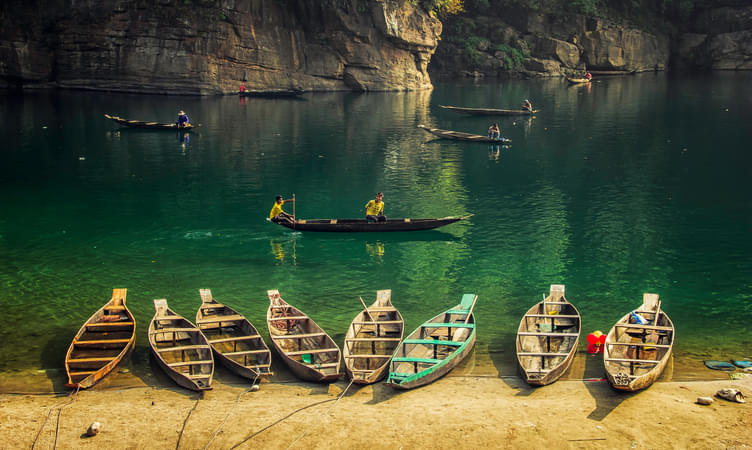
Best of Meghalaya

Old Baba Mandir
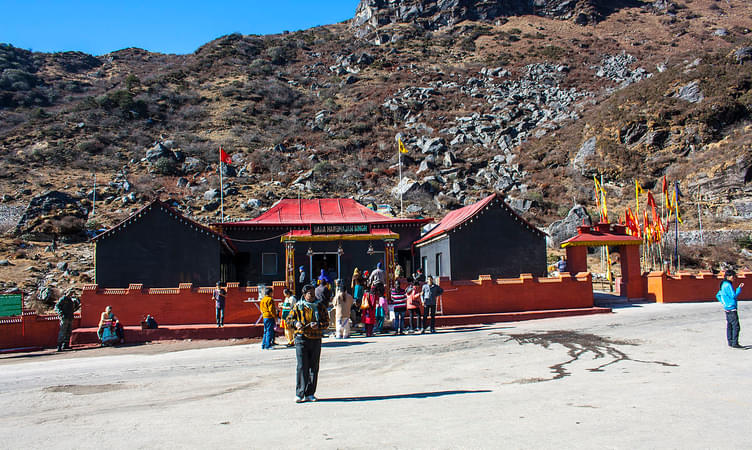
One of the most famous attractions on the Silk Route Sikkim, Old Baba Mandir calls for a short halt in your journey. Often visited by people travelling to Tsomgo Lake, this temple is located at a distance of 52 km from Gangtok.
The temple is dedicated to an Indian Army martyr, Baba Harbhajan Singh, and is located on the site of the bunker where he was posted. He had slipped and fell into a flowing stream, and had died there.
The shrine, surrounded by the colossal Himalayas, is more popular among the locals than tourists, and has huge reverence among the devotees. It is one of the must visit places near gangtok , so make sure to drop by.
Location: East Sikkim Also Recommended: North East Tour Packages From Hyderabad Mumbai To Meghalaya Tour Packages
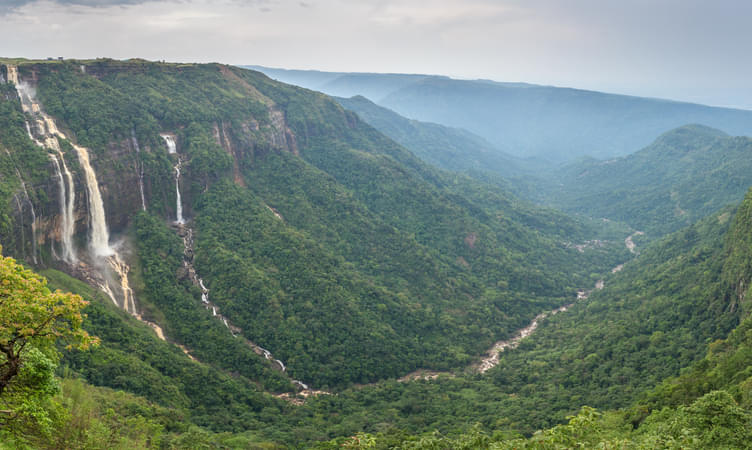
Best of North East India

New Baba Mandir
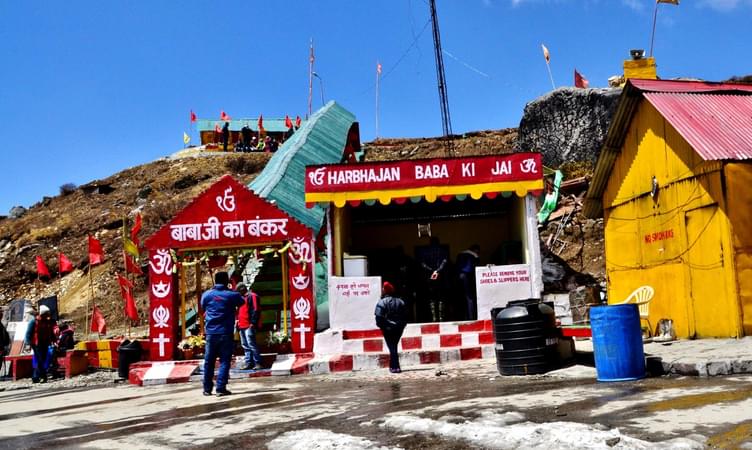
The samadhi of the martyr Baba Harbhajan Singh was reconstructed at another site in the year 1982 for the convenience of tourists. The temple is thronged by devotees and tourists every year.
This shrine, dedicated to Baba Harbhajan Singh, is located on the trail that leads to Menmecho Lake, and is popular as New Baba Mandir. It is believed that baba has been guarding the Indo-China border since his death and sends signs to army men through dreams to warn about unfavourable circumstances.
There are lot more interesting tales that are nothing short of miracles which you can get to hear when you visit this shrine.
Location: Kupup Gnathang Road, East Sikkim Must Check: Meghalaya Tour From Kolkata Meghalaya Tour Package From Bangalore
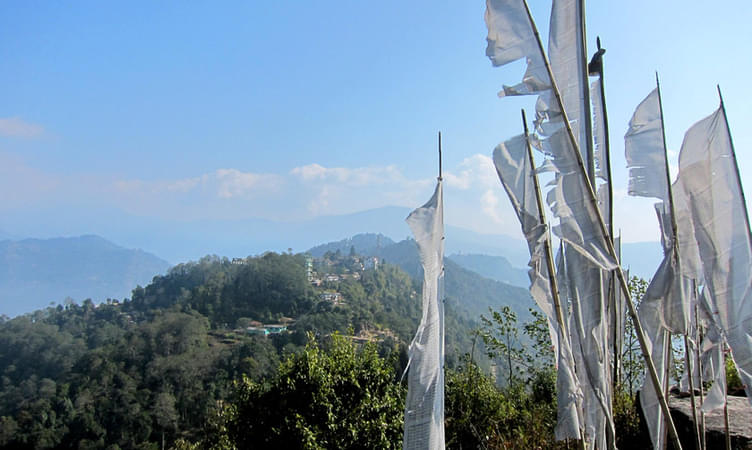
Best of Pelling

Nathu La Pass
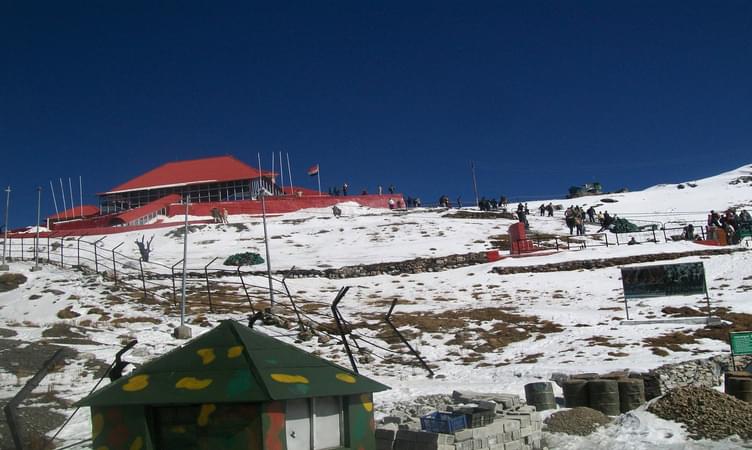
An iconic landmark of Sikkim on the Silk Road, Nathu La Pass is a high-altitude pass located at an altitude of 14,140 feet above the sea level on Indo-China border.
“Nathu” translated to “listening ears” in English and “La” means “pass”. Due to its proximity from Gangtok and the fame it has gathered over the past few years, the pass is visited by a number of tourists all round the year.
Thanks to its elevation, you can find plenty of snow here during the winter season. This pass served as the major passage between India and Tibet till the year 1962 when it was closed.
Acclimatizing before visiting this site is recommended due to low oxygen levels on this altitude. Checkout & Book: Meghalaya Packages From Chennai Delhi To Meghalaya Tour Package
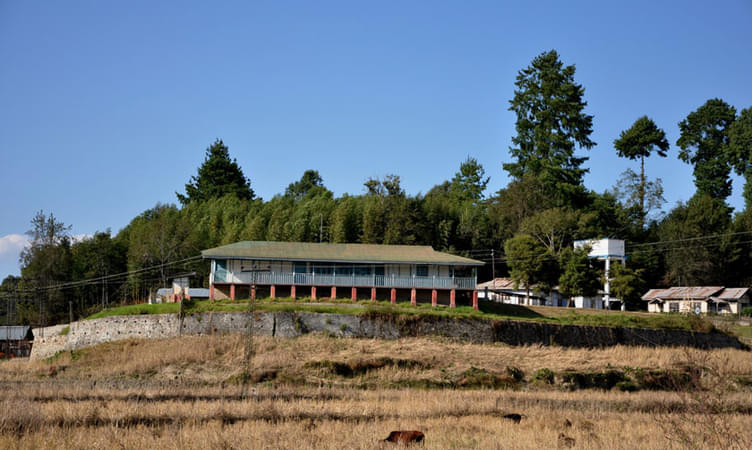
Best of Arunachal Pradesh

Tsomgo Lake
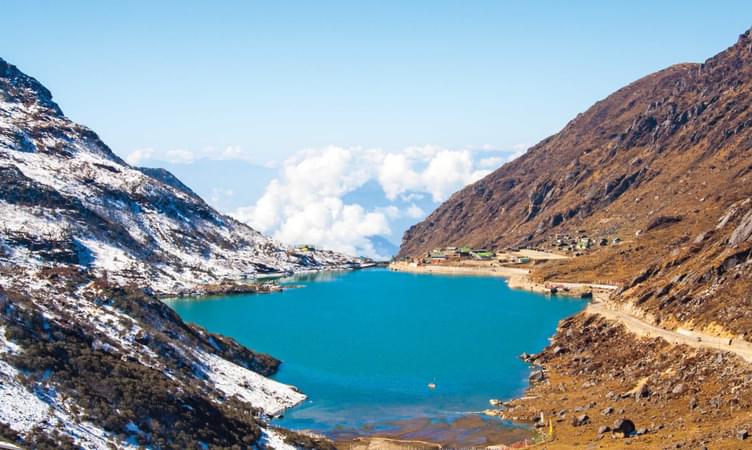
Also known as Changu Lake, this is the most famous lake in Sikkim. ”Tsomgo” translates to “source of water” in English.
It is a glacial lake located at a whopping elevation of 12,400 feet. The sub zero temperatures during the winter season freeze the lake, while it stay surrounded by mountains fully covered in white blankets of snow. If you are shutterbug, you are going to have a really good time here freezing the moments at the freezing lake in frames.
Otherwise, even during the summer and spring seasons, the lake looks equally beautiful with flowers bordering its azure waters catching the reflection of the mighty mountains that surround the lake. Adding grace to your visit is the scenic road that leads to this lake which is truly amazing.
Location: 40 km from Gangtok Also Book: Arunachal Tour Package From Guwahati Kolkata To Arunachal Pradesh Tour Package
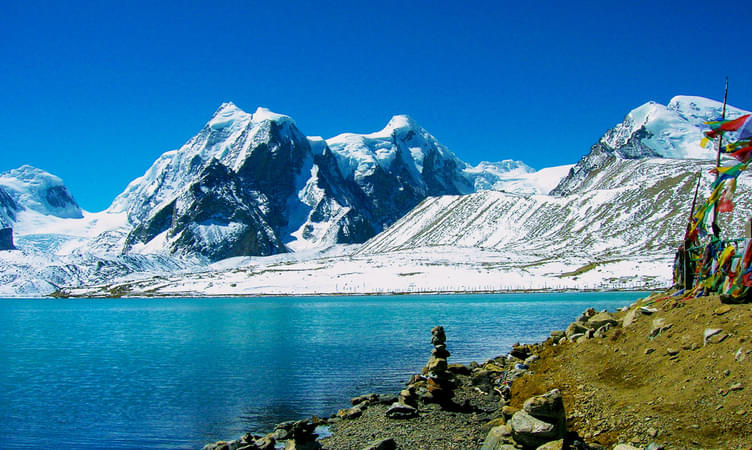
The capital city of Sikkim, Gangtok has a lot on offer ranging from colourful monasteries that will help you take a plunge into the world of cultural vibrance and spirituality to unusual vantage points that will let you soak in the beauty of the enchanting realm of Himalayas in the best possible manner.
The city is located at an altitude of 1,650 meters and ensures a pleasant climate throughout the year. Apart from the bountiful nature, the city has a number of man-made or man-developed attractions.
Some of the best places to visit here are Namgyal Institute of Tibetology, Enchey Monastery, Ganesh Tok, Hanuman Tok, and Rumtek Monastery. The cosmopolitan town also has a number of great accommodation options for a wonderful stay.
Checkout the favorite season to visit Gangtok to manage your trip accordingly.
Location: Sikkim
Book Now: Siliguri To Gangtok Tour Package Darjeeling And Gangtok Tour Packages From Kolkata
People Also Ask About Sikkim
What is the best time to visit silk route sikkim for couples, what is the best time to visit silk route sikkim for families, what are the best places to visit in the silk route sikkim, what are the best sikkim tour packages on thrillophilia.
- Sikkim Package From Kolkata
- Sikkim Packages From Ahmedabad
- Sikkim Packages From Mumbai
- North Sikkim Tour From Gangtok
- Sikkim Packages From Bangalore
- Sikkim Tour Packages From Chennai
- Surat To Sikkim Tour Packages
- Sikkim Tour Packages From Guwahati
- Sikkim Packages From Delhi
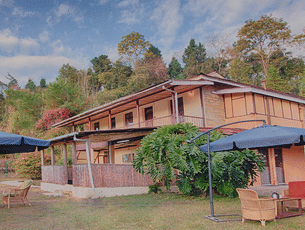
Trending in Sikkim
Adventure in sikkim.
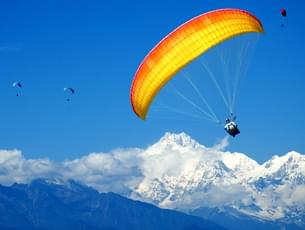
Trekking in Sikkim
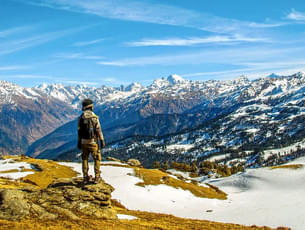
Sikkim Top Attractions
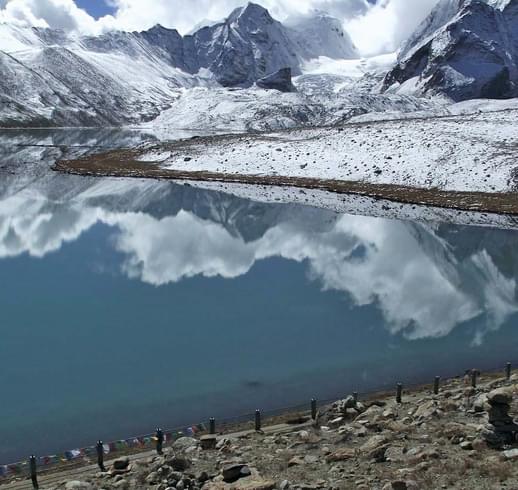
If you are a true mountaineer, you can’t miss the chance to be a part of this expedition. Due to high level of precipitation the peaks of Kanchenjunga is mostly glaciated. You can simple enjoy an epic scenery which is truly going to leave you jaw dropped. Highlights: Preservation of the rich flora and fauna is also important and you will get to witness them too during trekking. It is difficult to comprehend the scale of both valleys and mountains here. Difficulty Level – High. Best time to visit: October and November. Prices: USD$985 per person.
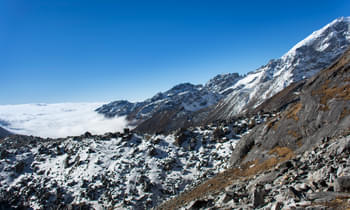
The first phase of the trek to Goecha La will take you from Yuksom to Sachen. Yuksom is situated at an altitude of 5,700 feet and Sachen is situated at an elevation of 7, 200 feet. The trekking trail passes through a route of immense natural beauty. You will come across lush green fields, valley of the Rathong River and thick forests. From Sachen you will need to climb ahead to Tshoka which is at an altitude of 9,650 feet.This trek is quite enjoyable in the initial phase but becomes tryingly steep towards the later phase. On reaching Bakhim, you can enjoy a spectacular view of the Yuksom valley. As you trek on ahead, you pass through Dzongri and Phedang. You will also be able to enjoy the beauty of some of the densest rhododendron forests in India and get a breathtaking view of the highest mountains in the Himalayan range. You will pass through the beautiful Samiti Lake which will mesmerise you with its sparkling blue waters.The entire journey from Yuksom to Goecha La is a treat to the eyes. Despite being a test of physical stamina, the route is undoubtedly one of the most beautiful routes that you can come across while trekking in the Himalayas.Best Season: September- November & March-AprilDifficulty Level: Moderate to ChallengingMax. Elevation: 5002 mBest Offers on Goecha La Trek
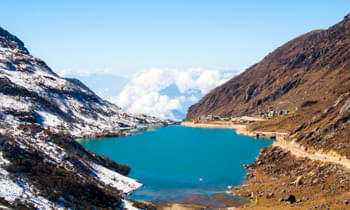
Explore Tsomgo Lake, situated at an impressive 12,400 feet above sea level and surrounded by majestic mountains. With its verdant alpine forests and towering snow-capped mountains as its backdrop, Tsomgo Lake is sure to take your breath away.This glacial lake, which receives its water from the melting snows of the surrounding mountains, is well known for its constantly shifting hue. You can witness the lake radiating a vivid aquamarine colour during the monsoon, while a thin layer of ice covers it in the winter. Explore the serene beauty of Tsomgo Lake, a highlight of our Sikkim trip packages, offering unforgettable Himalayan experiences.As summer quietly approaches the area in mid-May, you can see the lake's shores come alive with a kaleidoscope of blooming flowers. Around this oval-shaped gem, you can spot rhododendrons, primula, irises, and a plethora of multicoloured poppies forming a vibrant mosaic. You can also witness how the exotic vegetation and therapeutic herbs accentuate the lake's allure amidst this flowery paradise.
More Sikkim Attractions
Sikkim travel guides.
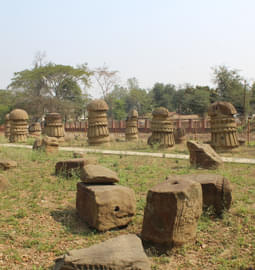
Sikkim Reviews

Popular Nearby Places Around Sikkim
More things to do in sikkim, more on sikkim tourism, popular related destinations.
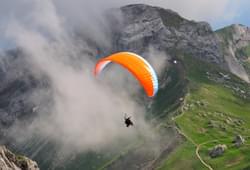
Best Domestic Packages
Best international packages, domestic honeymoon packages, international honeymoon packages, places to visit in india, international places to visit, things to do in india, international things to do, popular on thrillophilia.
- We assure the privacy of your contact data.
- This data will only be used by our team to contact you and no other purposes.
Your enquiry has been received successfully. Our destination expert will reach out to you soon!
12 Best Silk Road Destinations with Top Things to Do
The Silk Road in China has a wealth of fascinating and beautiful destinations and attractions. This ancient Chinese trade route has many contrasting things to do.
A suggested Silk Road itinerary with all 12 recommended destinations is: Luoyang–Xi'an–Tianshui–Lanzhou–Ningxia (Guyuan, Zhongwei, Yinchuan) – Gannan–Zhangye–Jiayuguan–Dunhuang–Turpan–Urumqi–Kashgar.
The 12 Silk Road destiatinons and what to do in each place are covered below in order of recommendation.
Content Preview
- Dunhuang — Grottoes Culture and Desert
- Zhangye — Unique Danxia Landform
- Kashgar — Profound Uyghur Culture
- Urumqi — Natural Scenery and Uyghur Culture
- Turpan — Ancient Ruins and Juicy Fruits
- Ningxia — Vast Desert and Great Vineyards
- Luoyang — Kung Fu, Temples, and Grottoes
- Xi'an — Famous Terracotta Warriors
- Gannan — Tibetan Culture and Plateau Scenery
- Lanzhou — Cradle of Yellow River Civilization
- Jiayuguan — The Great Wall Meets the Silk Road
- Tianshui — Grottoes and Temples
1. Dunhuang — Magnificent Grottoes Culture and Desert
Dunhuang became prosperous with the rise of the Silk Road. It was a necessary stop on the Silk Road from China's Central Plains to Central Asia. Its unique location bred its distinct culture — great civilizations met there.
One of the greatest influences of the Silk Road on ancient China was the introduction of Buddhism. As the gateway of the Silk Road to inner China, Dunhuang's grotto culture completely reflects this fact.
Artists from different periods of the Middle Ages carved exquisite murals and Buddhist statues in the grottoes, creating the greatest treasures of Buddhist art to exist in the world.
Top Things to Do in Dunhuang
- Bask in history and art in the Mogao Caves.
- Paint your exclusive mural on a mud slab that is made from the same materials as the Mogao Caves.
- Explore Devil City (the Yadan landscape) to witness a masterpiece that was created by wind and sand.
- Ride a camel and enjoy sand sliding on the Singing Sand Mountains.
2. Zhangye — Unique Danxia Landform
An important staging point on the Silk Road, Zhangye is a fertile green zone in the otherwise desolate Gansu Corridor. In Zhangye, you can feel the influence of Buddhism: Zhangye's Grand Buddha Temple, built in 1098, houses China's largest indoor reclining Buddha. The frescos on the walls are depictions of stories from "Journey to the West" and "Classic of Mountains and Seas".
Zhangye also has a special attraction: its eye-catching red and even rainbow-colored landforms, known as Danxia — photographer's eye candy.
Top Things to Do in Zhangye
- Take instagrammable photos with the rainbow mountains in Zhangye Danxia National Geological Park
- Visit Wooden Pagoda Temple — the only pagoda remaining in Zhangye
- Visit the magnificent Mati Temple Grotto
3. Kashgar — Profound Uyghur Culture
With a history of over 2,000 years, Kashgar served as a main node of communications along the ancient Silk Road, which linked ancient China with the Central Asian countries.
It was a trading center for goods on the Silk Road, and so it got the name 'Bazaar Kingdom'.
Kashgar is one of the most characteristic cities of Xinjiang. Kashgar is China's most Muslim city. Uyghurs make up about 80 percent of the city's population.
Top Things to Do in Kashgar
- Discover Kashgar Old City — the only traditional historical district with typical characteristics of Xinjiang that is being preserved.
- Explore Kashgar Livestock Market — a bazaar that has existed for centuries on the Silk Road.
- Walk to Handicrafts Street to see various exotic handicrafts.
- Admire Id Kah Mosque, the biggest mosque in China.
Recommended: 5-Day In-Depth Nature and Culture of Kashgar Tour
4. Urumqi — Natural Scenery and Uyghur Culture
Situated on the ancient Silk Road's northern loop, Urumqi was an important stop for caravans traveling the Ili River Valley from the main route across the Turkistan region.
Urumqi possesses beautiful natural scenery and intriguing ancient remains. Xinjiang Silk Road Museum displays Chinese civilization along the Silk Roads and local ethnic cultures.
Top Things to Do in Urumqi
- Enjoy Heavenly Lake's picturesque scenery via a boat tour.
- Explore Erdaoqiao Market, which has a strong Islamic style, where you can find various Xinjiang foods and handicrafts.
- Have fun in Silk Road International Ski Resort in winter.
5. Turpan — Ancient Ruins and Juicy Fruits
In the vast land of Xinjiang, there is an oasis surrounded by the Gobi, quicksand, and dry ancient river channels. That is Turpan. There are mysterious legends, ruins, and numerous ethnic customs.
It was also an important window for communication, trade, culture, and religion between Central Plains and Western countries for thousands of years.
Summer and autumn are the best and most popular times to travel to Turpan when the trellises are full of juicy and sweet grapes.
Top Things to Do in Turpan
- Unveil the secrets of an ancient underground irrigation system — the Karez Well System.
- Visit the ruins of the ancient city of Jiaohe — the world's 'largest, oldest, and best-preserved city of raw-earth buildings'.
- Find evidence of the cultural exchange that took place along the ancient Silk Road in Turpan Museum.
6. Ningxia — Vast Desert and Great Vineyards
Ningxia is one of the birthplaces of Chinese civilization. On the northern loop of the Silk Road between Xi'an and Lanzhou, Ningxia used to be an important transportation and trade channel between the east and the west.
Ningxia possesses the Xumi Grottoes in Guyuan, which are comparable to the famous Longmen Grottoes and Yungang Grottoes, the Helan Mountain Rock Paintings north of Yinchuan known as the 'Art Gallery of Nomads', the Western Xia Imperial Mausoleum in Yinchuan known as the 'Eastern Pyramid', and numerous excellent vineyards around Zhongwei.
Top Things to Do in Ningxia (all in Zhongwei)
- Experience dune bashing, sand sledding, camel trekking, and camping in the desert in Zhongwei.
- Experience sheepskin rafting on the Yellow River.
- Enjoy wine tasting and an organic lunch in peace with a view of the vineyard.
7. Luoyang — Kung Fu, Temples, and Grottoes
Luoyang was the most eastern starting point of the Silk Road. In the Eastern Han Dynasty (25–220), when Luoyang was China's capital, Emperor Ming sent his envoy Ban Chao to the western regions to open up the long-neglected Silk Road. He extended China's Silk Road trade to Europe for the first time, reaching the Roman Empire.
Luoyang was also the birthplace of Shaolin Kung Fu. It boasts many historical attractions, from World Heritage Sites to a State Protected Historic Area.
Top Things to Do in Luoyang
- Visit the Longmen Grottoes — Luoyang's biggest draw.
- Explore White Horse Temple — "birthplace of Chinese Buddhism".
- Watch performances of martial arts and learn kung fu in Shaolin Temple in nearby Zhengzhou.
8. Xi'an — Famous Terracotta Warriors
Xi'an is where the Silk Road began when it was China's capital city during 13 dynasties. Emperor Wudi (156–87 BC) of the Han Dynasty (206 BC – 220 AD) sent the first Chinese delegation from Xi'an to Central Asia and Europe.
Xi'an reached its heyday as China's capital during the Tang Dynasty (618–907). Western goods and clothes were very popular during that period.
During the Ming Dynasty (1368–1644), many Muslim merchants came to Xi'an via the Silk Road and put down roots there. You could feel Xi'an's Muslim culture in Muslim Street.
Top Things to Do in Xi'an
- Admire the Terracotta Warriors and make your own warriors at a cave dwelling.
- Have a pleasant stroll and taste local snacks at the Muslim Quarter.
- Ride a bike on the Ancient City Wall and enjoy views of the different areas of the city.
9. Gannan — Tibetan Culture and Plateau Scenery
Gannan in southeast Gansu, just 200 km south of the Silk Road running through Lanzhou, is one of China's ten Tibetan autonomous prefectures. There are gorgeous mountains, valleys, gorges, wetlands, and meadows. If you cannot go to Tibet, Gannan is an ideal place to experience Tibetan culture and appreciate stunning Tibetan plateau landscapes.
Top Things to Do in Gannan
- Explore Labrang Monastery, which is home to the largest number of monks outside of Tibet Autonomous Region.
- Visit Ganjia Grassland with fresh flowers and flocks of Tibetan sheep.
- Discover Edenic Zhagana — a Tibetan village hidden in the mountains.
Recommended: 6-Day Xiahe, Langmusi and Zhagana Tour
10. Lanzhou — Cradle of Yellow River Civilization
Lanzhou was a key city on the Silk Road trade route, because it is at the entrance of a long, narrow valley called the Hexi Corridor joining the China plains with the western deserts, and it was a key place for crossing the Yellow River.
The legacy of centuries of travel and trade on the Silk Road is displayed at the Bingling Temple Grottoes and its ancient temple and fortifications in the Hexi Corridor near Lanzhou.
Top Things to Do in Lanzhou
- Visit Bingling Temple where you can see typical Indian-style hand gestures and poses.
- Take a stroll on Nanbinhe Road, known as 'Lanzhou's Bund'.
- Visit Gansu Museum to learn about the history of the Silk Road.
11. Jiayuguan — The Great Wall Meets the Silk Road
Jiayuguan is on the Silk Road, where the western starting point of the Great Wall in the Ming Dynasty (1368–1644) was.
In today's Jiayuguan, you can still find traces of the prosperous ancient Silk Road. The beacon towers on the ancient battlements are visible.
Top Things to Do in Jiayuguan
- Visit Jiayuguan Fort — gateway to medieval China.
- Explore the Overhanging Great Wall.
- Visit the Great Wall Museum — first Great-Wall-themed museum.
12. Tianshui — Grottoes and Temples
Tianshui is between Xi'an and Lanzhou on the Silk Road and on the "Eurasian Continental Bridge", a rail route said to be the cheapest and fastest land route between China's Pacific Ocean coast and northwestern Europe.
Tianshui is renowned for its historic relics and natural beauty. Fuxi Temple and Guatai Mountain are places where Chinese people worship their ancestors. The Maiji Mountain Grottoes display more of the features of the culture of China's Central Plains than Mogao's because they're nearer to central China.
More Silk Road Travel Tips
- How to Plan a Silk Road Tour: 7 Things You Need to Know
- Best Times to Visit the Silk Road: A Month-by-Month Weather Guide
- 10 Days on the Silk Road: 4 Top First-Timer Itineraries
- 2 Weeks on the Silk Road: 3 First-Timer Itineraries
- How to Plan a 3-Week Itinerary on the Silk Road
- 2-Week Private China Tour: Beijing–Xi'an–Lhasa-Shanghai
- 12-Day China Silk Road Tour from Xi'an to Kashgar
- 11-Day China Classic Tour
- 14-Day China Natural Wonders Discovery
- 15 Best Places to Visit in China (2024)
- Best (& Worst) Times to Visit China, Travel Tips (2024/2025)
- How to Plan a 10-Day Itinerary in China (Best 5 Options)
- 8 Days in China: Top 15 Tours and Itineraries (2024/2025)
- China Weather in January 2024: Enjoy Less-Crowded Traveling
- China Weather in February 2024: Places to Go, Costs, and Crowds
- China Weather in March 2024: Destinations, Crowds, and Costs
- China Weather in April 2024: Where to Go (Smart Pre-Season Pick)
- China Weather in May 2024: Where to Go, Crowds, and Costs
- China Weather in June 2024: How to Benefit from the Rainy Season
- China Weather in July 2024: How to Avoid Heat and Crowds
- China Weather in August 2024: Weather Tips & Where to Go
- China Weather in September 2024: Weather Tips & Where to Go
- China Weather in October 2024: Where to Go, Crowds, and Costs
- China Weather in November 2024: Places to Go & Crowds
- China Weather in December 2024: Places to Go and Crowds
Get Inspired with Some Popular Itineraries
More travel ideas and inspiration, sign up to our newsletter.
Be the first to receive exciting updates, exclusive promotions, and valuable travel tips from our team of experts.
Why China Highlights
Where can we take you today.
- Southeast Asia
- Japan, South Korea
- India, Nepal, Bhutan, and Sri lanka
- Central Asia
- Middle East
- African Safari
- Travel Agents
- Loyalty & Referral Program
- Privacy Policy
Address: Building 6, Chuangyi Business Park, 70 Qilidian Road, Guilin, Guangxi, 541004, China
Newly updated 2024-2025 160+ page digital Catalog now available!
6 Ways to Explore the Silk Road by Private Train
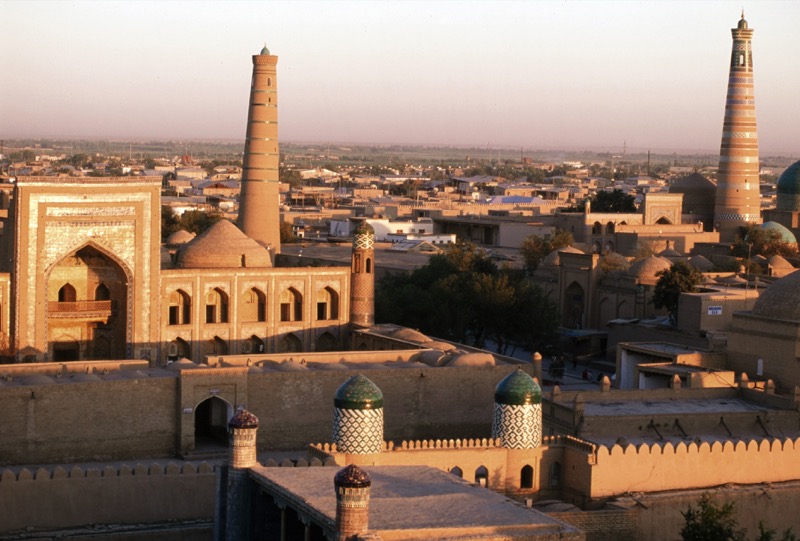
For more than a thousand years, the interconnecting web of routes known as the Silk Road was at the heart of economic and cultural exchange between East and West. Winding through fabled oasis cities such as Samarkand and Bukhara, this legendary conduit gave rise to the trade of precious silks, spices, metals, and jewels that fueled ancient empires, and spread ideas, technology, art, and spiritual beliefs that shaped the ancient world.
Camel caravans of old once trudged through treacherous desert sands and mountain passes. But today, you can follow in the footsteps of ancient merchants, monks, conquerors, and explorers aboard a comfortable and stylish rail journey by private train.
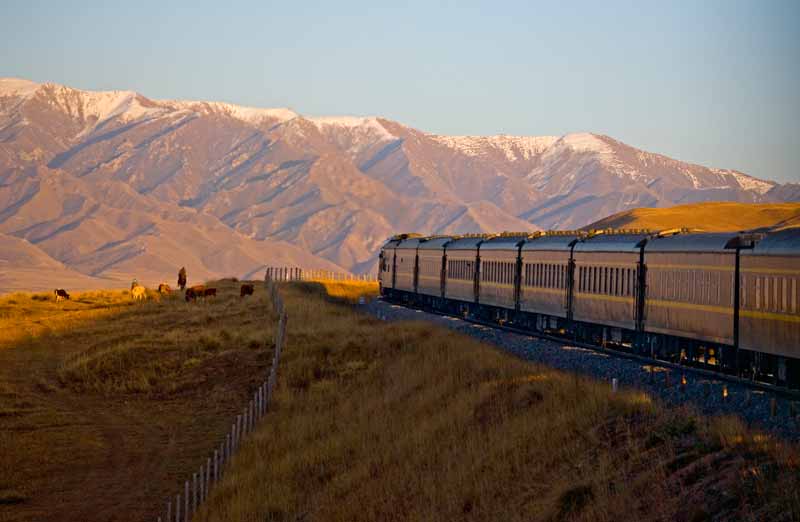
Why Travel the Silk Route Now?
During our 30 years of operation, we’ve seen interest in travel to Central Asia skyrocket – and we couldn’t be happier that one of our longtime favorite regions has grown in popularity. The Five ‘Stans are rich repositories of treasures waiting to be discovered. And MIR has mined years of expertise and insider knowledge about them.
The time to visit these fascinating Silk Road countries is now. And what better way to traverse their vast desert expanses than in the comfort and style of a private train?
Ways to Travel the Silk Road by Train
1. Republics of the Silk Road by Private Train
- 17-day rail journey: Moscow to Almaty via Central Asia aboard the luxury Golden Eagle private train
- Stops in 6 countries: Russia , Kazakhstan , Kyrgyzstan , Tajikistan , Turkmenistan , Uzbekistan
- A shorter, 14-day version of this rail journey is also available: Tashkent to Almaty aboard the luxury Golden Eagle private train
- Stops in 4 countries: Uzbekistan, Kyrgyzstan, Turkmenistan, Kazakhstan

(click image to view larger photo)
2. The Silk Route by Private Train
- 21-day rail journey: Beijing to Moscow via Central Asia aboard the luxury Golden Eagle private train
- Stops in 5 countries: China , Kazakhstan, Uzbekistan, Turkmenistan, Russia
- A shorter, 13-day version of this rail journey is also available: Almaty to Moscow aboard the luxury Golden Eagle private train
- Stops in 4 countries: Kazakhstan, Uzbekistan, Turkmenistan, Russia
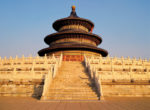
3. Tibet & China Rail Discovery
- 13-day rail journey: Urumqi to Lhasa aboard the Shangri-La Western Express private train .
- Stops in: China and Tibet
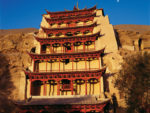
4. Essence of the Silk Road by Private Train
- 14-day rail journey: Between Almaty and Ashgabat aboard the Orient Silk Road Express private train , eastbound and westbound routes
- Stops in 3 countries: Kazakhstan, Turkmenistan, Uzbekistan

5. Essence of the Silk Road & Beyond by Private Train
- 16-day rail journey: Almaty to Tashkent aboard the Orient Silk Road Express private train
- Stops in 4 countries: Kazakhstan, Kyrgyzstan, Tajikistan, Uzbekistan, Kyrgyzstan
6. Caspian Odyssey by Private Train
- 16-day rail journey: South Caucasus to Central Asia aboard the luxury Golden Eagle private train
- Stops in 6 countries: Armenia , Georgia , Azerbaijan , Turkmenistan, Kazakhstan, Uzbekistan
Travel with MIR on a Rail Journey by Private Train
MIR is an award-winning company with over 30 years of travel experience in this area of the world , in addition to having affiliate offices in Siberia, Western Russia , and Uzbekistan that provide a superior edge in on-the-ground operations.
MIR makes it easy to discover incredible destinations on all of our private rail journeys . Each train departure features comfortable accommodations, modern amenities, and superb service on board, and allows travelers to easily and efficiently cover thousands of miles across multiple time zones.
Showing 8 results
- Not available Rail Journey Call for Pricing Republics of the Silk Road by Private Train Departures May Vary
- Not available Rail Journey Call for Pricing The Silk Route by Private Train: Westbound Departures May Vary
- Rail Journey Call for Pricing The Silk Route ’Stans by Private Train: Westbound Departures May Vary
- Rail Journey Call for Pricing Tibet & China Rail Discovery Departures May Vary
- Rail Journey 14 Days From $7,845 Essence of the Silk Road by Private Train: Westbound Departures: 2024 (1)
- Rail Journey 14 Days From $7,845 Essence of the Silk Road by Private Train: Eastbound Departures: 2024 (1)
- Rail Journey 15 Days From $8,095 Essence of the Silk Road & Beyond by Private Train Departures: 2024 (1), 2025 (2)
- Rail Journey 16 Days From $28,095 Caspian Odyssey by Private Train: Eastbound Departures: 2024 (1), 2025 (1)
Stories To Inspire
Enthralling uzbekistan: our favorite things to see & do, what to know before you go: kazakhstan, kyrgyzstan: why i love this unfamiliar frontier, top 10 places to discover in tajikistan: undiscovered, remote, incredible, ashgabat: turkmenistan’s lavish capital of marble and gold.
- Destinations
- Trip Finder
- Plan Your Journey
- Get in Touch
- MIR's Travel Blog
- Special Offers & Savings
- How To Book A Trip
- Call us: 800-424-7289
- Bosnia and Herzegovina
- North Macedonia
- Czech Republic
- Turkmenistan
- Saudi Arabia
- United Arab Emirates
- The Golden Eagle Train
- The Golden Eagle Danube Express Train
- The Shangri-La Western Express Train
- The Orient Silk Road Express Train
- Regularly Scheduled Trains
- The Balkans
- The Baltics
- Central & East Europe
- Central Asia
- Middle East
- Mongolia, China, Tibet
- South Caucasus & Turkey
- Rail Journeys
- Get Started
- Custom Travel Inquiry form
- Reading Lists
- Special Offers & Savings
- Frequently Asked Questions
- Custom & Private Travel
- The MIR Story
- The MIR Commitment
- MIR Near & Far
- Tour Managers & Guides
- Press & Media
- Awards, Memberships & Affiliations
- The Magazine
- Stay Curious
- The Sciences
- Environment
- Planet Earth
What Was the Silk Road and What Happened to It?
The silk road facilitated trade from asia to europe and vice versa for more than a millennium. find out why its fabric finally started to fray..
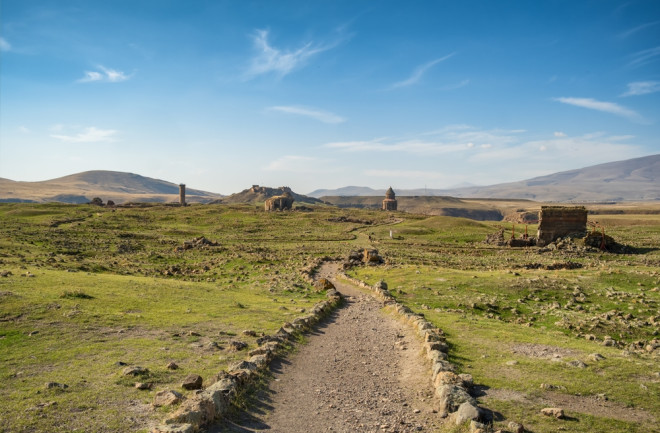
The Han Chinese court welcomed Western trade for one of the first times in its history around 2,000 years ago. What its courtiers couldn't have imagined was that they were laying the foundations for one of the oldest, largest and longest-lasting systems of trade in the world.
That said, the ancient Silk Road system endured the formation and the fall of countless cultures and civilizations throughout its 1,600-year existence, emerging from almost every experience bigger and better than before.
So, what were the events that defined the history of the Silk Road, and why did this system eventually end?
When Did the Silk Road Start?
A muddled collection of constantly changing routes and roads moved commodities across Asia and Europe for a significant stretch of antiquity, from approximately 130 B.C. to A.D. 1450.
Commonly called the Silk Road, this terrestrial and aquatic system spanned as many as 6,000 miles and connected countless territories, from China and India to Iran and Italy. Crossing through the toughest terrains, including mountains, deserts, steppes and seas, the system cut from China’s ancient capital city of Chang’an ( Xi’an) to Central and West Asia, all the way to the Mediterranean.
What Was the Silk Road?
The Silk Road transported all sorts of items, including salt, spices, precious stones, precious metals, paper and porcelain. But the system was originally built on the transmission of finished silk fabric, which was only fashioned in China at the time of the system’s foundation.
Read More: What Was Traded On the Silk Road?
Initial Trades
At that time, China’s courtiers understood silk was worth a substantial sum within their own society, and they treated its methods of manufacture as state secrets. But they weren’t fully acquainted with the fabric's worth in the West, since their only foreign trade of the textile was a part of their diplomacy.
When the tribes of the Xiongnu people pillaged China’s frontiers around 200 B.C., for instance, the Han court provided the tribes with silk as a part of its plea for peace . And when the tribes of the Xiongnu people were still pillaging China’s frontiers around 130 B.C., the Han court provided the tribes’ rivals with silk in return for a special type of swifter, stronger horse, which was instrumental in the defeat of the Xiongnu several decades later.
Intensifying Trade
These interactions, in addition to a series of missions sent out in search of foreign allies, revealed the intensity of the Western want for silk for the first time. And once revealed, China’s court armed a fleet of traders with the fabric and thrust them westward, all in an attempt to foster future trade relationships and formalize future trade routes.
Read More: Silk-Making Is an Ancient Practice That Presents an Ethical Dilemma
Traveling the Silk Road
These traders initiated the Silk Road, though they weren’t the only travelers that took to the system. Instead, merchants from all across Central and Western Asia rushed to the routes, where they shuttled their wares along a small section of the system before passing them to the next seller in a sequence of middlemen.
Their travel was tough, with traders facing the threats of the terrain and the bands of bandits that prowled the Silk Road. But because their merchandise was in demand, the trade continued for centuries, surviving some of the biggest political disasters and disruptions in antiquity.
The Phases of the Silk Road Trade Route
Specialists studying the Silk Road trade route tend to discuss three phases of particularly intense trade, all distinguished by their own distinct mix of merchants, merchandise and political challenges.
The First Phase
The first phase of this trade took place from around 200 B.C. to A.D. 220 and concentrated on the movement of silks from China to Rome, where people were ambivalent toward the textile. Some Romans thought that wearing silk was an appropriate sign of their worth, wealth and authority, while others saw silk as an indecent indulgence and attempted to ban its importation.
Despite the debate that surrounded the textile, Roman imports of silk soared throughout this phase, enabled by the peace and prosperity that Rome’s early emperors provided. And as Chinese silk went west, the Romans sent their glass, gold and silver east.
The Second Phase
In A.D. 220, China fell into a period of political turmoil, resulting in a temporary retreat from the Silk Road trade. In the midst of this turmoil, the secrets of silk making were smuggled out of the state, terminating the Chinese monopoly over the material.
Once China’s Tang court restored the state’s previous prosperity around A.D. 600, silk manufacturers were already appearing in Byzantium, which was situated in Anatolia and served as the successor to the rapidly declining state of Rome. But because the quality of Chinese silk still remained superior, a new phase of silk trade arose from around A.D. 620 to 910, this time from China to Byzantium and beyond.
The Third Phase
Starting in Central Asia and advancing out into China, India, Iran and Anatolia, the conquests of the Mongols under Genghis and Kublai Khan eventually stabilized the entire continent, easing communication and commerce across Eurasia. As the various trading centers of Asia and Europe came under the unified control of the Mongols, a third and final flourish of silk trade set in, lasting from around A.D. 1210 to 1360.
While silk was still one of the principal products that traveled the Silk Road, the textile was sent west with pearls and precious stones, spices, ceramics, carpets and more. In addition to this material merchandise, the Mongols’ openness toward foreigners and foreign ideas also facilitated the movement of people, philosophies and pathogens across vast stretches of the Silk Road routes.
Read More: The Life of Genghis Khan, the Ruthless Warlord Who Created the World’s Largest Empire
When Did the Silk Road End?
Despite surviving, and sometimes thriving, during times of trouble, the Silk Road trade started to deteriorate by about A.D. 1360. Already drained by the bursts of the bubonic plague during the Black Death around 20 years earlier, the trade was weakened even further by the fragmentation of the Mongol Empire.
The truly decisive blow to the trade arrived around A.D. 1450, when the taxes and tolls of the burgeoning Ottoman Empire deterred almost all of the remaining trade along the traditional Silk Road routes.
Read More: Genghis Khan Had a Soft Side
Forging New Roads
Specialists say that the fall of the Silk Road forced European traders to search for alternative routes to the commercial centers of Asia. And tempted by the idea that there was a better way to travel, these traders took to the seas, which weren’t as affected by the tolls and the bandits that were always involved in the traditional, terrestrial trade.
Initiating a new age of cross-cultural commerce and contact in which travelers would bounce between the “Old World” and the “New World” with both dramatic and devastating consequences , this search for sea routes merely intensified the ancient shift toward worldwide interaction that started with the Silk Road, all the way back in 130 B.C.
Read More: The Silk Road Was More Than a Vast Trade Route
- human origins
- behavior & society
- anthropology
Sign up for our weekly science updates.
Save up to 40% off the cover price when you subscribe to Discover magazine.

Mechanic Insider
Unlock the History of Asia and Europe Along the Silk Road
Posted: June 10, 2024 | Last updated: June 10, 2024
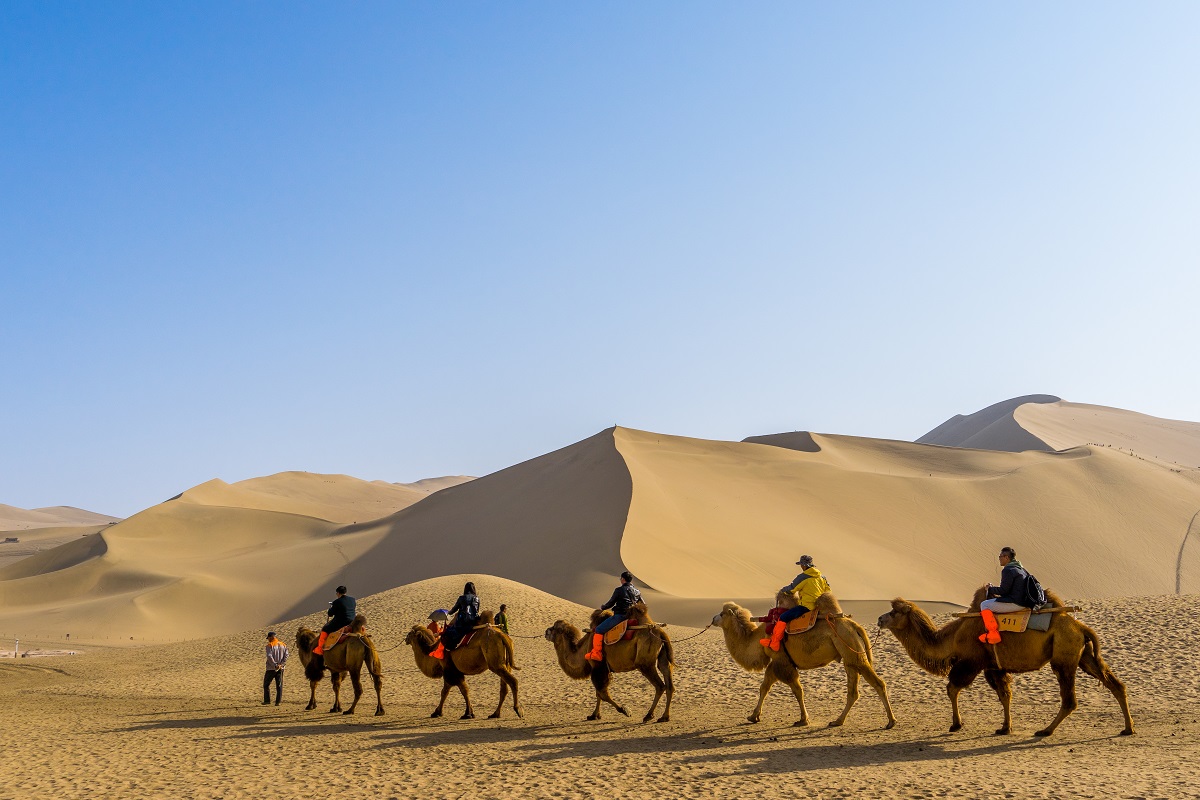
The Silk Road, an ancient network of trade routes, has been a symbol of cultural and commercial exchange between the East and the West for centuries. Stretching from the heart of Asia to Europe, it offers a journey through diverse landscapes, rich histories, and a mosaic of cultures. This guide takes you on a voyage across ten key destinations along the Silk Road, each with its unique allure.
Embarking along the Silk Road is like traveling through the pages of history. It explores ancient civilizations, bustling bazaars, and architectural marvels. This route, once traversed by merchants, scholars, and adventurers, now beckons modern travelers seeking to experience a blend of history, culture, and natural beauty.
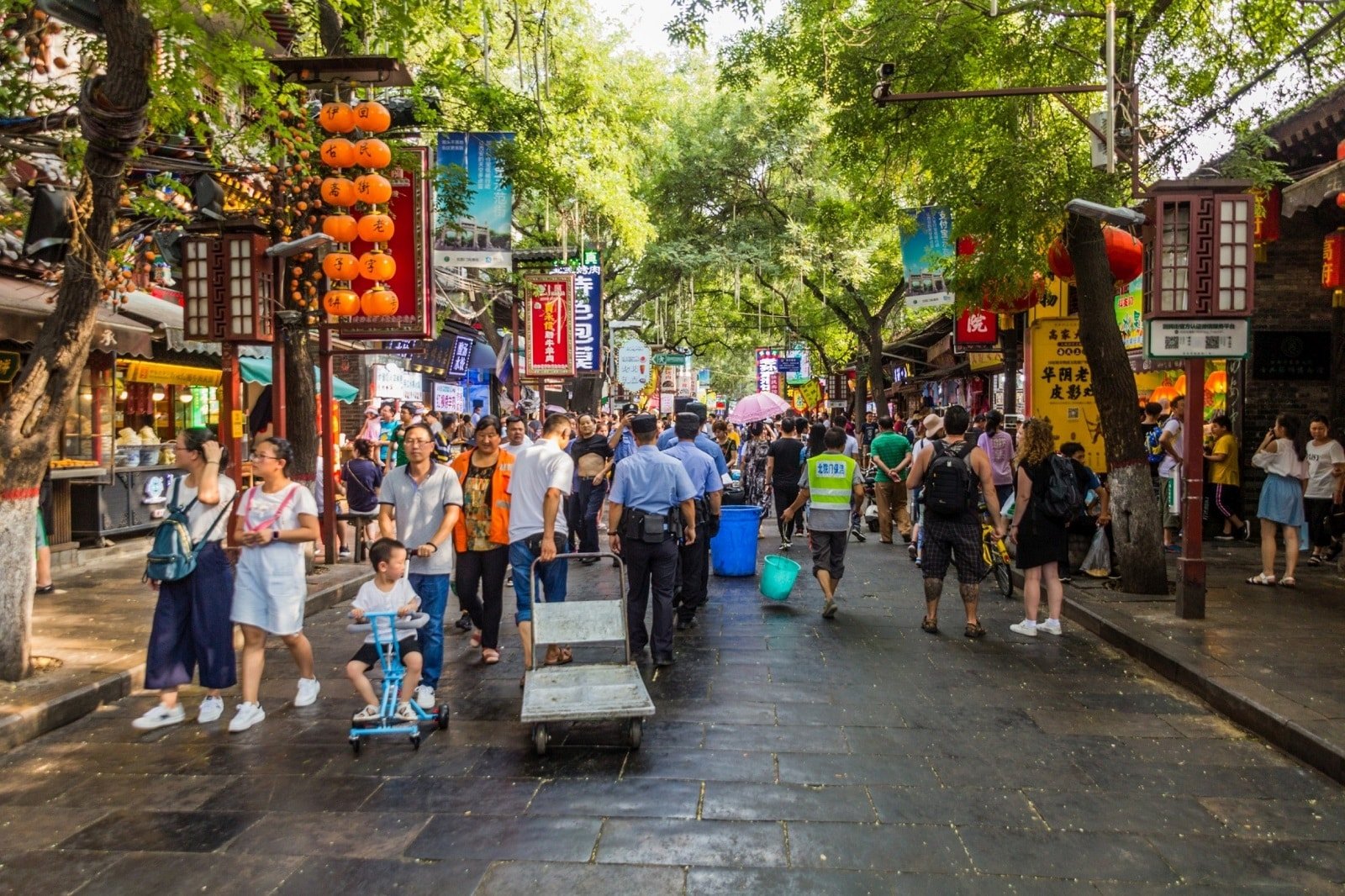
Xi’an, China
Image Credit: Shutterstock / Matyas Rehak
In Xi’an, the starting point of the Silk Road, you’ll witness a remarkable blend of ancient history and modern development. Once a capital of empires, this city is where you can marvel at the famous Terracotta Army, an awe-inspiring legacy of China’s ancient past. As you walk through the city, the ancient walls, standing since the Ming Dynasty, encircle and protect the old city, offering a tangible connection to Xi’an’s historical significance. Don’t miss exploring the Muslim Quarter, a vibrant neighborhood that reflects the cultural exchanges of the Silk Road. Here, amidst bustling markets and aromatic food stalls, you’ll experience the diverse cultural influences that have shaped Xi’an over the centuries. This city is a gateway to understanding the depth and richness of the Silk Road’s history.
Insider’s Tip
Visit the Muslim Quarter to taste Xi’an’s diverse cultural influences.
When To Travel
Spring (March to May) and autumn (September to November) offer pleasant weather.
How To Get There
Fly into Xi’an Xianyang International Airport.
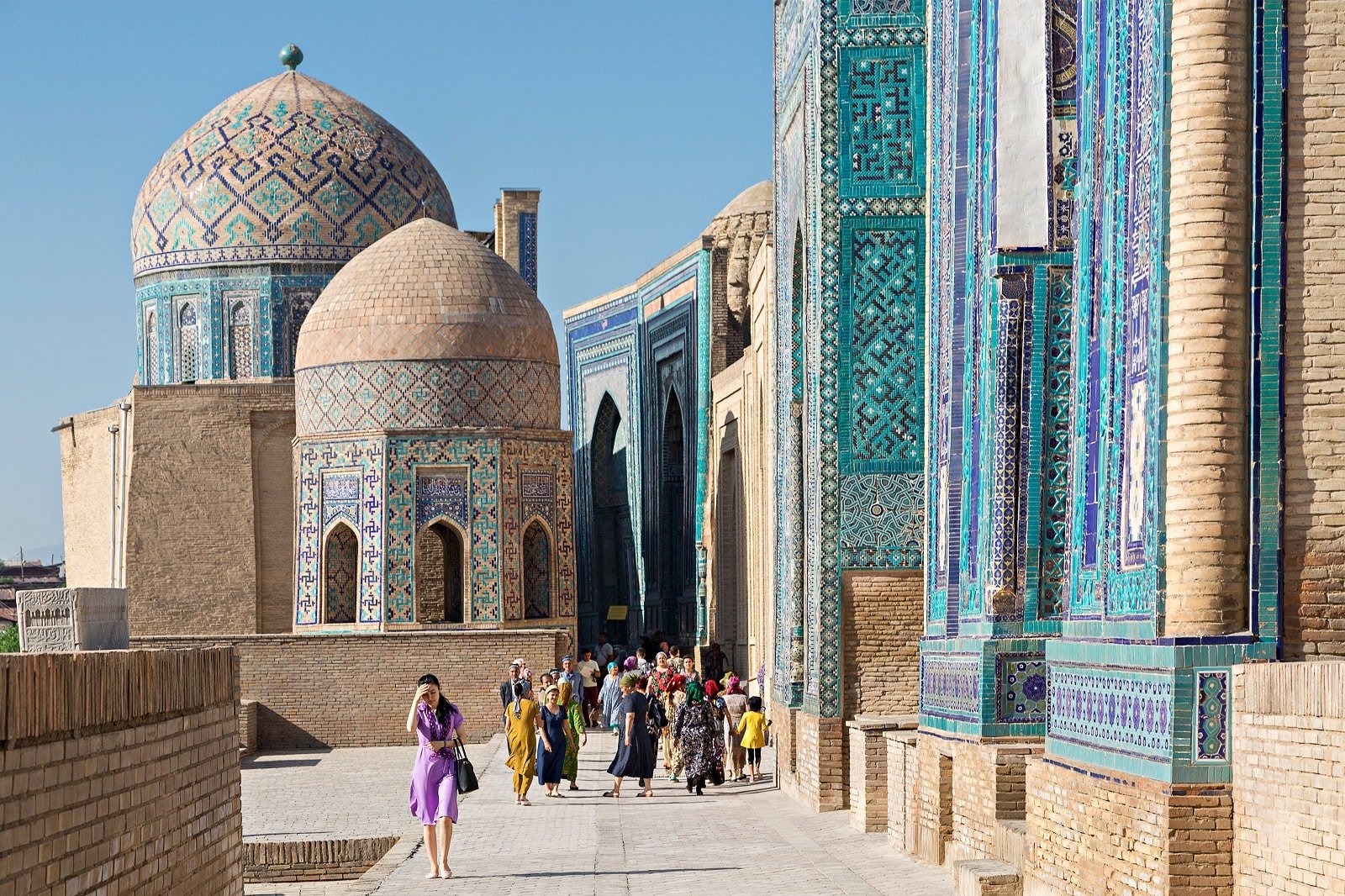
Samarkand, Uzbekistan
Image Credit: Shutterstock / MehmetO
Often referred to as the jewel of the Silk Road, Samarkand, you’ll find yourself amid some of the world’s most majestic Islamic architecture. This city, steeped in history, showcases masterpieces of ancient craftsmanship at every turn. As you wander Registan Square, you’ll be surrounded by grand madrasahs with intricate tile work telling stories of a bygone era. The Shah-i-Zinda, a necropolis lined with beautifully decorated mausoleums, offers a serene yet profound insight into the city’s past. Don’t miss the Bibi-Khanym Mosque, once one of the Islamic world’s largest mosques, as a testament to the city’s historical significance. In Samarkand, every corner, every street, and every building is a piece of the rich tapestry of cultures that met and mingled here, making it a city that truly embodies the spirit of the Silk Road.
Don’t miss the Registan at sunset for a breathtaking view.
Late spring (April to June) and early autumn (September to October).
Fly to Tashkent and take a high-speed train or drive to Samarkand.

Bukhara, Uzbekistan
Image Credit: Shutterstock / monticello
Bukhara is a city recognized as a UNESCO World Heritage site; you’ll step into what feels like a living museum, rich with the history of the Silk Road. This city’s well-preserved medieval center is a labyrinth of historical treasures, where every turn and alleyway leads you deeper into a past era. As you explore, you’ll encounter numerous madrasahs, mosques, and bazaars that have stood the test of time, each telling its story of the city’s vibrant history. Don’t miss the Ark Fortress, a massive structure that has been pivotal in Bukhara’s landscape for centuries, offering insights into the city’s ancient military and political significance. Equally compelling is the Ismail Samani Mausoleum, one of the city’s oldest and most revered buildings, known for its intricate brickwork and architectural beauty. In Bukhara you can walk through, touch, and experience in every corner of this timeless city.
Explore the city’s ancient trading domes for unique souvenirs.
Spring and autumn for the best climate.
Bukhara has its own international airport, or you can travel from Samarkand by train or car.
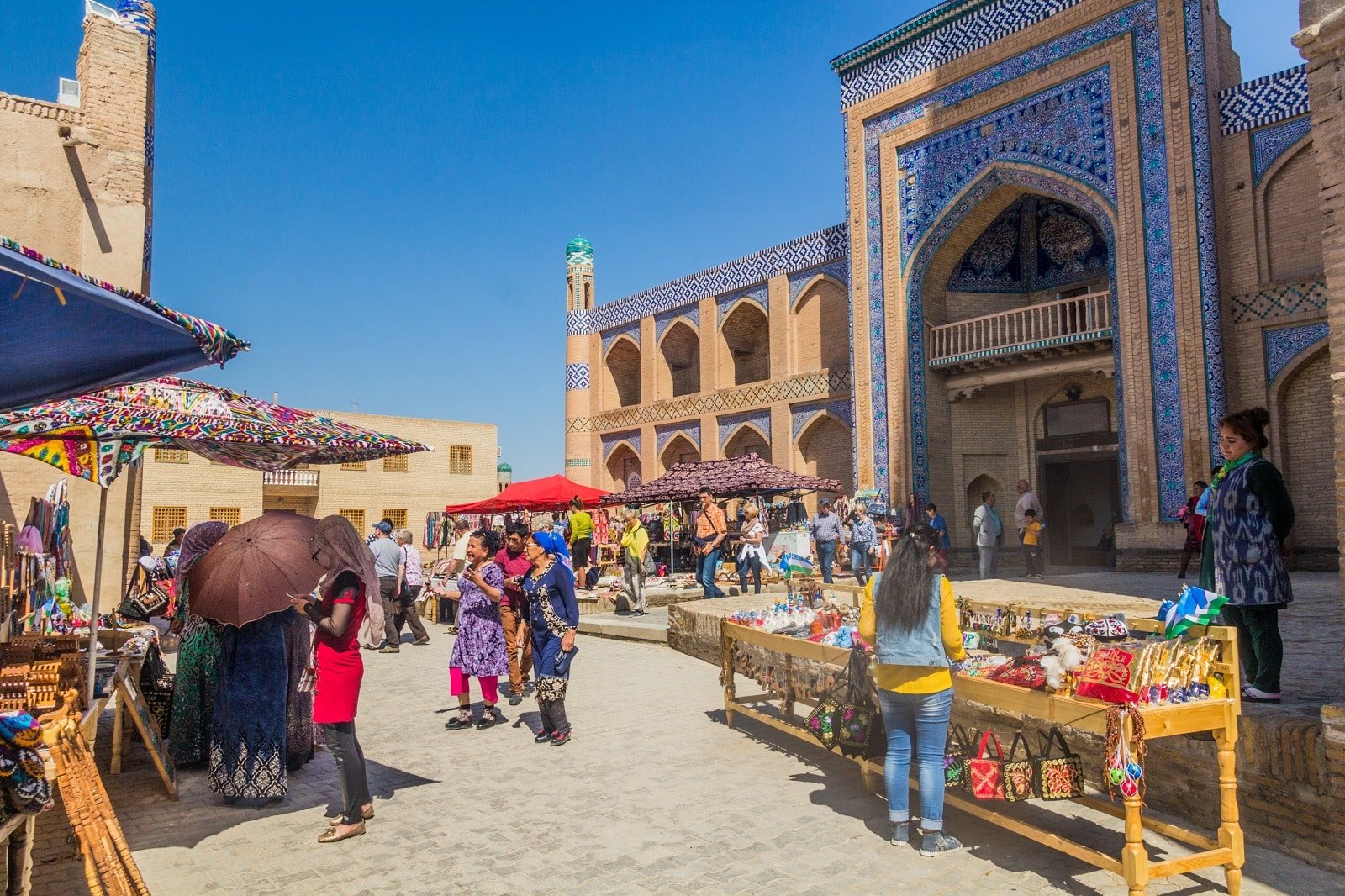
Khiva, Uzbekistan
In Khiva, you’ll find yourself in a city that seems to have halted the march of time, particularly within the walls of its inner town, Itchan Kala. This area, a UNESCO World Heritage site, encapsulates the essence of the medieval Silk Road. Walking through its narrow lanes, you’re surrounded by a history that feels almost tangible. The city’s architecture, characterized by intricate tile work, leaves a lasting impression. Notable landmarks like the Kalta Minor Minaret, with its striking blue tiles, and the Juma Mosque, known for its beautifully carved wooden columns, stand as testaments to the artistic and architectural ingenuity of the past. Khiva isn’t just a stop on your journey; it’s a portal into a world where the legacy of the Silk Road is preserved in every brick and tile.
Climb the Kunya-Ark fortress for panoramic views of the city.
May to early July and September to October.
Fly to Urgench and take a short drive to Khiva.
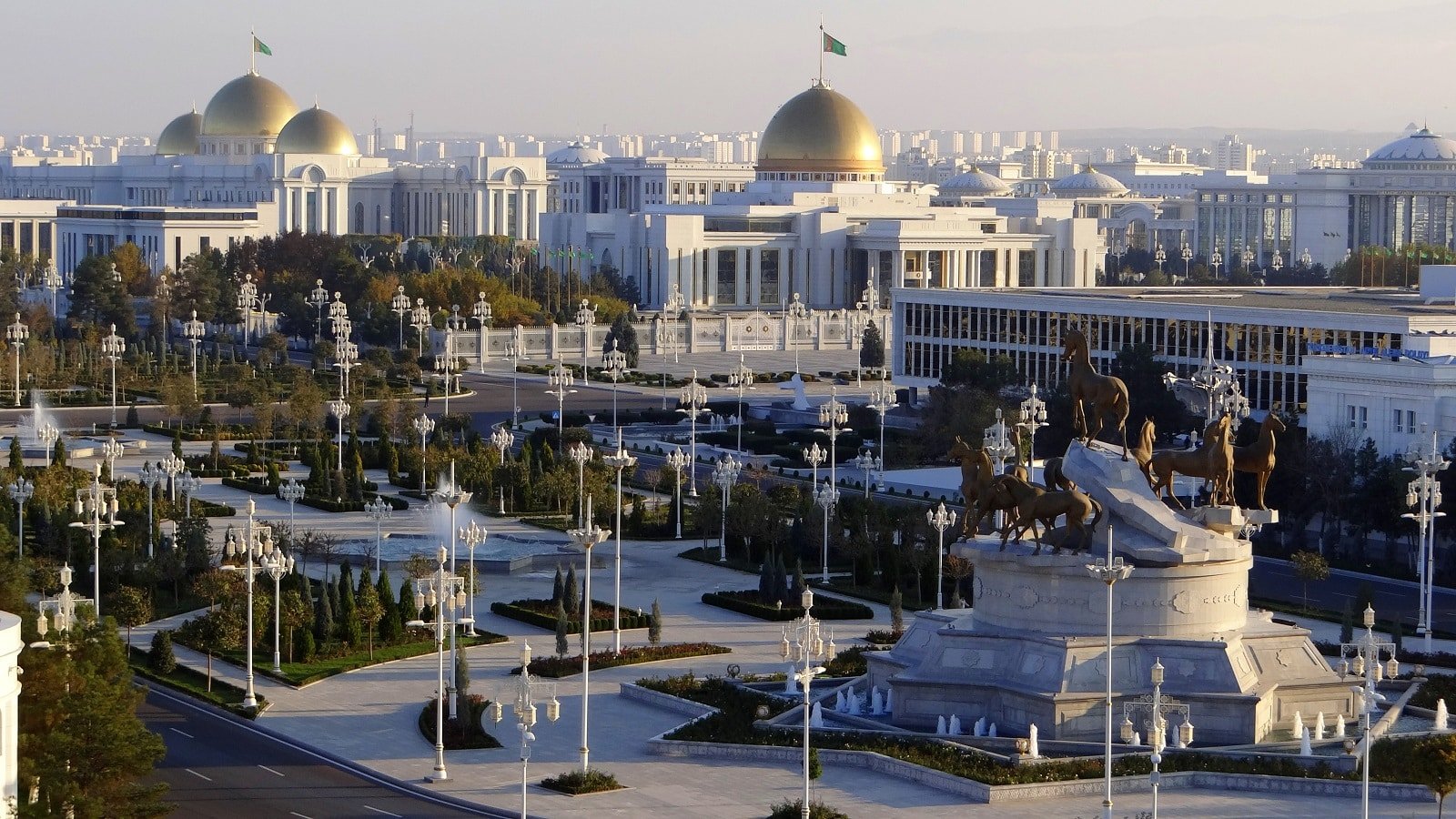
Ashgabat, Turkmenistan
Image Credit: Shutterstock / gonetothemoon
You’ll encounter a city that presents a unique blend of modernity and history in Ashgabat, the capital of Turkmenistan. Known for its striking contemporary architecture and gleaming marble buildings, Ashgabat is a testament to Turkmenistan’s recent development. The city’s wide boulevards and grandiose structures give it a distinctive character. However, beyond its modern facade, Ashgabat serves as a gateway to the rich history of the Silk Road. Just a short distance away lies the ancient site of Nisa, a significant remnant of the Parthian Empire. Here, you can explore the ruins and relics that offer a glimpse into a civilization that once played a crucial role in the history of the Silk Road. Ashgabat, therefore, offers you a unique experience where you can witness the contrast between Turkmenistan’s present and its ancient past.
Visit the Tolkuchka Bazaar for traditional Turkmen crafts.
Spring (April to June) and autumn (September to November).
Fly into Ashgabat International Airport.
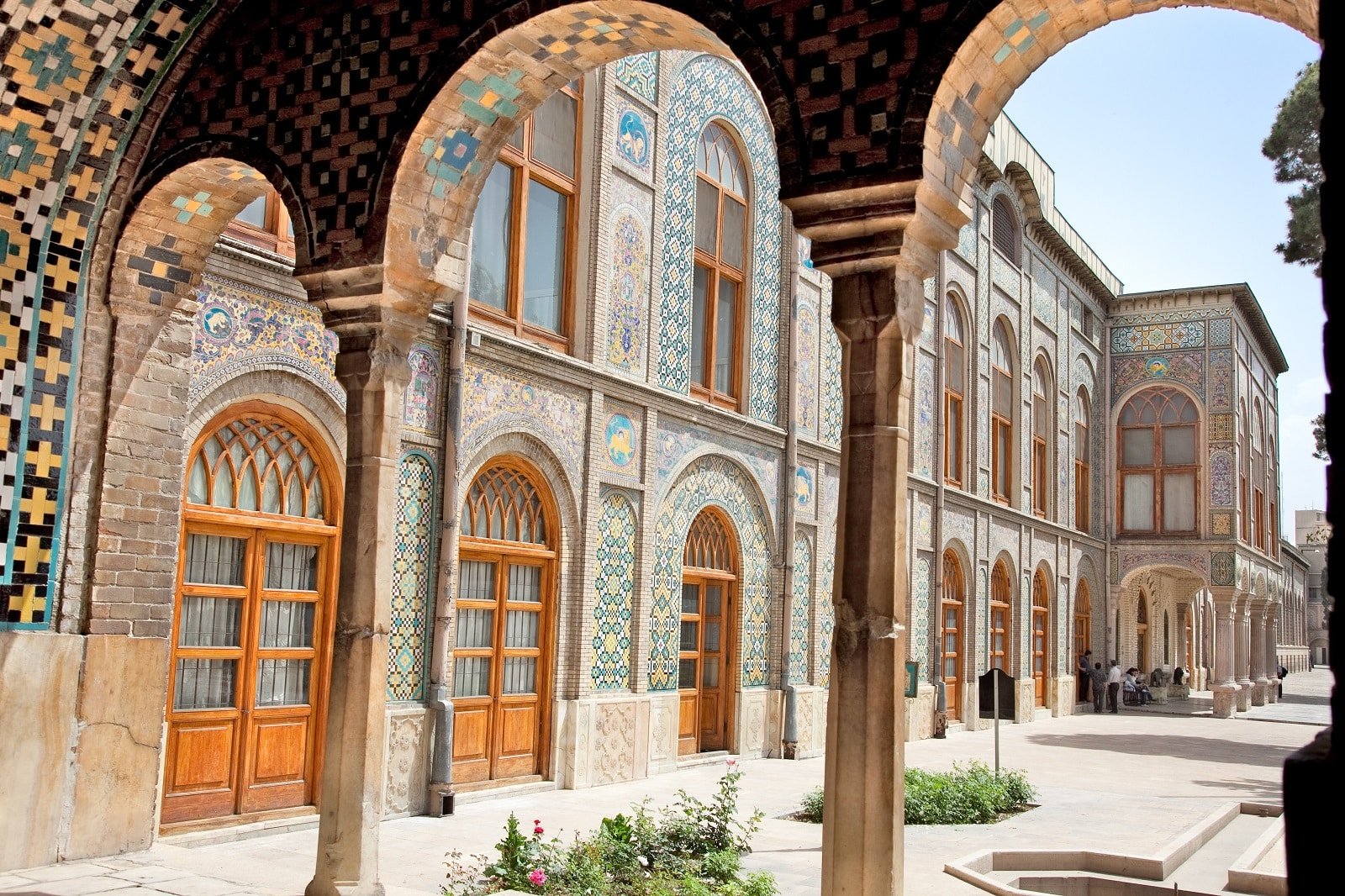
Tehran, Iran
Image Credit: Shutterstock / Aleksandar Todorovic
Tehran, the dynamic capital of Iran, is at the crossroads of modernity and ancient history. This city, pulsating with life, serves as your introduction to the ancient Persian segment of the Silk Road. As you navigate through Tehran, you’ll encounter a rich tapestry of history displayed in its grand palaces, such as Golestan Palace, which echo the opulence of past dynasties. The city’s museums are treasure troves of Persian history, art, and culture, offering insights into the civilization that once thrived along the Silk Road. Don’t miss the chance to experience the lively atmosphere of Tehran’s bazaars, especially the Grand Bazaar, where the hustle and bustle perfectly encapsulate the blend of Iran’s rich heritage with its contemporary urban culture. Every corner in Tehran tells a story, giving you a vivid glimpse into Iran’s past and present.
Explore the city’s bazaars and museums to better understand Persian culture.
Spring and autumn for mild weather.
Fly into Tehran Imam Khomeini International Airport.
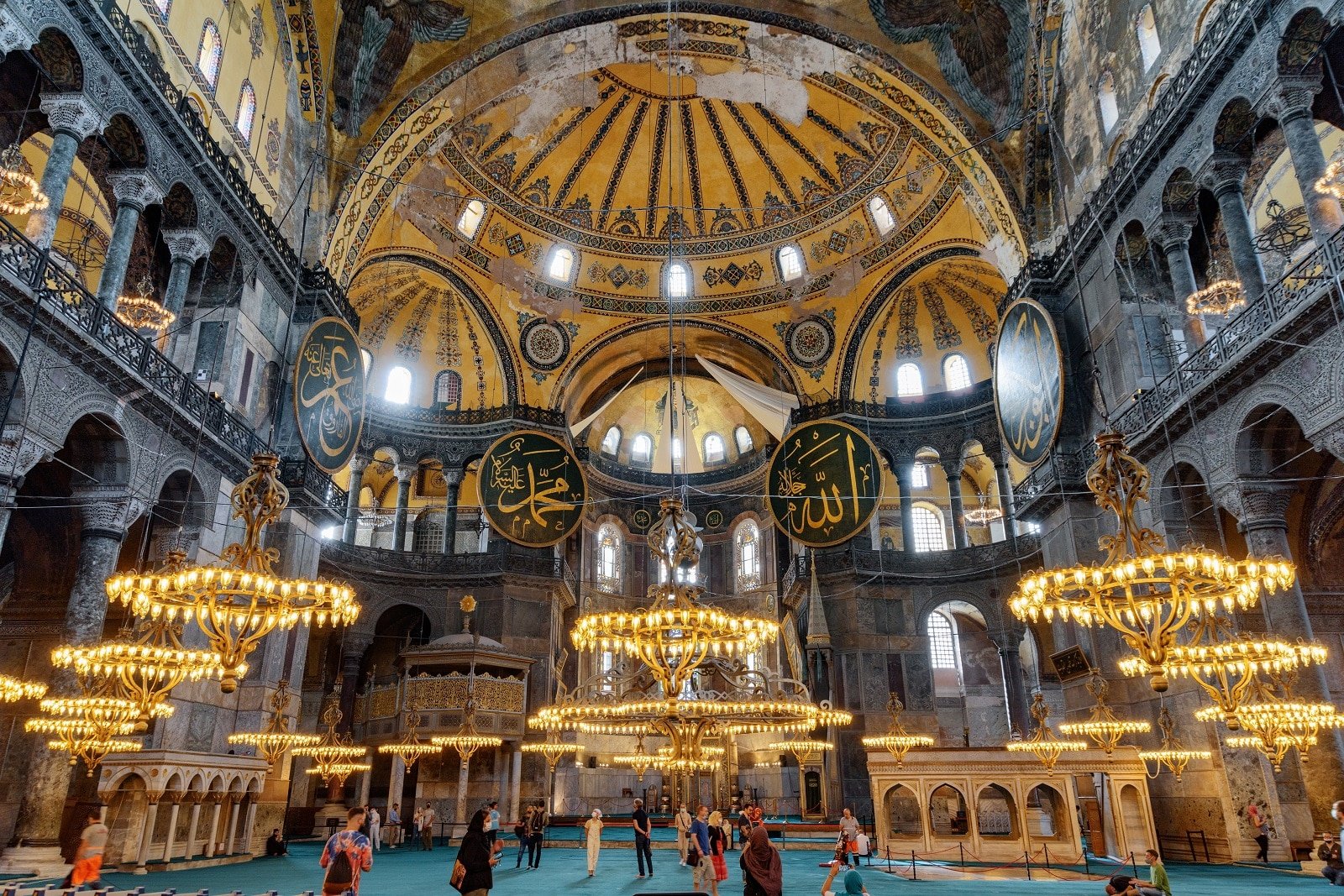
Istanbul, Turkey
Image Credit: Shutterstock / Efired
Istanbul is a city straddling two continents, where you’ll experience the unique blend of Eastern and Western cultures. This historic metropolis, where the Silk Road culminated in Europe, is a melting pot of diverse cultural influences. As you explore, you’ll be drawn to the Hagia Sophia, a marvel of Byzantine architecture that has stood as a testament to the city’s changing rulers and times. Nearby, the Blue Mosque, with its iconic cascading domes and six minarets, offers a glimpse into the city’s Islamic heritage. Another must-visit is the Topkapi Palace, once the heart of the Ottoman Empire, where you can wander through opulent courtyards and view treasures from a bygone era. Each of these landmarks embodies Istanbul’s rich history and tells the story of a city that has been a pivotal crossroads of trade, culture, and civilization.
Take a Bosphorus cruise for stunning views of the city.
Istanbul is accessible via two international airports, Istanbul Airport and Sabiha Gökçen Airport.
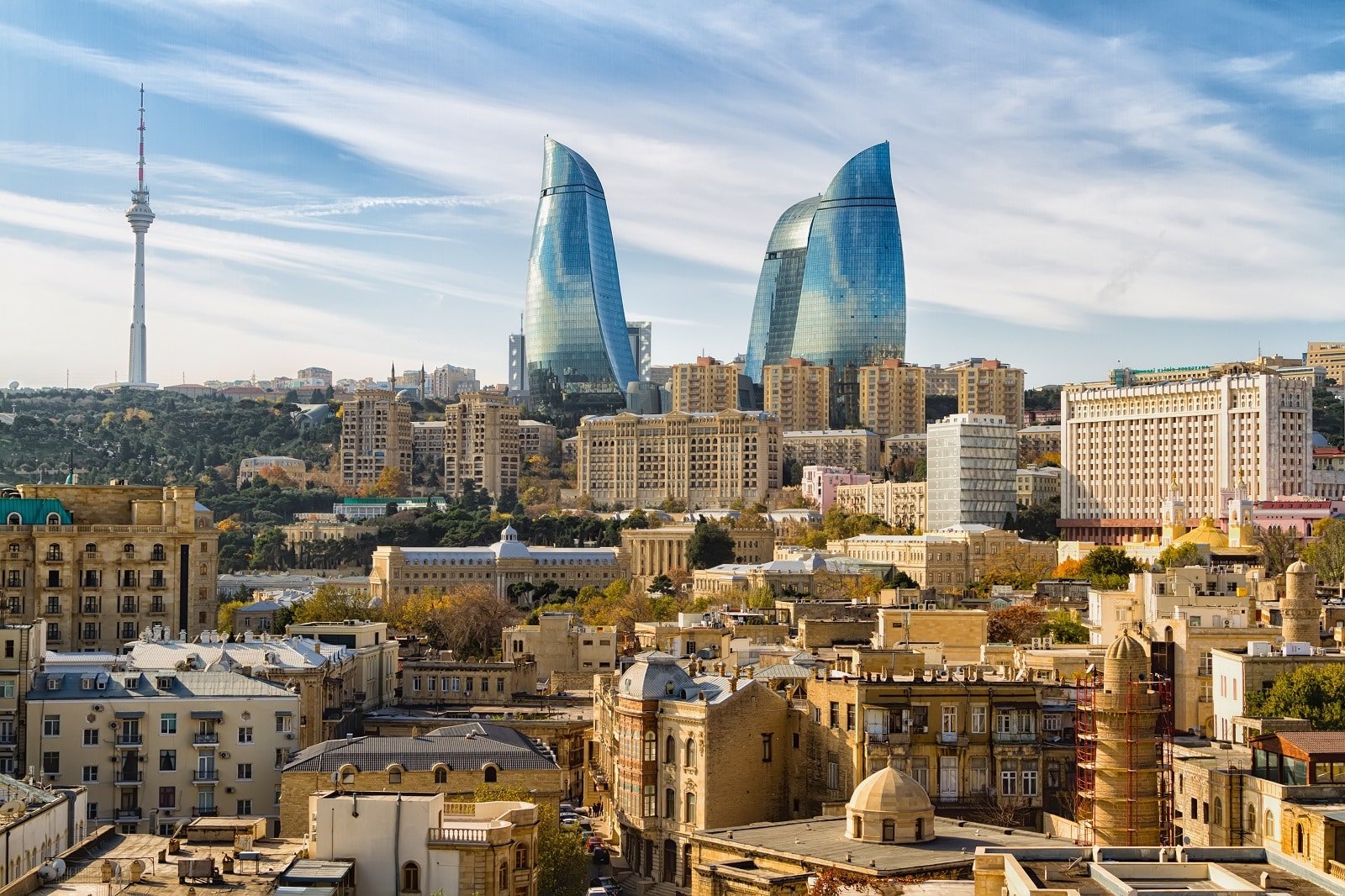
Baku, Azerbaijan
Image Credit: Shutterstock / Milosz Maslanka
You’ll find Baku, Azerbaijan’s capital, a fascinating blend of the ancient and modern. This city, perched on the Caspian Sea, seamlessly merges its historical roots with a contemporary edge. As you wander through the UNESCO-listed Old City, Icherisheher, you’ll be surrounded by well-preserved medieval walls and towers that hark back to Baku’s historical significance. The contrast between the old and the new is striking, especially when you see the ancient caravanserais and the Maiden Tower juxtaposed against the city’s modern skyline, featuring iconic structures like the Flame Towers. Baku’s unique blend of history and modernity makes it a captivating stop on your journey. It offers a glimpse into Azerbaijan’s past and its ambitious leap into the future.
Visit the Old City for a taste of Baku’s ancient heritage.
April to June and September to October for the best weather.
Fly into Heydar Aliyev International Airport in Baku.
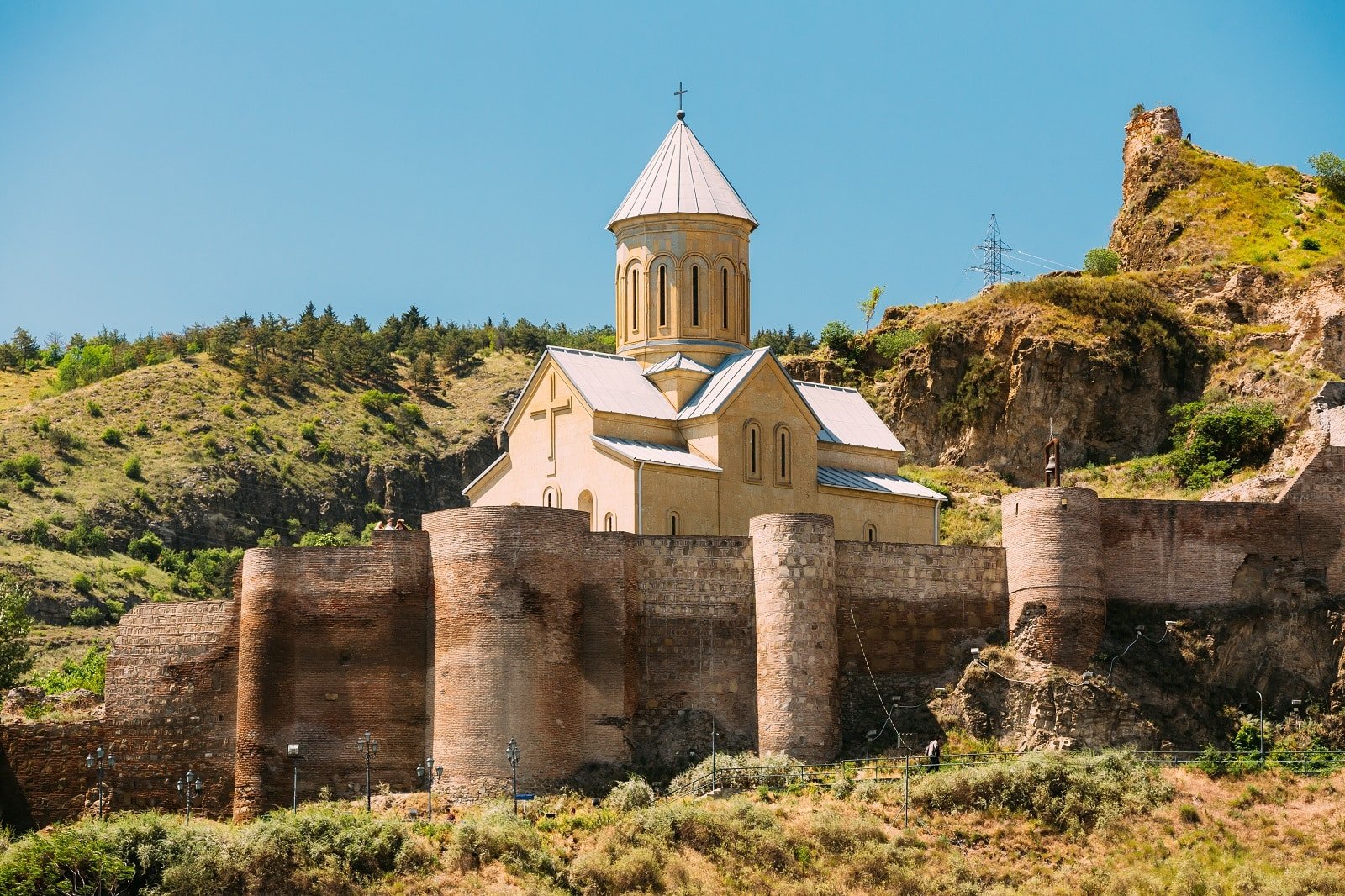
Tbilisi, Georgia
Image Credit: Shutterstock / George Trumpeter
In Tbilisi, Georgia’s capital, you’ll be greeted by a city that charmingly blends diverse architectural styles and enjoys a picturesque setting along the banks of the Kura River. This city, once a vibrant hub on the Silk Road, proudly displays its rich history in every corner. As you explore Tbilisi, you’ll come across caravanserais. In these historic roadside inns, travelers and merchants on the Silk Road would rest and recover. With their distinct architectural styles, the city’s old churches tell stories of Georgia’s deep-rooted Christian heritage. A visit to the Narikala Fortress, an ancient symbol of Tbilisi’s defense, offers panoramic views of the city and a glimpse into its past strategic importance. Tbilisi’s blend of history, culture, and scenic beauty makes it a captivating destination, offering you a unique window into the legacy of the Silk Road.
Enjoy the city’s famous sulfur baths for a unique local experience.
May to June and September to early November.
Fly into Tbilisi International Airport.

Venice, Italy
Image Credit: Shutterstock / Pani Garmyder
Venice is renowned for its intricate network of canals and a rich maritime history; you’ll find yourself at what was once a central European terminus of the Silk Road. Floating on water, this enchanting city is a testament to the cultural and commercial exchanges that flourished along this historic trade route. As you glide along its canals or wander through its narrow alleys, you’ll be surrounded by architectural marvels and artistic masterpieces that reflect the city’s past as a melting pot of cultures. From the grandeur of St. Mark’s Basilica to the opulent Doge’s Palace, every building and artwork in Venice tells a story of a time when the city was a pivotal crossroads between East and West. Your journey through Venice is not just a tour of a city; it’s an exploration of a living museum showcasing the legacy of the Silk Road in its full splendor.
Explore the less crowded neighborhoods of Venice for an authentic experience.
Spring (April to June) and fall (September to November) to avoid the crowds.
Fly into Venice Marco Polo Airport.
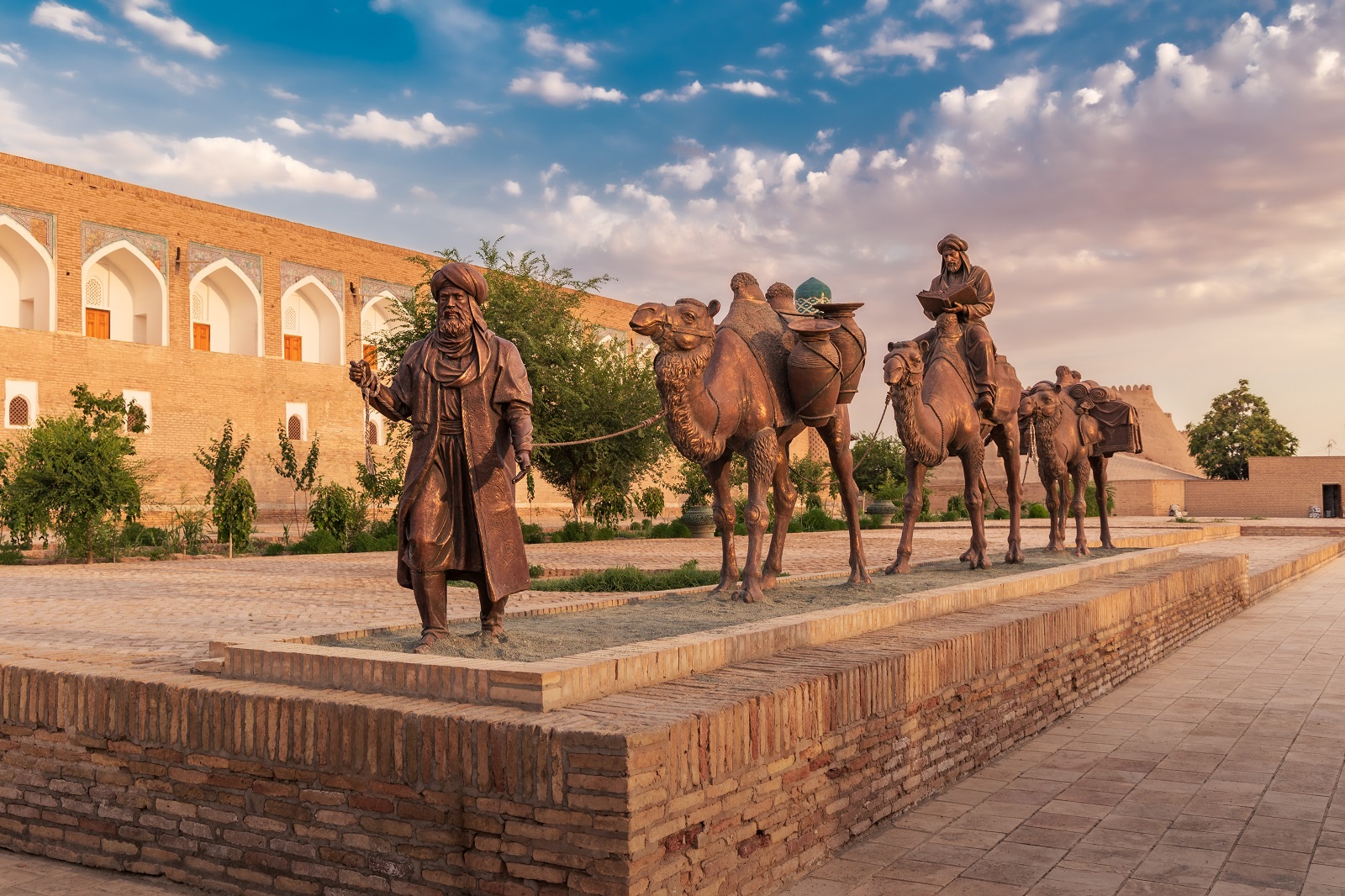
The Bottom Line
Image Credit: Shutterstock / Igor Zuikov
Traveling along the Silk Road transcends a mere geographical journey; it’s an expedition through various epochs and a multitude of cultures. As you traverse this ancient route, each destination unfolds its unique chapter of history, revealing stories that have shaped civilizations. You’ll encounter architectural marvels that are silent witnesses to the past, each with its own tale of glory, conquest, and exchange. These cultural treasures, ranging from grand palaces to ancient bazaars, are not just remnants of history; they are vibrant parts of the living cities and towns you’ll explore. This journey along the Silk Road connects you with the legacy of one of history’s most influential trade routes. It offers a profound understanding of how our world’s cultures and histories are intricately woven together, showcasing the rich tapestry of human connection and exchange that has spanned centuries.
The post Unlock the History of Asia and Europe Along the Silk Road first appeared on Mechanic Insider .
Featured Image Credit: Shutterstock / THONGCHAI.S.
For transparency, this content was partly developed with AI assistance and carefully curated by an experienced editor to be informative and ensure accuracy.
More for You
Connecticut Sun's DiJonai Carrington Mocks Caitlin Clark For Flopping
'The Waltons' Trivia: 15 Shocking Facts You Didn't Know!
Judge Cannon strikes paragraph in Trump classified document indictment
How much cash can a $300,000 annuity generate for me each month?
What Happens to Your Body When You Eat Blueberries Every Day
CNN guest calls out network for saying Israelis rescued from Hamas was 'hostage release'
Miss Maryland USA, an Asian American trans military wife, speaks out against hate
We Discovered a Tiny Home with 2 Bedrooms, a Kitchen, and a Bathroom for Under $20K — and It Includes a Front Porch
McDonald's in a decommissioned plane is the ultimate location to eat your Big Mac
401(k) Confusion Abounds. Workers Think They’re Saving, but They Really Aren’t.
Taylor Swift Interrupts 2nd Edinburgh Show 4 Times to Seek Help
The 50 best liberal places to live in America
I Asked 6 Bakers To Name the Best Boxed Brownie Mix—They All Said the Same Brand
Solar flare blasts out strongest radiation storm since 2017
FDA Updates Recalled Noodles To Highest Risk Level
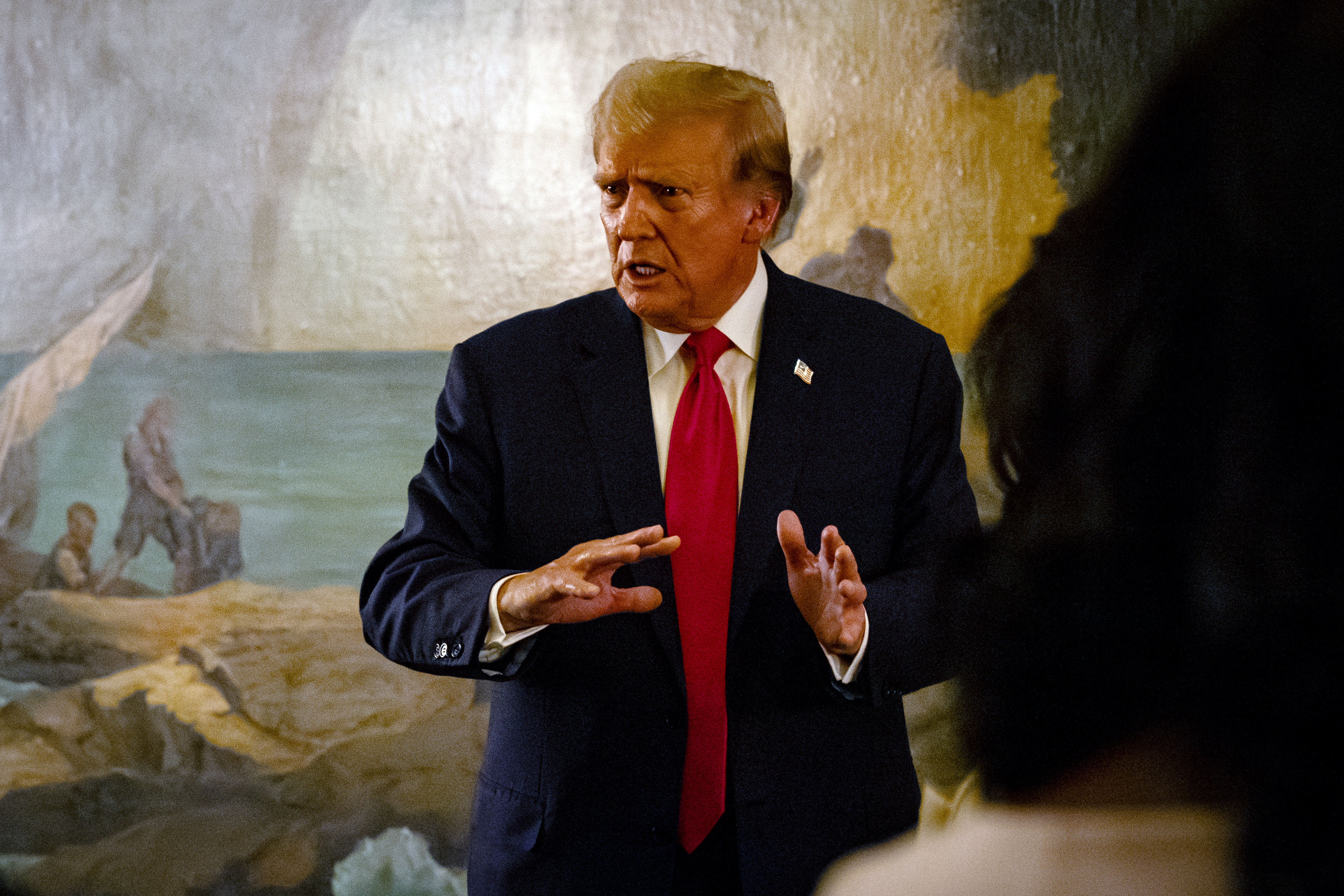
Aileen Cannon Makes Rare Ruling Against Donald Trump's Allies
'There are zero restrictions': For 'the price of a new truck' you can buy your dream retirement home in France or Italy — 3 things to consider before retiring abroad
18 Home Remedies Our Grandparents Used That Actually Work
This State Has the Most Deer in America
Darren Waller Retires from the NFL After Tumultuous Offseason and Kelsey Plum Divorce
- 86-19138970032 (GMT+8 18:00~09:00)

- Beijing Xian Tours
- Shanghai Beijing Tours
- Hong Kong Guilin Tours
- Hangzhou Suzhou Tours
- Kunming Lijiang Tours
- Shanghai Yangtze Cruise Tours
- Chengdu Tibet Tours
- More Short Stay Tours
- China Tours in January
- China Tours in February
- China Tours in March
- China Tours in April
- China Tours in May
- China Tours in June
- China Tours in July
- China Tours in August
- China Tours in September
- China Tours in October
- China Tours in November
- China Tours in December

- High Speed Trains
- China Yangtze Cruise Tour
- Photography
- Desert Adventure
- Ethnic Villages
- Biking Tours
- Kung Fu Tours
- Heritage Sites Exploration
- China Spring Tours
- China Summer Tours
- China Autumn Tours
- China Winter Tours
Notice! 2024 available cruise routes include 4~5 days Chongqing-Yichang(most classic) and 11~12 days Chongqing-Yichang-Shanghai(limited).

- Best-value Yangtze Cruises
- Top Family-friendly Cruise Ships
- Top 3 Luxury Yangtze River Cruises
- Yangtze River Highlights
- Yangtze River Cruise Routes
- Upstream or Downstream?
- Dining & Drinking
- Accommodations
- On-board Activities
- Yangtze Cruise Booking Steps

- Inner Mongolia

- Fanjingshan
- How to Plan Your First China Tour
- How to Plan Beijing Tour
- How to Plan Xian Tour
- How to Plan Shanghai Tour
- How to Plan Guilin Tour
- How to Plan Sichuan Tour
- How to Plan Family Tour
- 2024 China Travel Ideas
- Best Time to Visit China
- What to Pack for Your China Journey
- Make Payment in China
- Updated China Travel News
- Ultimate Chinese Visa Guide
- Chinese Visa Types
- Chinese Visa Requirements
- Do I Need a Visa for China
- Chinese Visa Application
- Chinese Visa Exemptions
- 144-hour Visa Free
- Shenzhen Visa on Arrival
- Hainan 30-day Visa Free
- Embassies & Consulates
- Invitation Letter
- Useful Visa FAQs & Tips
- Entry Regulations
- Baggage Allowance
- Customs Declaration
- Exit Regulation
- How to Book Train Tickets
- How to Collect Train Tickets
- How to Cancel & Alter Train Tickets
- How to Read Train Tickets
- China High Speed Train Types
- Seats Class & How to Choose
- Friendly Facilities on the Train
- The Train Station Departure Process
- Available Food and Drinks on the Train
- Western Toilets on the Train
- Luggage Racks & Baggage Allowance
- Beijing Train Stations
- Shanghai Train Stations
- Guilin Train Stations
- Xian Train Stations
- Chengdu Train Stations
- Hong Kong West Kowloon Railway Station
- Beijing - Xian
- Beijing - Shanghai
- Guangzhou - Shanghai
- Shenzhen - Shanghai
- Chengdu - Xian
- Shanghai - Hangzhou
- Shanghai - Xian
- Chengdu - Chongqing
- Kunming - Lijiang
- Beijing Capital International
- Beijing Daxing International
- Shanghai Pudong International
- Shanghai Hongqiao International
- Guangzhou Baiyun International
- Hangzhou Xiaoshan International
- Chengdu Tianfu International
- Chengdu Shuangliu International
- Xian Xianyang International
- Shanghai - Beijing
- Hong Kong - Shanghai
- Guangzhou - Beijing
- Chengdu - Lhasa
- Shanghai - Guilin
- Shanghai - Sanya
- Travel in Spring Season
- Travel in Summer Season
- Travel in Autumn Season
- Travel in Winter Season
- Weather in January
- Weather in February
- Weather in March
- Weather in April
- Weather in May
- Weather in June
- Weather in July
- Weather in August
- Weather in September
- Weather in October
- Weather in November
- Weather in December
- Top 10 China Destinations
- Top 15 Things to Do
- China World Heritage Sites
- Top 10 Best Natural Beauties
- Top 10 Museums in China
- Top 10 Old Towns & Villages
- Five Great Mountains in China
- Top 10 Monasteries & Temples
- Top 10 Ski Resorts
- Top 10 Beautiful Lakes in China
- 7 Best Beaches in Sanya
- Top 6 Beautiful Waterfalls
- Panda Volunteering
- Having fun on Ice and Snow Festival
- About Us Who We Are Our Team Why Travel with Us Feedback & Reviews Travel Stories Travelers' Gallery Payment Guide Customer Support Contact Us
- Tour Experiences
Destinations
- Travel Guide

My Review on trip to Beijing, Xian, Shaanxi, Zhangye, Gansu, Silk Road with China Discovery
I traveled to Beijing, Xian, Shaanxi, Zhangye, Gansu, Silk Road with China Discovery' s private tour package in May, 2024. Below are my review and tips I want to share with China Discovery's customers. Feel free to contact China Discovery for more details.

Ms. Samantha Peng of China Discovery responded to my email enquiry for my 1st visit to China with my aunt in mid-May this year. Being 72 and 65 years old, we had several concerns with travelling to China by ourselves, as we could only speak very little Mandarin.
Samantha was very professional and efficient in arranging our customized 9-day itinerary to Beijing, Xian and Zhangye. She coordinated an itinerary that met all our wish-lists. Samantha was always prompt in updating and responding to my enquiries. Her cheerful and caring personality can be felt in her email correspondence.
The Beijing and Xian hotels she booked for us were comfortable which helped us feel rested and ready for our various sightseeing.
The English-speaking local guides Lilly, Ben and Vivian were very knowledgeable and passionate in sharing with us the rich and interesting history of the destinations we visited during our trip. And the local drivers careful driving ensured our sightseeing journey was safe and comfortable.
The local guides were very mindful in ensuring that food met our dietary restrictions. We were able to enjoy delicious local cuisines in the cities we visited.
Thank you, Samantha, Lilly, Ben, Vivian, and China Discovery team, for helping make my 1st China visit an unforgettable experience.
Your country’s rich heritage, diverse culture and friendly citizens have left a deep positive impression on us.
I am already thinking of visiting other cities in China with help from Samantha and China Discovery team.
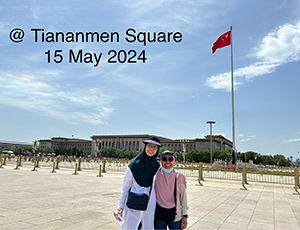
See more reviews on Tripadvisor See all reviews from our guests
Most Valuable Reviews Our Customers listed on TripAdvisor
- Best Tour Ever Organized by Wendy Dan.
- 69-day Private Tour to Discover a lot of China
- 2 Week Family Vacation in China
- Xian, Terracotta Warriors, Using High Speed Train
- Fantastic 2 Weeks around China
- Mt. Huangshan and Anhui Villages 3 Day Tour
- Private Family Tour of Beijing, Sichuan and Xian
- Solo Tour (Beijing/Xian/Yunnan/Yangtze/Beijing)
More City Reviews from Our Customers
- All Beijing Travel Reviews
- All Xian Travel Reviews
- All Shanghai Travel Reviews
- All Guilin Travel Reviews
- All Chengdu Travel Reviews
- All Zhangjiajie Travel Reviews
- All Yunnan Travel Reviews
- All Huangshan Travel Reviews
- All Yangtze River Travel Reviews
- All Tibet Travel Reviews
- All Silk Road Travel Reviews
- All Shanxi Travel Reviews
Amazing Travel Stories
Besides the origin feedback telling their satisfaction about their travel, some customers also nicely shared their travel stories in details. You can read their stories and seek for more inspiration.
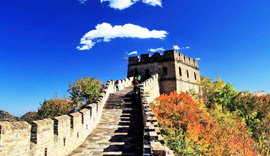
Elie & Marie has successfully enjoyed their wonderful and romantic 10 week couple's private vacation and experienced a lot of interesting things in 32 destinations around vast China!
- Elie (Belgium)
- (69 Days) 2019.09.04~2019.11.11
- Beijing - Hohhot - Datong - Pingyao - Luoyang - Xian - Jiayuguan ... Chengdu - Yangtze - Zhangjiajie - Yunnan - Guilin... Hangzhou - Shanghai

We customized three big group China trips for tens of VIPKid English teachers and their family members to visit Xian, Shanghai, etc. from Beijing and meet their students off Internet in China in 2019!
- VIPKid Teachers (USA/Canada)
- (9-21 Days) 2019
- Beijing - Xian - Shanghai - Suzhou –Shanghai - Hangzhou - Huangshan... Yangtze Cruise...Chengdu - Beijing
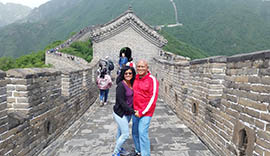
Winston and his wife have traveled to many world places during the past 21 years and experienced the best vacation this time to explore China's west and east, north and south parts!
- Winston (USA)
- (22 Days) 2019.05.17~2019.6.07
- Beijing - Xian - Lhasa - Chengdu - Guilin - Longsheng - Yangshuo - Chongqing - Yangtze River Cruise - Yichang - Shanghai - Suzhou - Beijing

Jack and their partners would get back to Tibet from the distant USA every year, and until now, they’ve visited Tibet for 6 times. Every time, they had wonderful time enjoying the highlights of Tibet, and helped the blind, brought them hope of life and encouraged them.
- Jack (USA)
- (6 Times) 2013~2019
- Tibet

The distinctive black and white animal is a national treasure in China and one of the rarest, most endangered bears in the world. A one-on-one encounter with a giant panda is a bucket list highlight and a must-do when you are in China. The time I spent witnessing such human dedication is truly eye-opening...
- Panda Volunteer Star: Ms. Rachel Grant (British)
- Chengdu - Dujiangyan
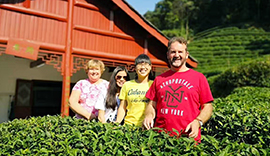
Lawson's Family had an amazing family China tour with their two adopted daughters from China and touchingly helped their adopted ethnic little girl regain confidence.
- Lawson (UK)
- (19 Days) 2018.10.17~2018.11.04
- Shenzhen - Xiamen - Yongding - Guangzhou - ... - Yangshuo - Guilin - Chengdu - Hangzhou - Shanghai - Suzhou - Shanghai
Recommended Tours
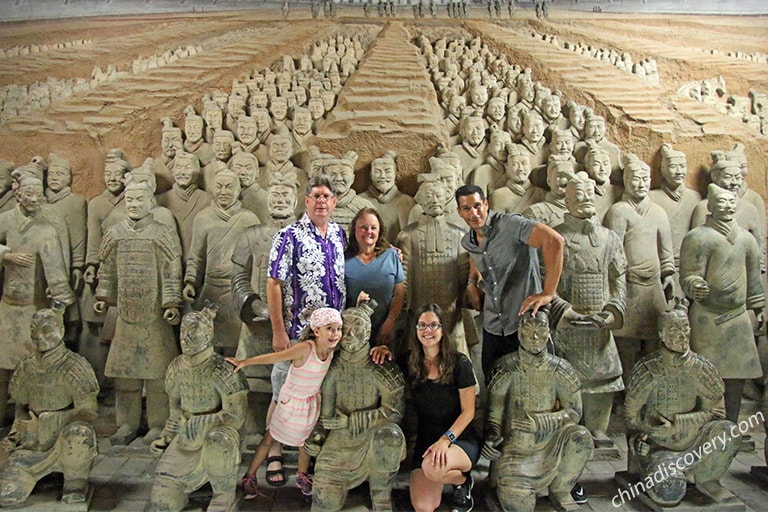
Beijing / Xian / Shanghai
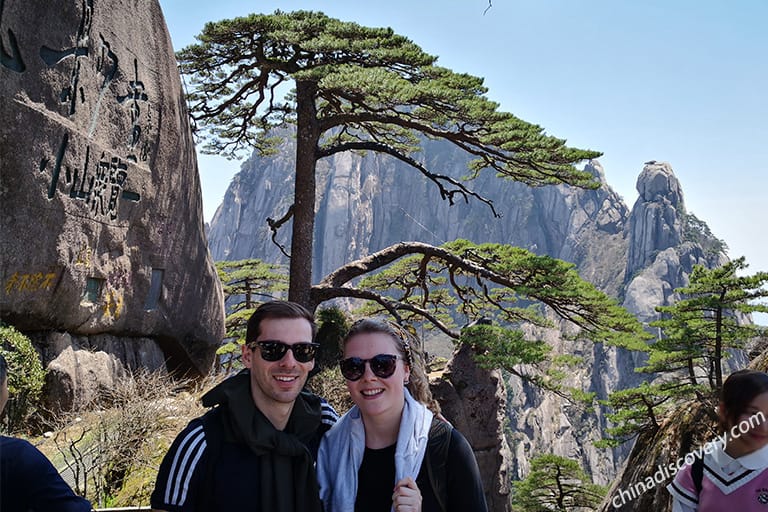
Shanghai / Suzhou / Hangzhou / Huangshan
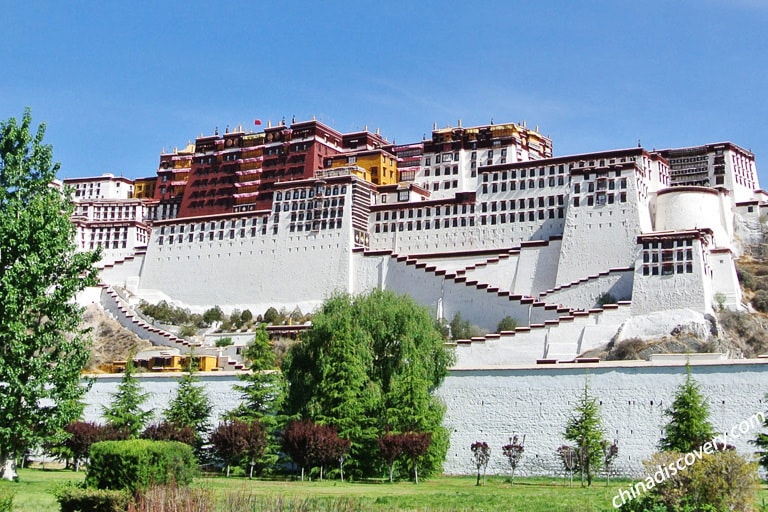
Shanghai / Guilin / Yangshuo / Guilin / Chengdu / Lhasa / Xian / Beijing
Have a question? Get answers from our travel experts or guests
- Your Question:
- Your Email:
Start planning your tailor-made holiday to China by contacting one of our specialists. Once inquired, you’ll get a response within 0.5~23.5 hours.

- Affordable and valuable price
- 100% tailor-made packages
- Highly rated customers reviews
- Efficient customer support
China Tours
- Top 10 China Tours
- Classic China Tours
- China Tours from Beijing
- China Tours from Shanghai
- China Tours from Hong Kong
- China Tours from Chengdu
- Short China Trips
- Customize China Tour
- China Panda Tours
- Family Tour with Kids
- High-Speed Train Tour
- Silk Road Travel
- Yangtze River Cruise
- Hiking & Trekking Tours
- Photography Tours
- China Minority Travel
- Beijing Shanghai Tours
- Shanghai Yangtze Tours
- Chengdu Jiuzhaigou Tours
- Chengdu Lhasa Tours
- Suzhou Hangzhou Tours
- Guilin & Yangshuo
- Zhangjiajie
“Very good experience”
“WONDERFUL 25 DAYS IN CHINA - PRIVATE TOUR”
“Awesome China tour from northeast to southwest”
Any questions, please email us at: [email protected] or call us at: 86-19138970032 (Monday-Friday 9 a.m. to 6 p.m. GMT+8)
- Terms & Condition
- Privacy Policy
- Customer Support
Copyright © 2011-2024. All rights reserved.
Cookie policy
We use cookies to give you the best experience on our website. Continue using our website means you agree with our cookie policy. For more info, please read here .

IMAGES
VIDEO
COMMENTS
Silk Road Travel is the top China travel agency, offering all the exciting and exclusive Silk Route Trips to China, 5-25 days Silk Road Tours to Central Asia. Let's travel talk. Since 2003, over 15000+ Customers Explored Silk Road with us . [email protected] +86 135 6583 4056; Search. Top Silk Road Destinations. Beijing;
Days 12-14. Continue to Song-Kol lake at a breathtaking 3,015 metres. Drive up in around four hours from Kochkor on Issyk Kol's western side, or take one to two days hiking and horse-trekking ...
The temperature in Turpan can reach 40°C (104°F) in the summer and -20°C (-4°F) in January. Winter is long and bleak. The best time to travel the Silk Road is from May to October. Weather conditions are pleasant from late spring to early autumn, with an average temperature of 15°C (59°F).
Urumqi/ Shanghai from $3284. 3-Day Dunhuang Tour from $619. The Silk Road is a historically important international trade route between China and the Mediterranean. Because China silk comprised a large proportion of the trade along this ancient road, in 1877, it was named the 'Silk Road' by Ferdinand von Richthofen, an eminent German geographer.
Caravanistan helps you get the most out of your Silk Road trip. Both for independent travelers and guided trips. Hi there! We're Caravanistan and we help you make the most of your Silk Road trip in 4 ways: Leading travel guide for Central Asia. Silk Road Visa shop. Custom tours for unique adventures. Car and motorbike rental.
Oct 9-24, 2025. Show Details. Journey to the ancient crossroads of Asia and explore 5 fabled Silk Road countries—Kazakhstan, Kyrgyzstan, Uzbekistan, Tajikistan and Turkmenistan. Venture to the ...
The Silk Road trade route was recognized about 2,100 years ago in China for its trade and travel from China's Han Empire to Central Asia and Europe, and it revolutionized the world until it declined during the Ming Dynasty (1368-1644). Our Silk Road travel guide offers best places to visit, top things to do, how to plan your Silk Road trip ...
Featuring the Five "Stans" of Turkmenistan, Uzbekistan, Tajikistan, Kyrgyzstan, and Kazakhstan. 17 days from $8,795. Explore the fabled Silk Road as you journey through Central Asia's Five 'Stans: Turkmenistan, Uzbekistan, Tajikistan, Kyrgyzstan, and Kazakhstan. Request a Brochure. Make a Reservation.
Price from $946. 11 Days In-depth Wild Silk Road Adventure Tour. An in-depth Silk Road adventure takes you to explore the most outstanding destinations in northwest China's Gansu and Xinjiang and encounter both historic heritages and amazing natural landscapes. Price from Request.
Silk Road Tours 2024/25; China & Central Asia Exploration. As the world's oldest trade route, the Silk Road serves not only as a conduit for commerce but also as a vibrant pathway for art and culture. Our carefully curated private Silk Road tours offer an accessible and flexible pace, enabling participants of all backgrounds to immerse ...
Travelling most of the Silk Road, like in the famous expeditions mentioned above are rare exceptions to the normal trans-Silk-Road transit. Even today, travelling the entirety of any of the Silk Road routes is a Herculean task, and involves a mastery of visa applications, more than a month of constant travel, lots of money, and an ironclad will.
We have been traveling the Silk Road since 2008 and have been writing about it since 2011. Below, we will try to introduce you to Silk Road travel in a condensed format, and link out to some of the hundreds of articles found on this website if you want to delve in deeper. Enjoy the trip! Steven & Saule. Choose the open road - Pamir Highway ...
An ideal Silk Road trip would include overnight or several-day stops in Lanzhou, Zhangye, Jiayuguan, Dunhuang, Turpan, Urumqi (or Tian Chi Lake) and Kashgar. Tips and recommendations. Most of this route follows extreme desert, so pack for dry heat. Carry plenty of sunscreen and breathable clothing that covers the skin.
Travelling along the Chinese Silk Road is an incredible experience. You'll get to visit the Terracotta Warriors in Xi'an, taste some delicious noodles in Lanzhou, visit the famous Mogao Caves in Dunhuang, and check out the famous flaming cliffs of Turpan. 6 - Kashgar, China's westernmost city: Closer to Baghdad than Beijing, Kashgar is ...
What people love about Silk Road Tours. Habib Al-Hamid 7 Dec, 2023. 4. Javlon and Shaxnoza were great english speaking guides. Enjoyed all the historic sites and had excellent accommodations while staying in Tashkent, Samarkand, Bukhara, and Khiva. A suggestion for future tours is to provide an option when visiting Samarkand and Bukhara ...
Silk Road travel guide. The Silk Road is best described as a collection of intricate paths that form a network (so intricate that a travel guide is definitely required reading). Beginning in the former capital of China, Xī'ān, the route crosses mountain-tops and desert plains into Central Asia. The Silk Road played a considerable role in ...
The ancient Silk Road is a long tourist travel route involving lots of Chinese destinations, mostly located in Northwest China. A Silk Road travel can be flexibly customized according to travelers' length of vacations, departure city, individual preferences and budget. It can take a few days to a few weeks and months.
A thousand years of Silk Route history lives on in the many and varied outposts and trading hubs that popped up along the route, from Japan to Azerbaijan. Here are 20 modern-day Silk Road cities that are worth visiting as part of any Silk Route adventure. Cities covered in this guide: 1. Istanbul, Turkey.
With initiatives dating back to 1994, UN Tourism was an early advocate of the tourism potential of the Silk Road.Today, 33 Silk Road Member States (Albania, Armenia, Azerbaijan, Bangladesh, Bulgaria, China, Croatia, DPR Korea, Rep. Korea, Egypt, Georgia, Greece, Indonesia, Iran, Iraq, Israel, Italy, Japan, Kazakhstan, Kyrgyzstan, Malaysia, Mongolia, Montenegro, Pakistan, Romania, San Marino ...
The Silk Route can be visited during all times of the year except for rainy season and the peaks days of the winter season when the roads are blocked with heavy snow. ... One of the most famous attractions on the Silk Route Sikkim, Old Baba Mandir calls for a short halt in your journey. Often visited by people travelling to Tsomgo Lake, this ...
The Silk Road in China has a wealth of fascinating and beautiful destinations and attractions. This ancient Chinese trade route has many contrasting things to do. A suggested Silk Road itinerary with all 12 recommended destinations is: Luoyang-Xi'an-Tianshui-Lanzhou-Ningxia (Guyuan, Zhongwei, Yinchuan) - Gannan-Zhangye-Jiayuguan ...
Cities grew up along the Silk Roads as essential hubs of trade and exchange, here merchants and travellers came to stop and rest their animals and begin the process of trading their goods. From Xi'an in China to Bukhara in Uzbekistan, from Jeddah in Saudi Arabia to Venice in Italy, cities supplied the ports and markets that punctuated the trade routes and gave them momentum.
Ways to Travel the Silk Road by Train. 1. Republics of the Silk Road by Private Train. 17-day rail journey: Moscow to Almaty via Central Asia aboard the luxury Golden Eagle private train. Stops in 6 countries: Russia, Kazakhstan, Kyrgyzstan, Tajikistan, Turkmenistan, Uzbekistan. See trip.
The Silk Road facilitated trade from Asia to Europe and vice versa for more than a millennium. Find out why its fabric finally started to fray. ... And tempted by the idea that there was a better way to travel, these traders took to the seas, which weren't as affected by the tolls and the bandits that were always involved in the traditional ...
The Silk Road, an ancient network of trade routes, has been a symbol of cultural and commercial exchange between the East and the West for centuries. Stretching from the heart of Asia to Europe ...
My Review on trip to Beijing, Xian, Shaanxi, Zhangye, Gansu, Silk Road with China Discovery. I traveled to Beijing, Xian, Shaanxi, Zhangye, Gansu, Silk Road with China Discovery' s private tour package in May, 2024. Below are my review and tips I want to share with China Discovery's customers.
Silk Route an 'anchor for new horizons' Gulf Cooperation Council, Türkiye extend joint action plan to 2029. Kremlin says Russia sees dynamics in rising popularity of right-wing parties in Europe.
Prison consultant representing Trump ally explains what he tells all his clients before incarceration